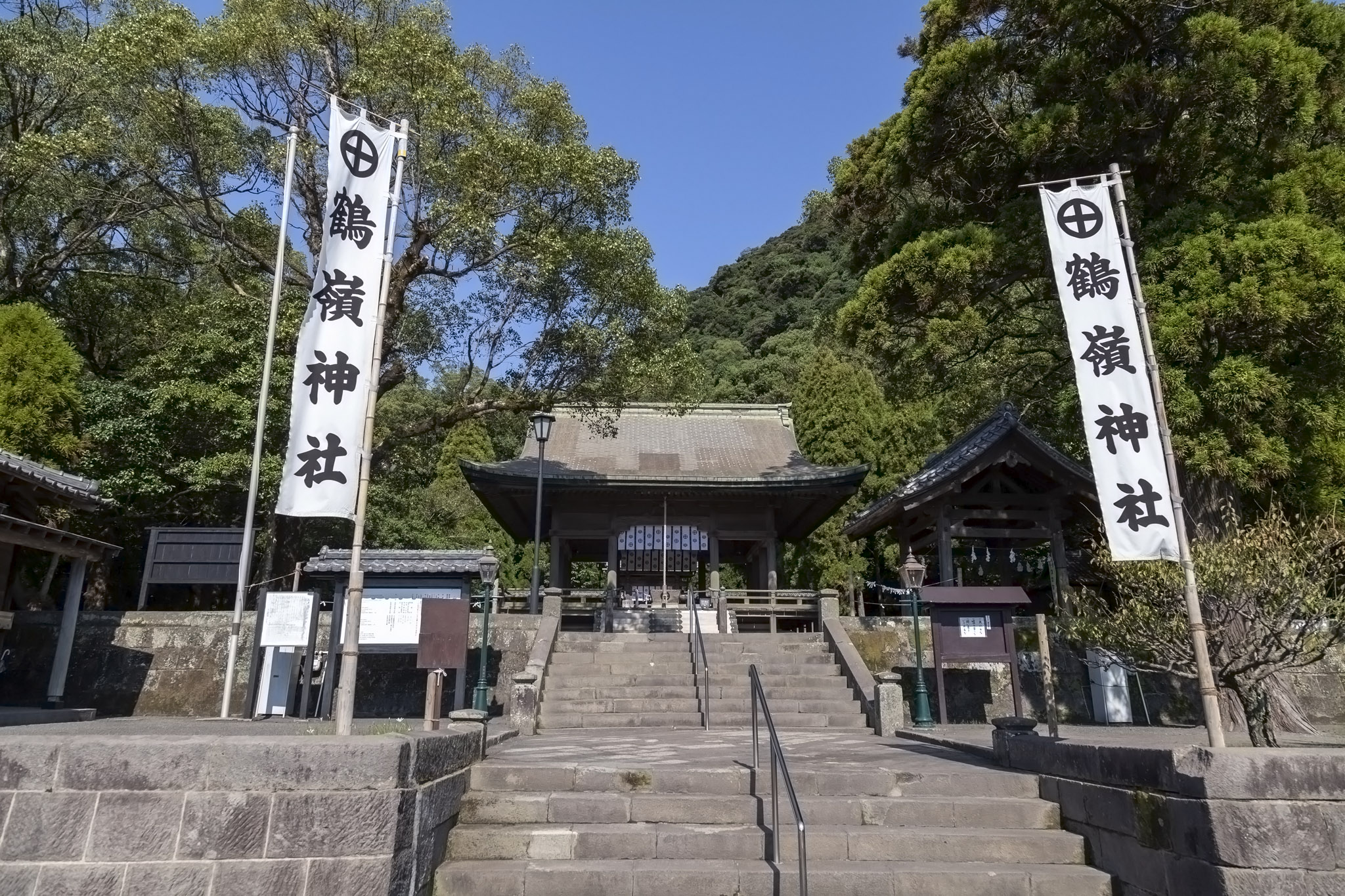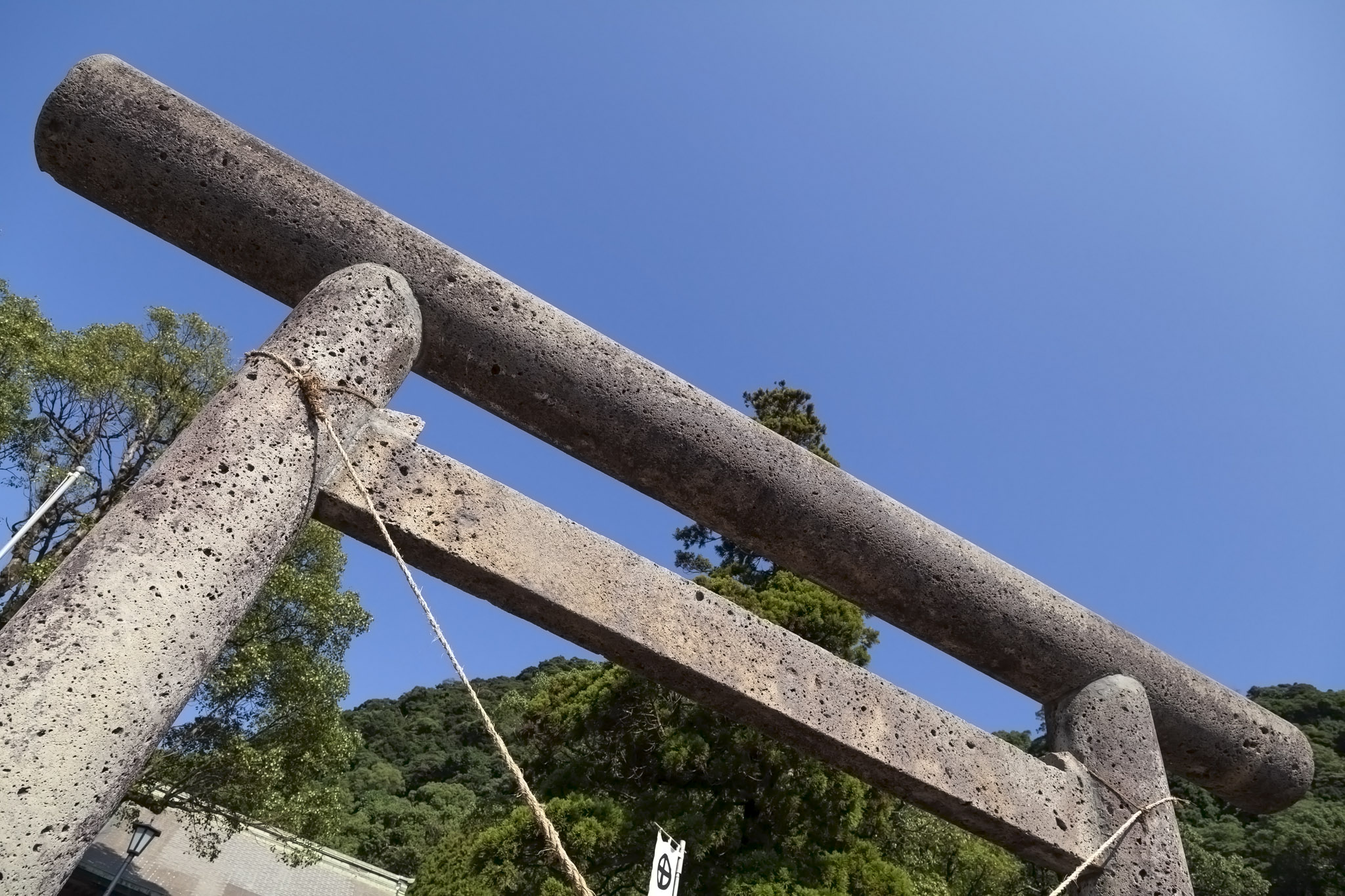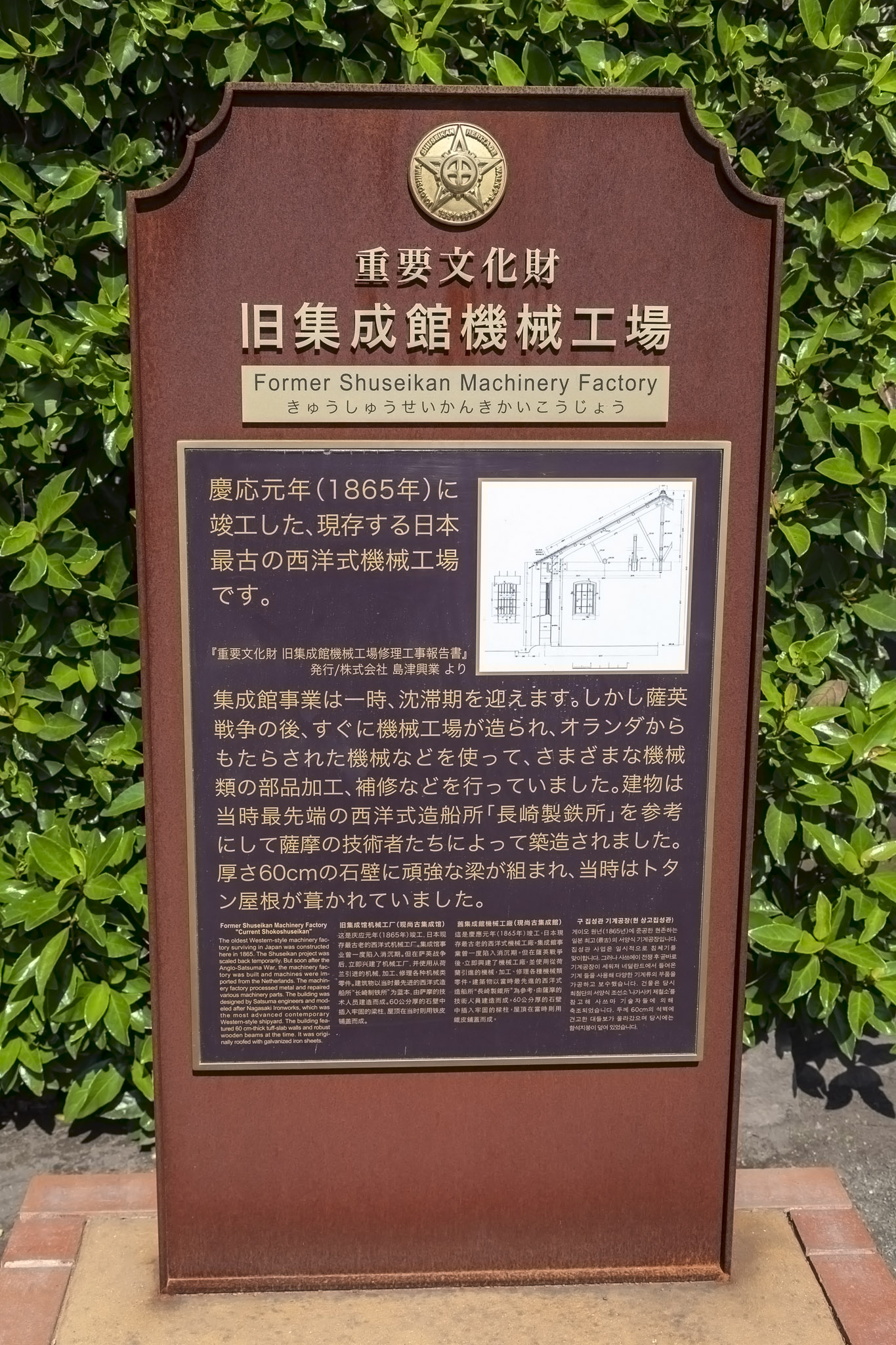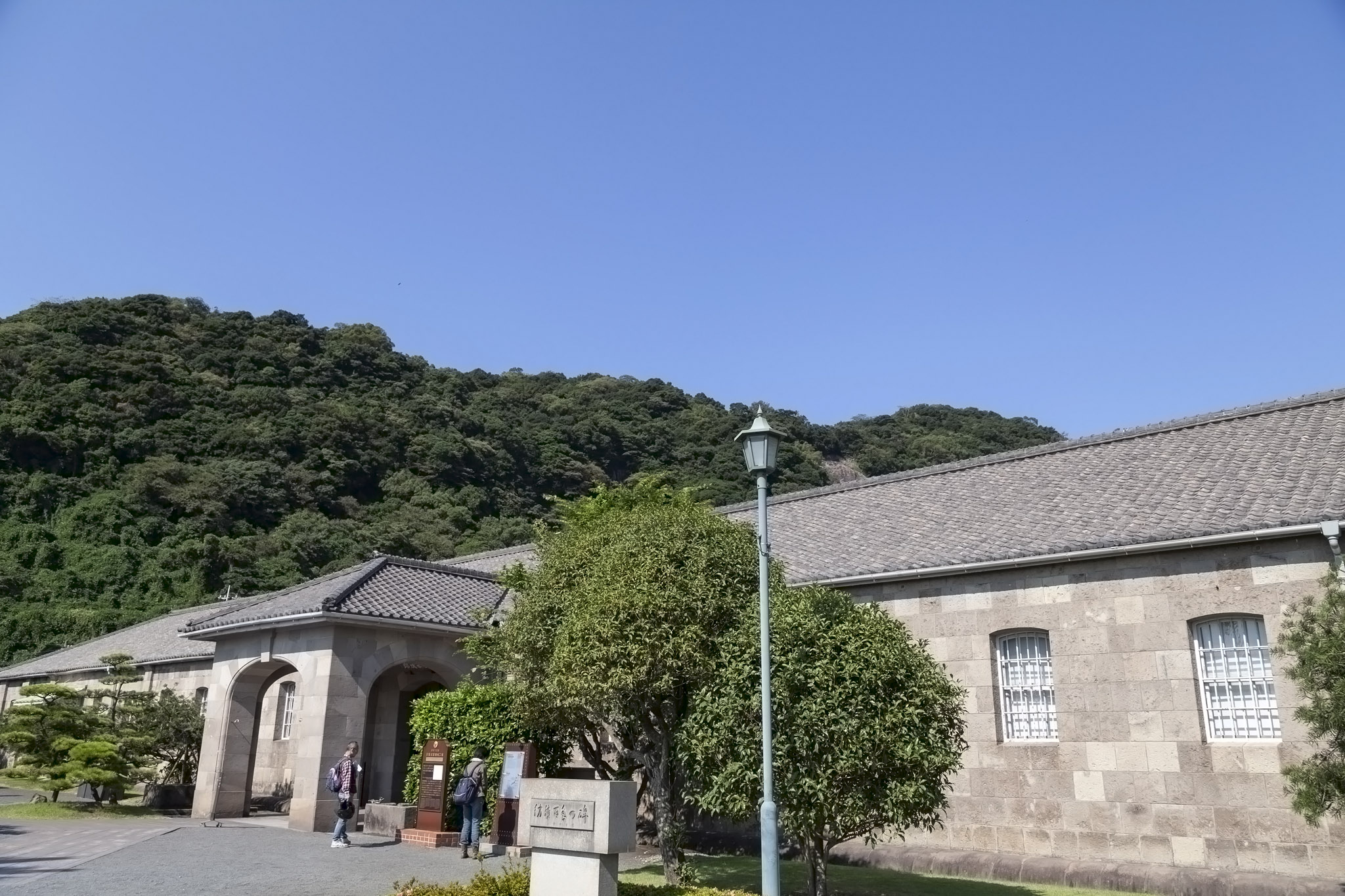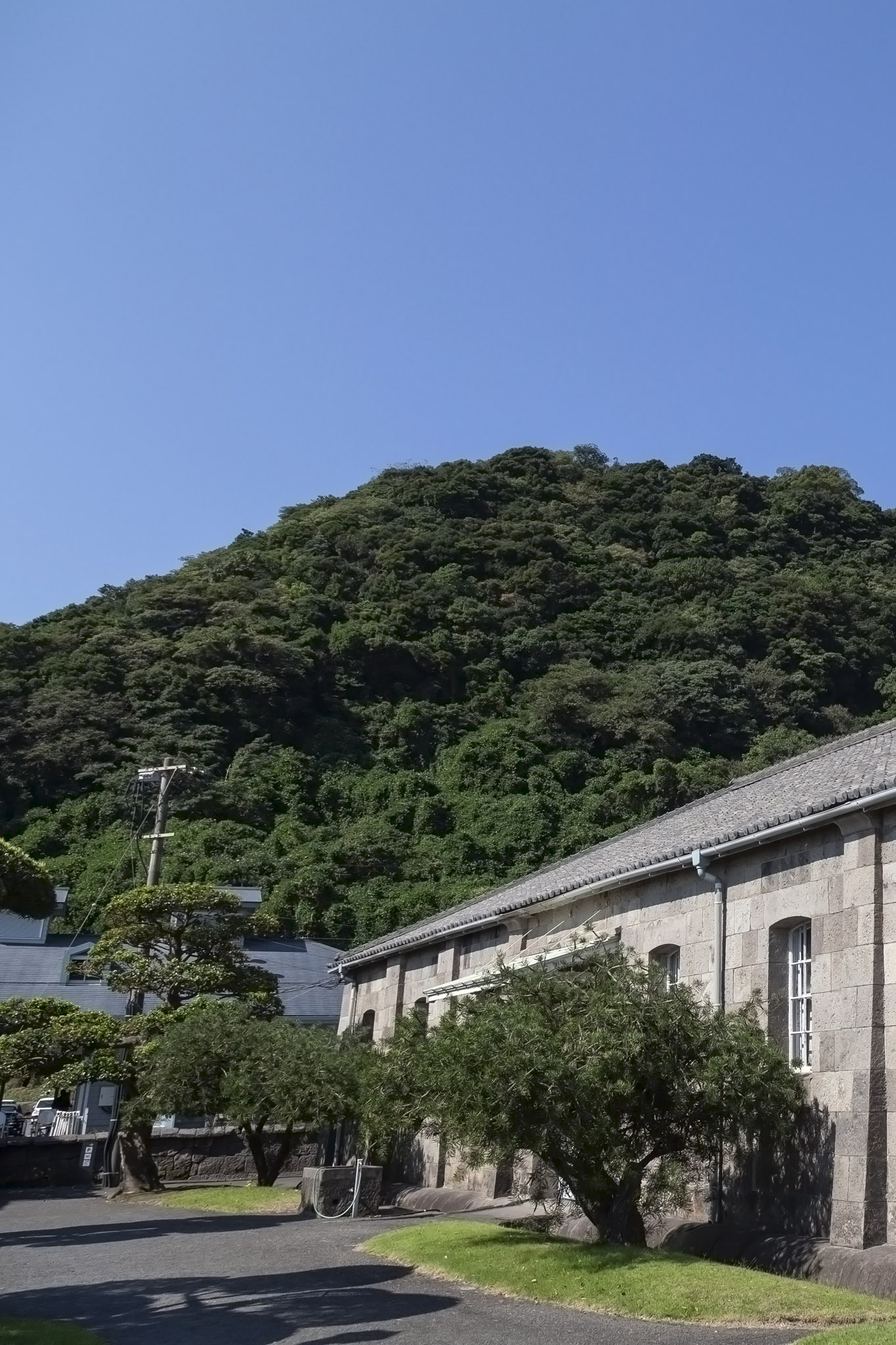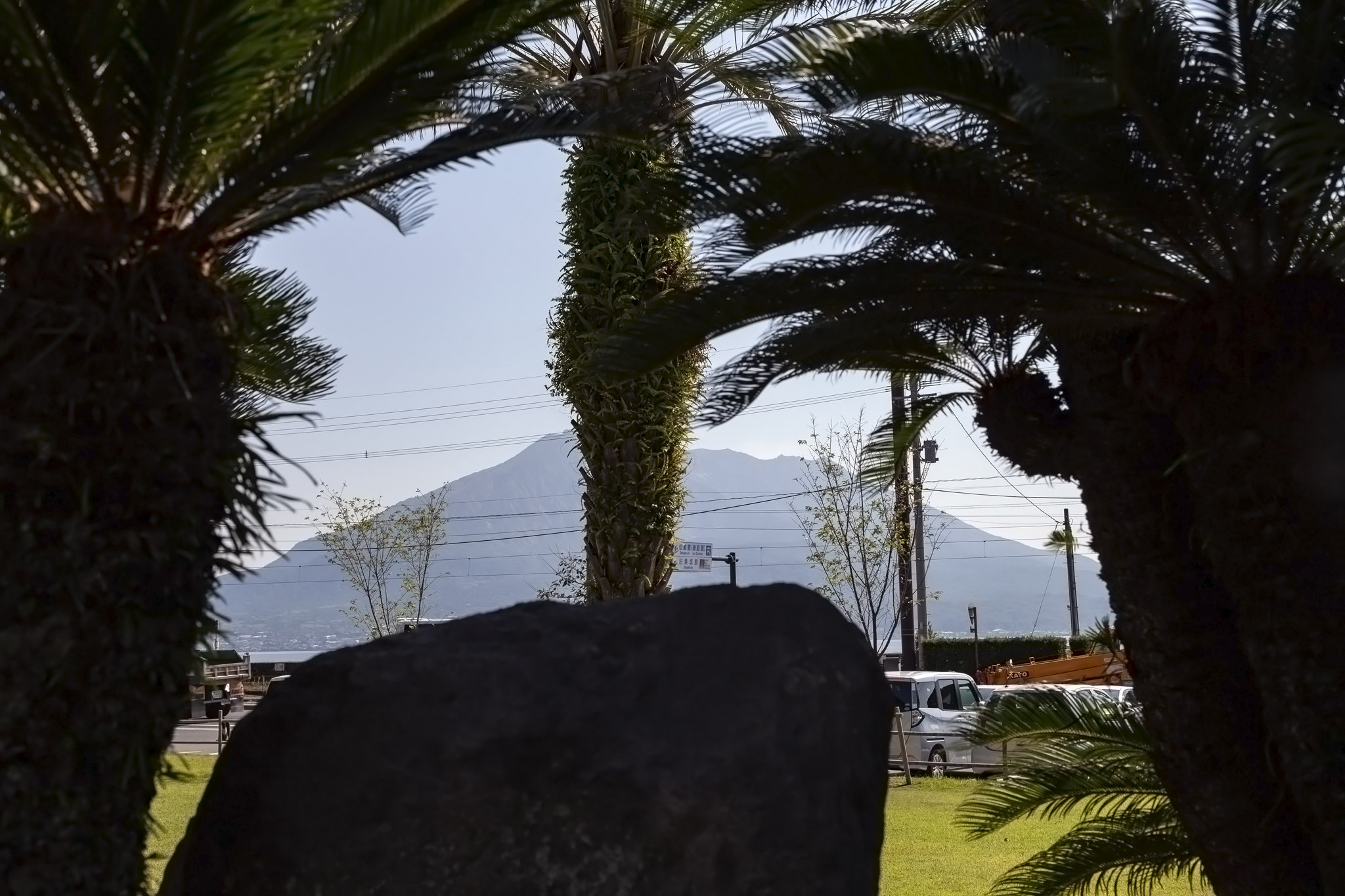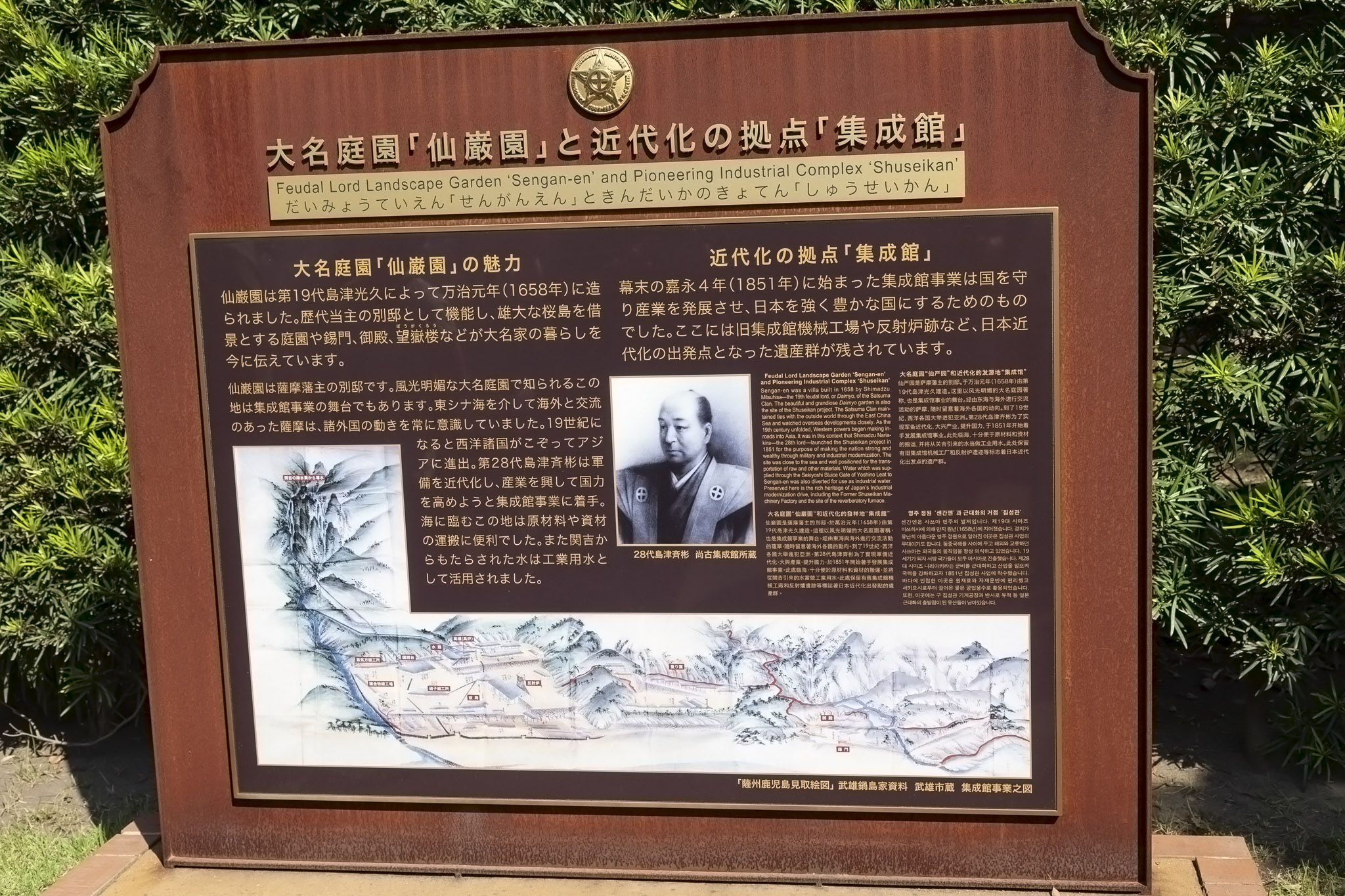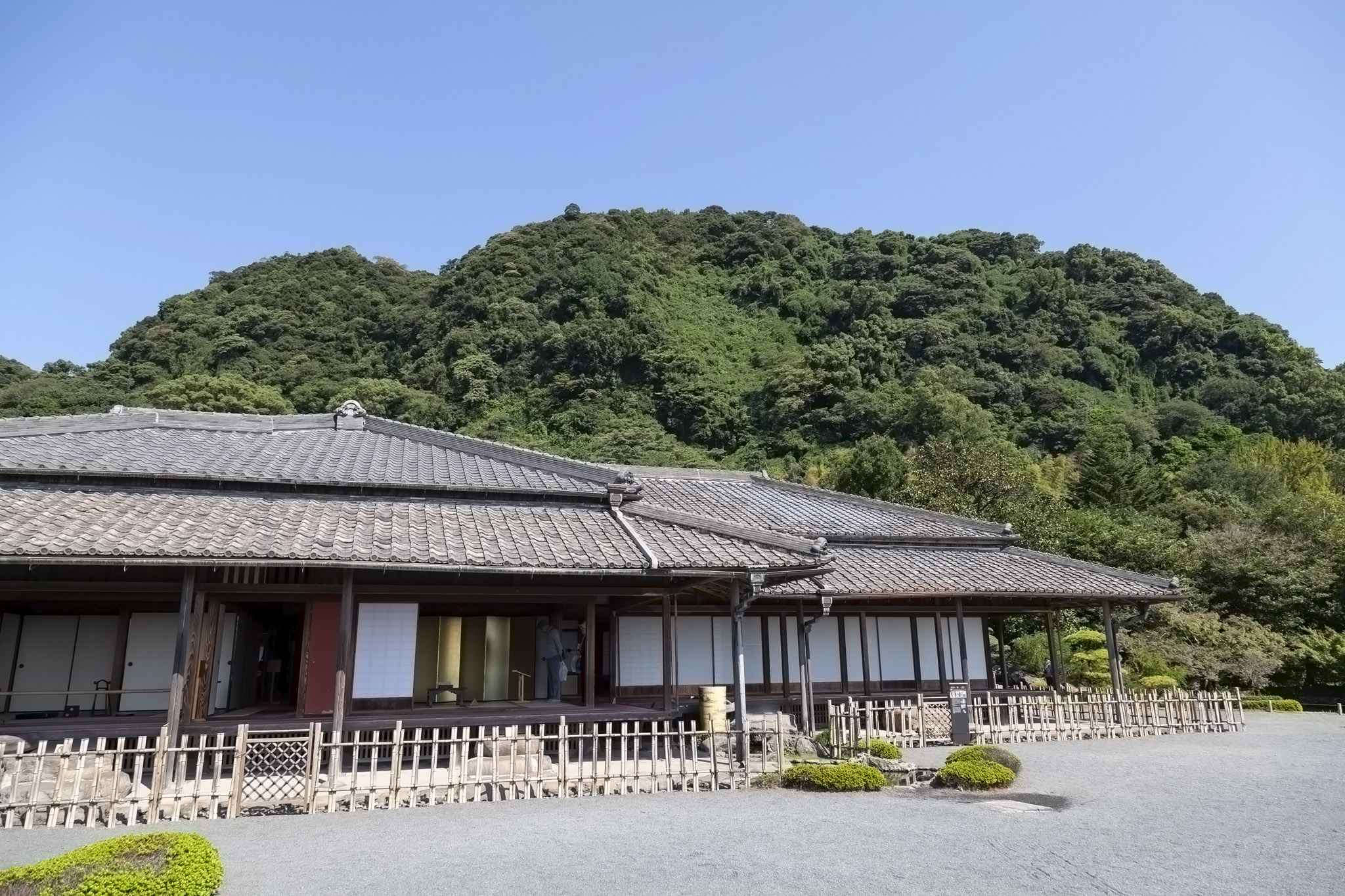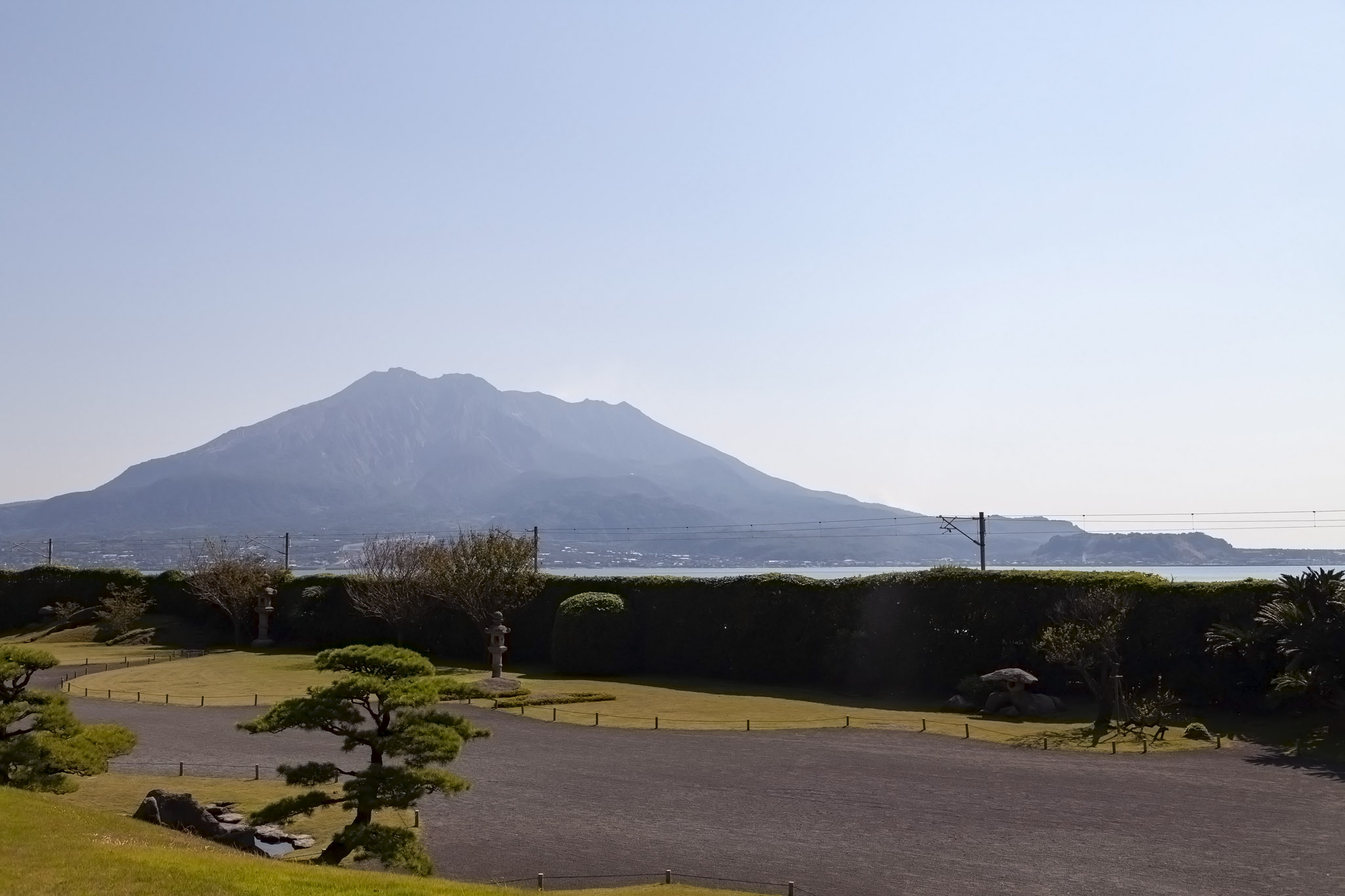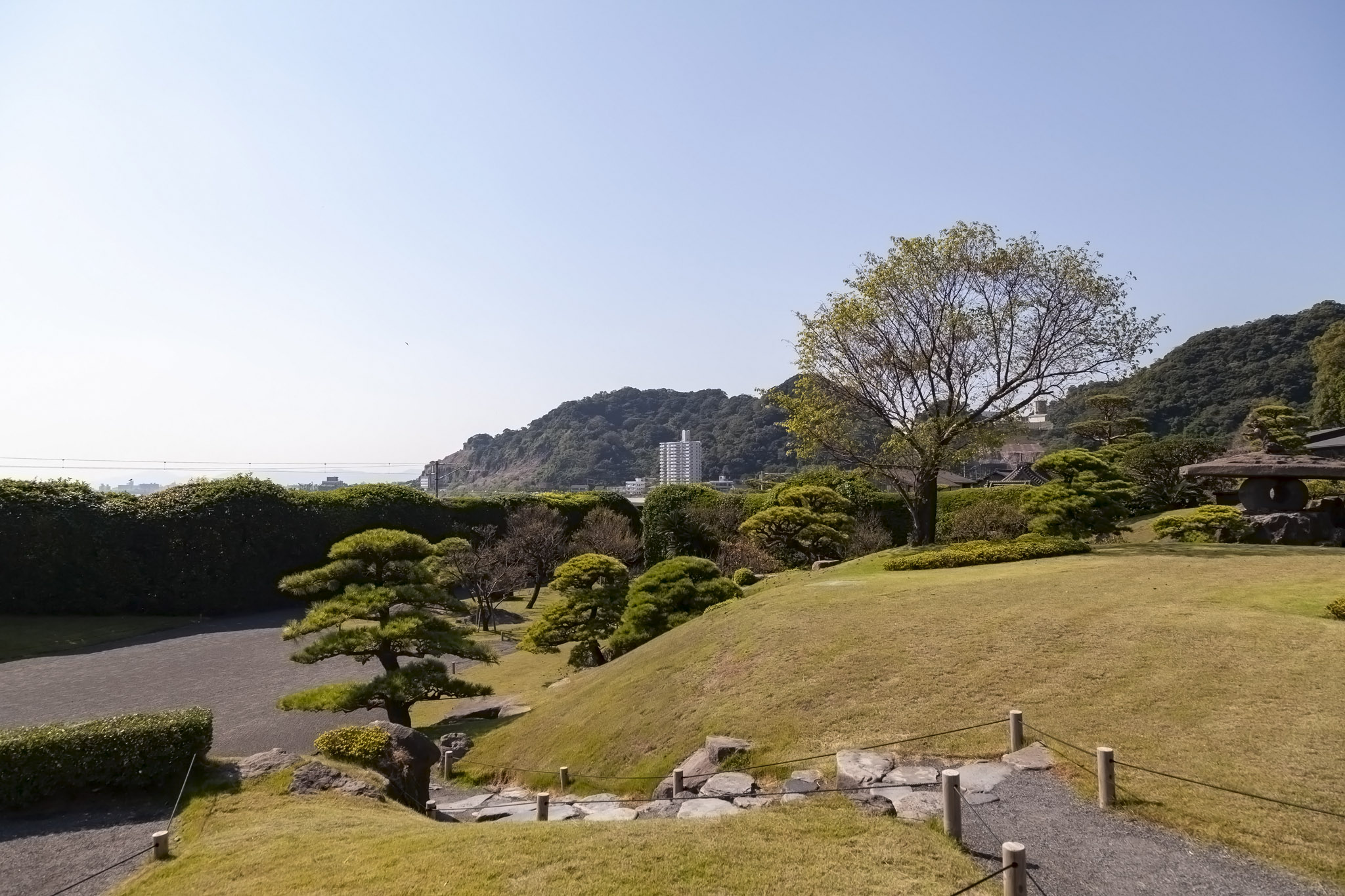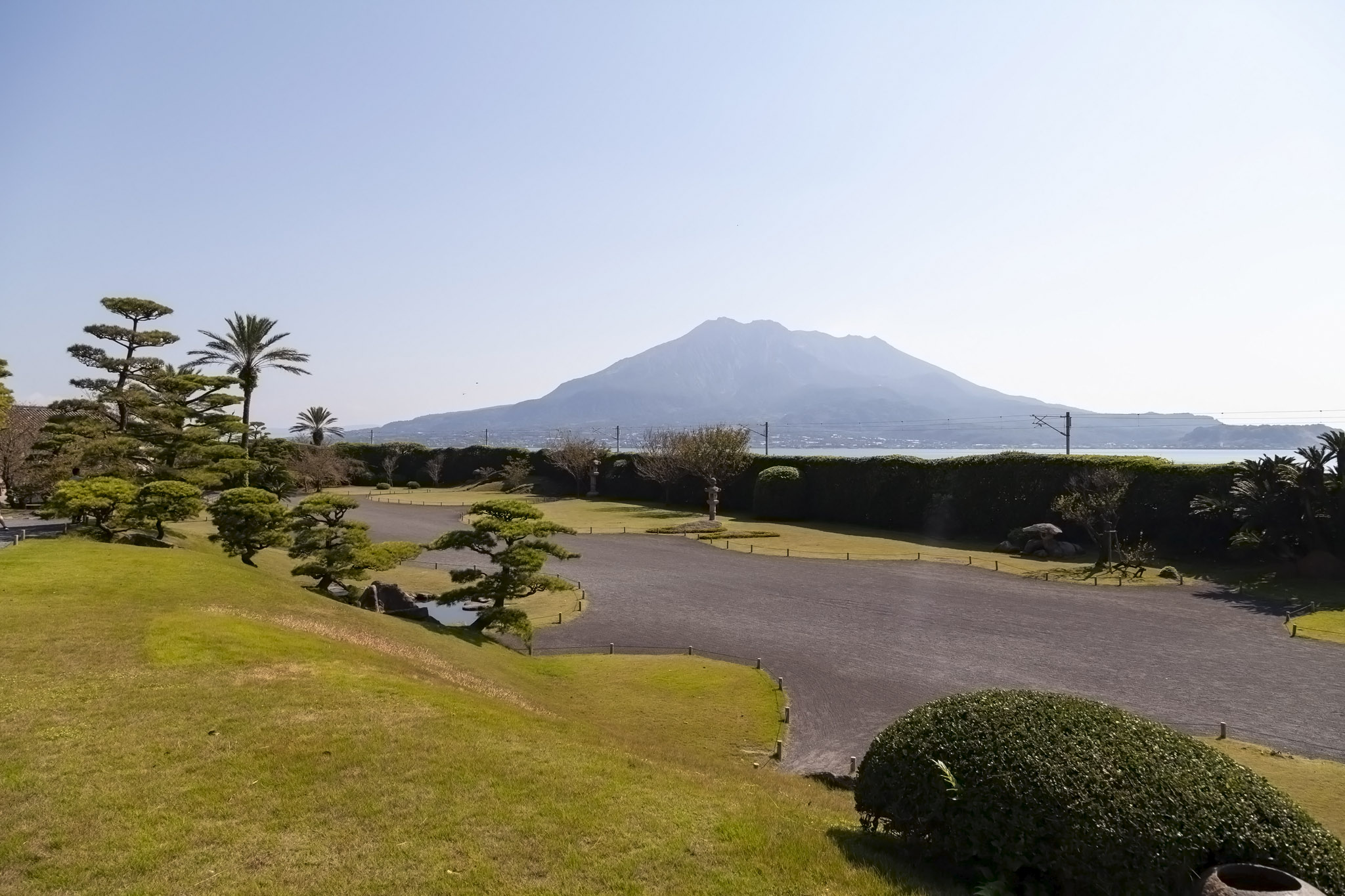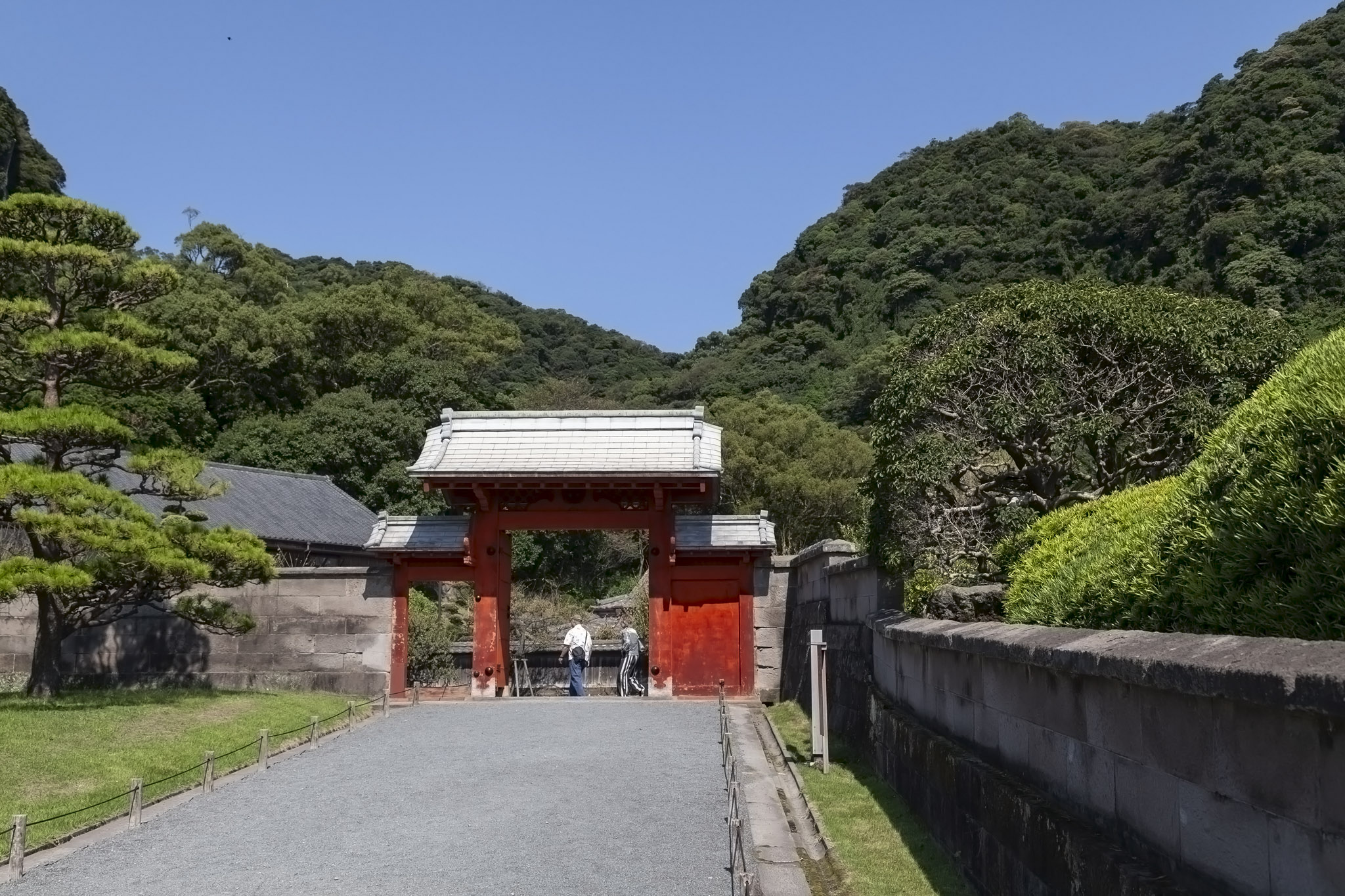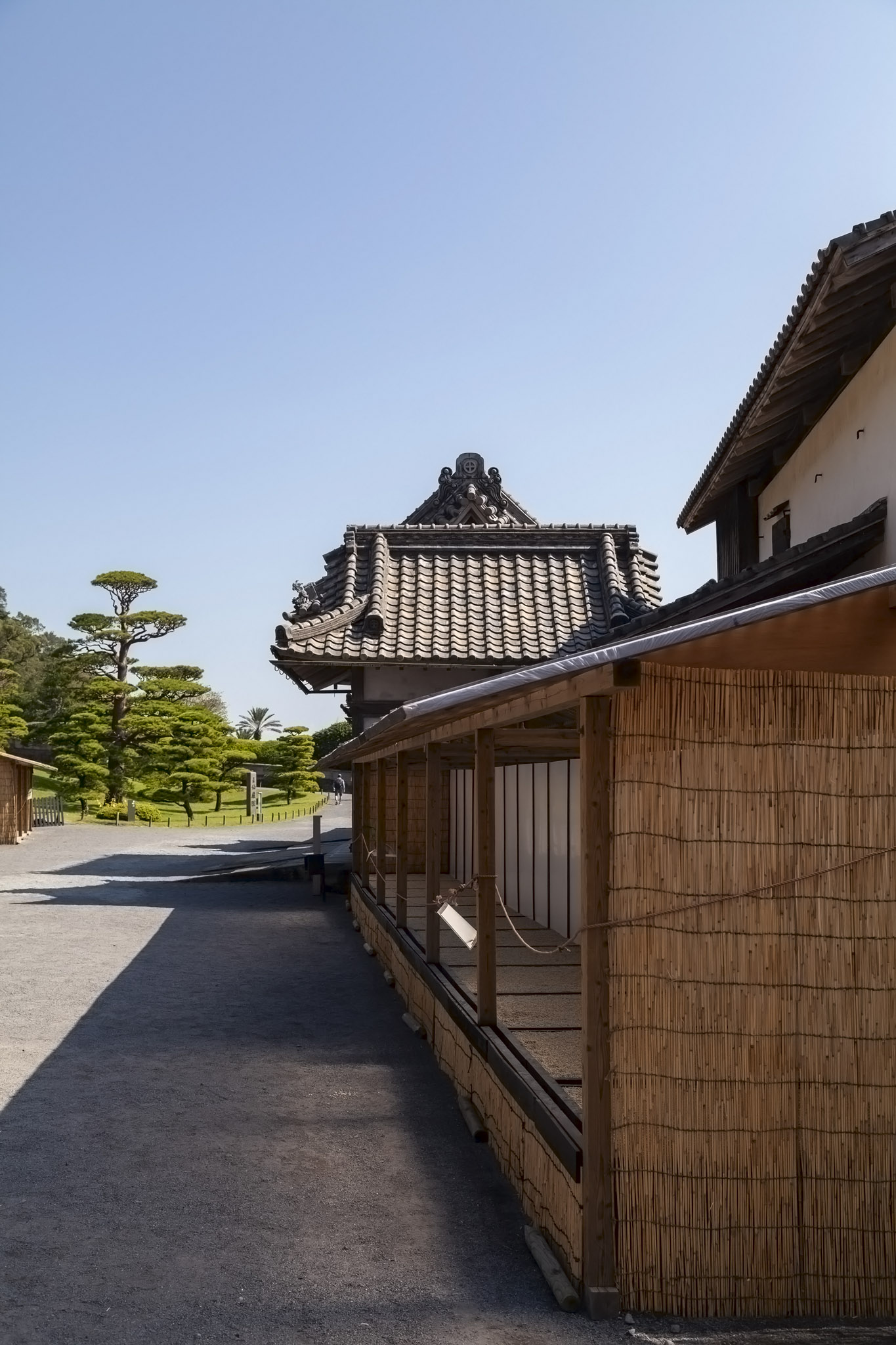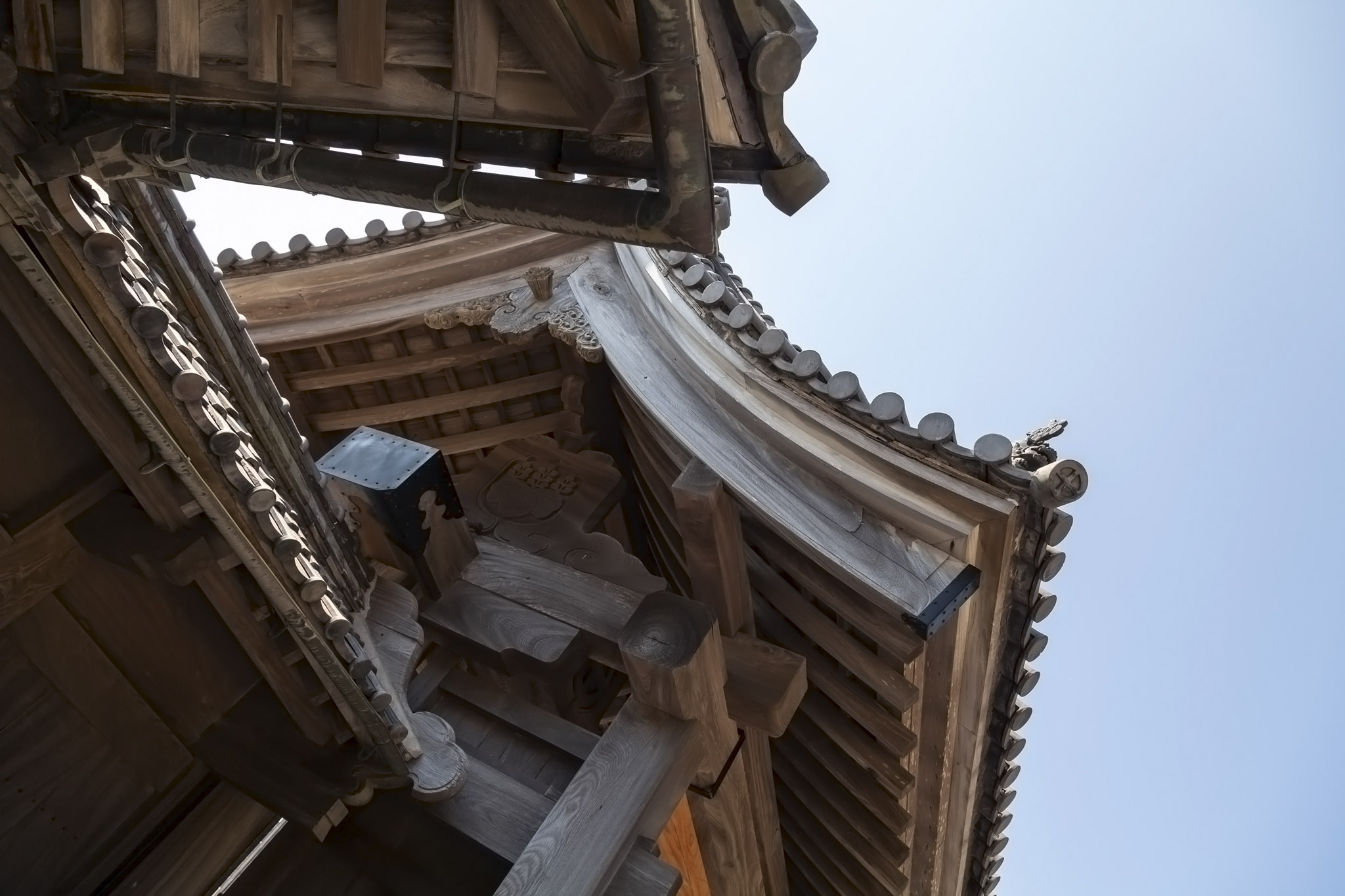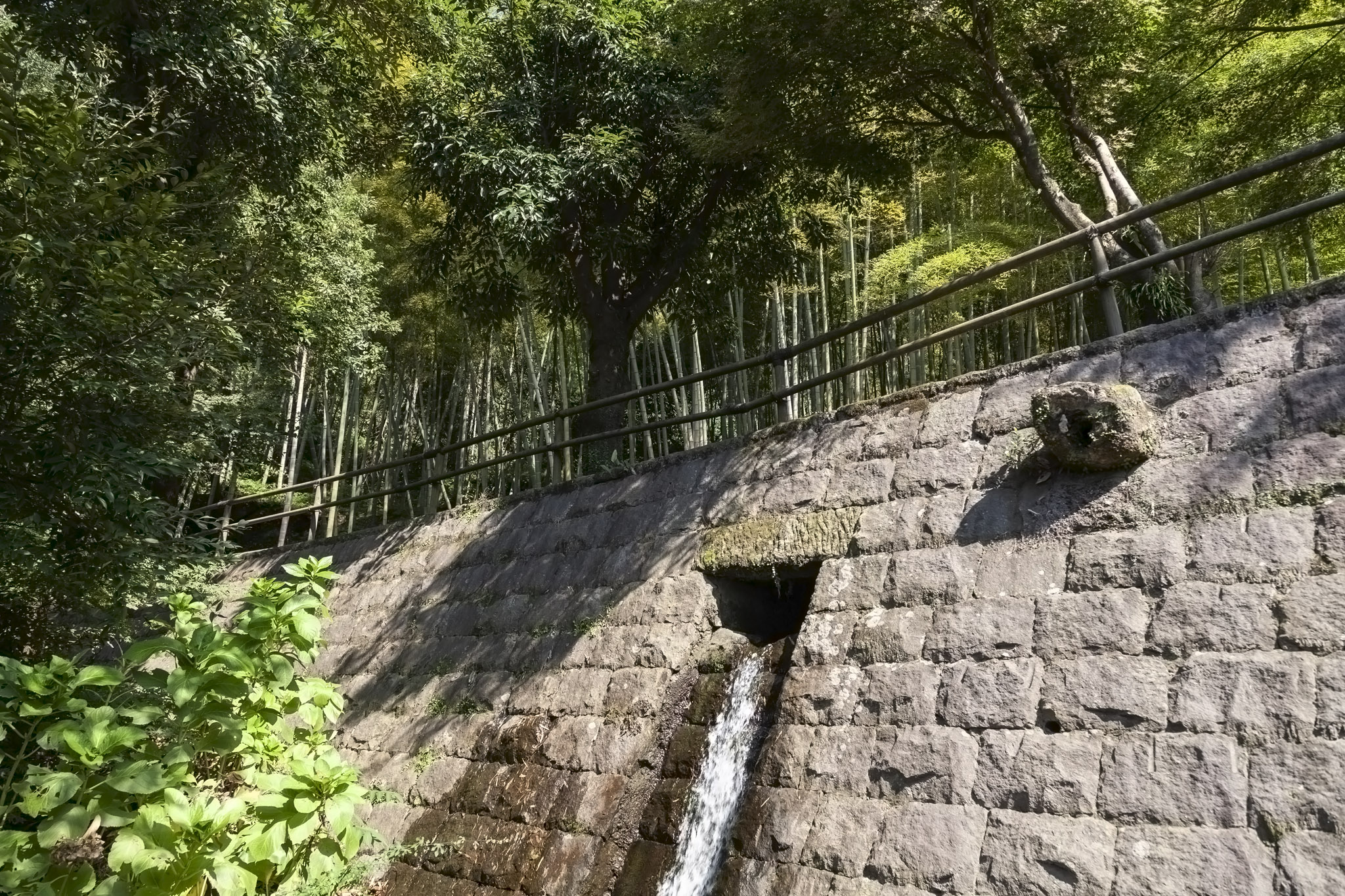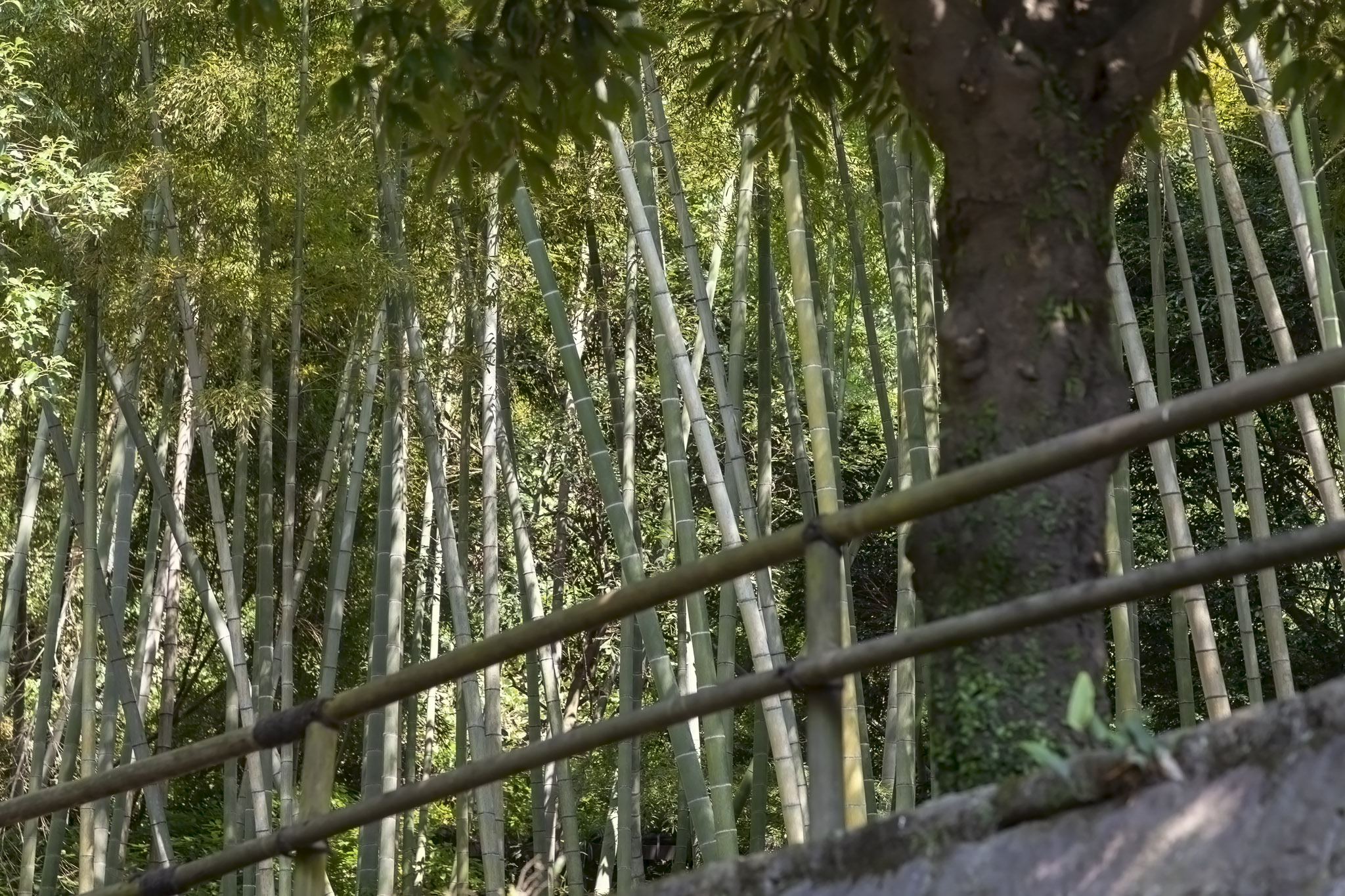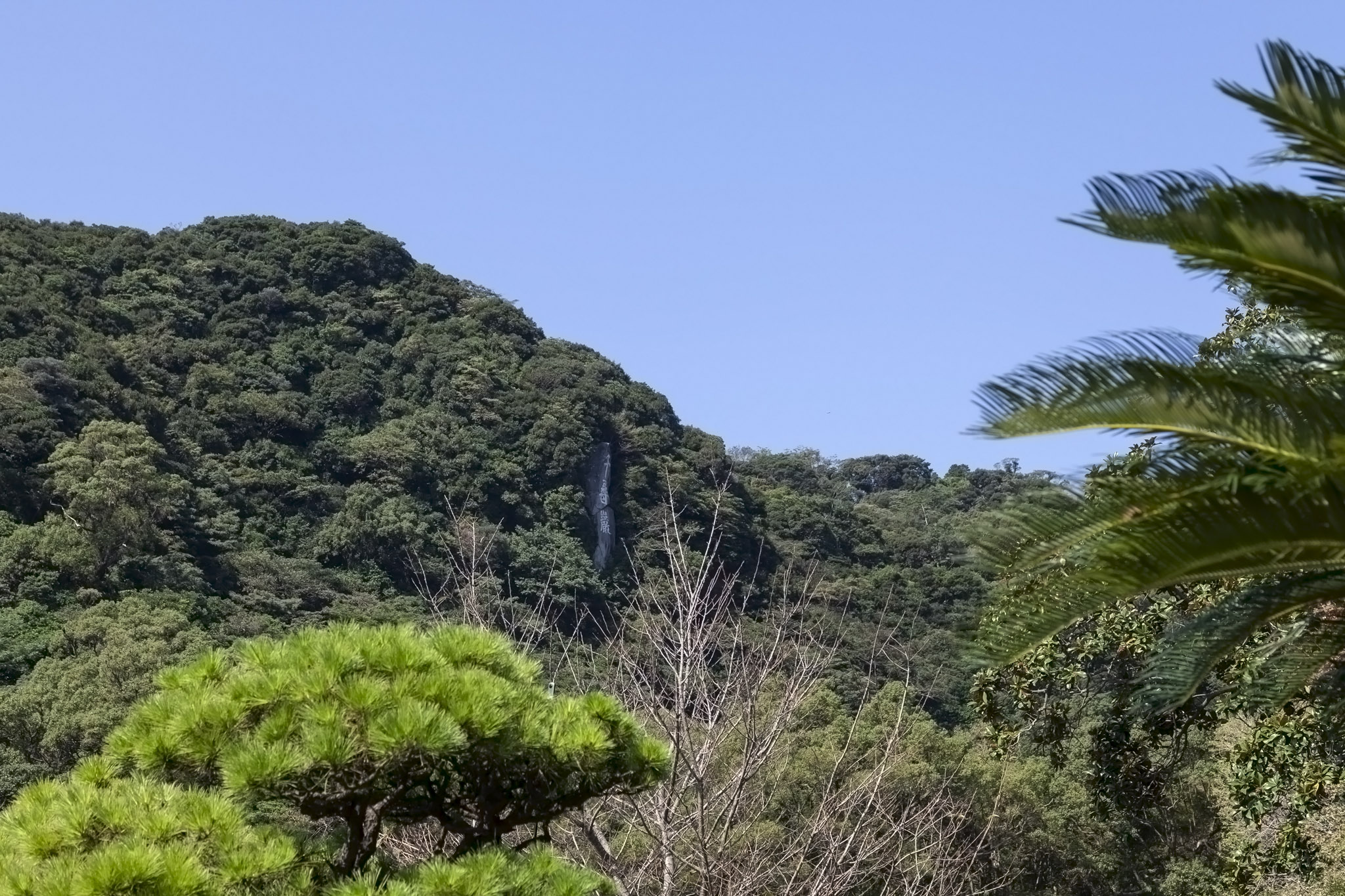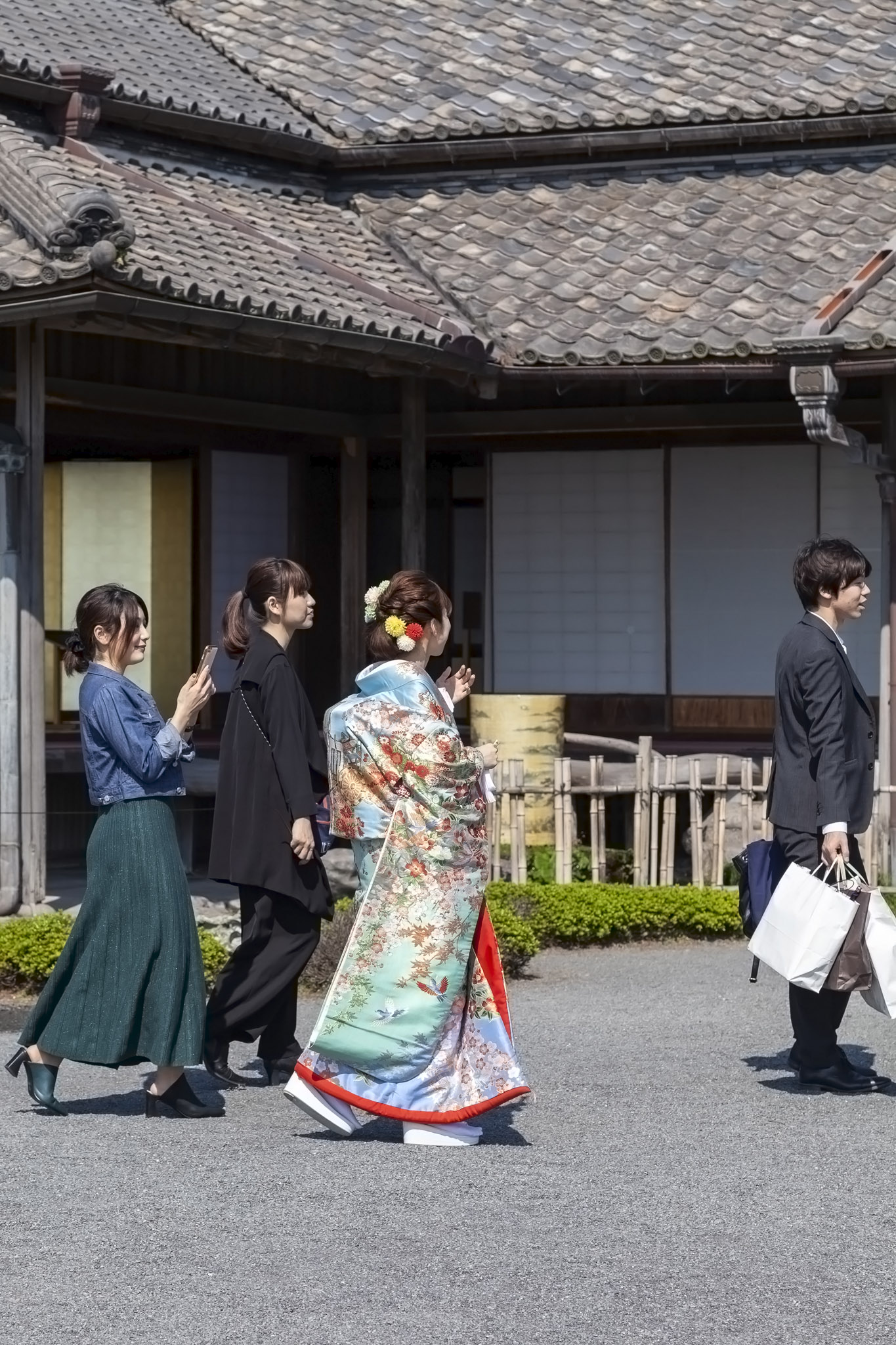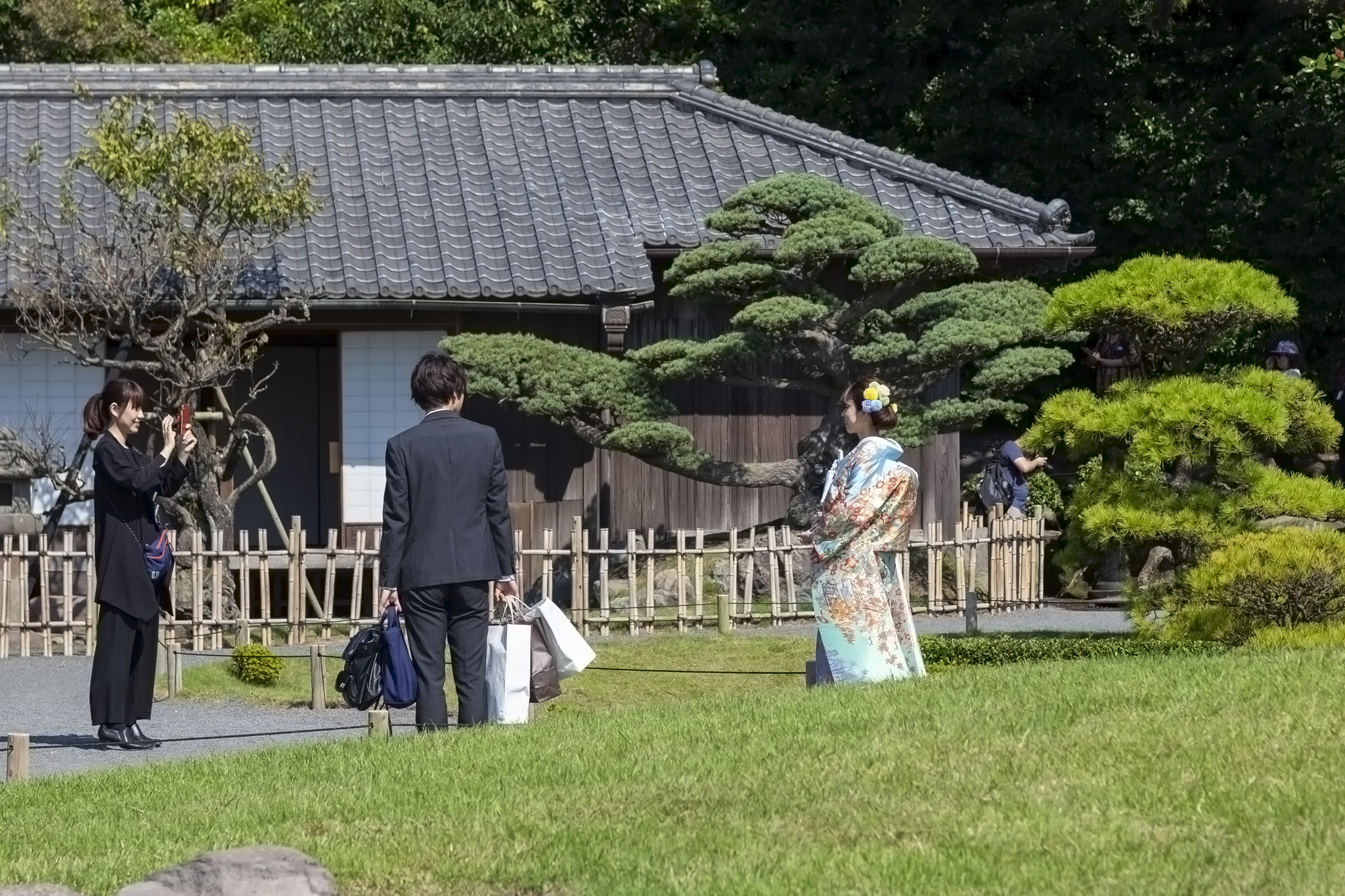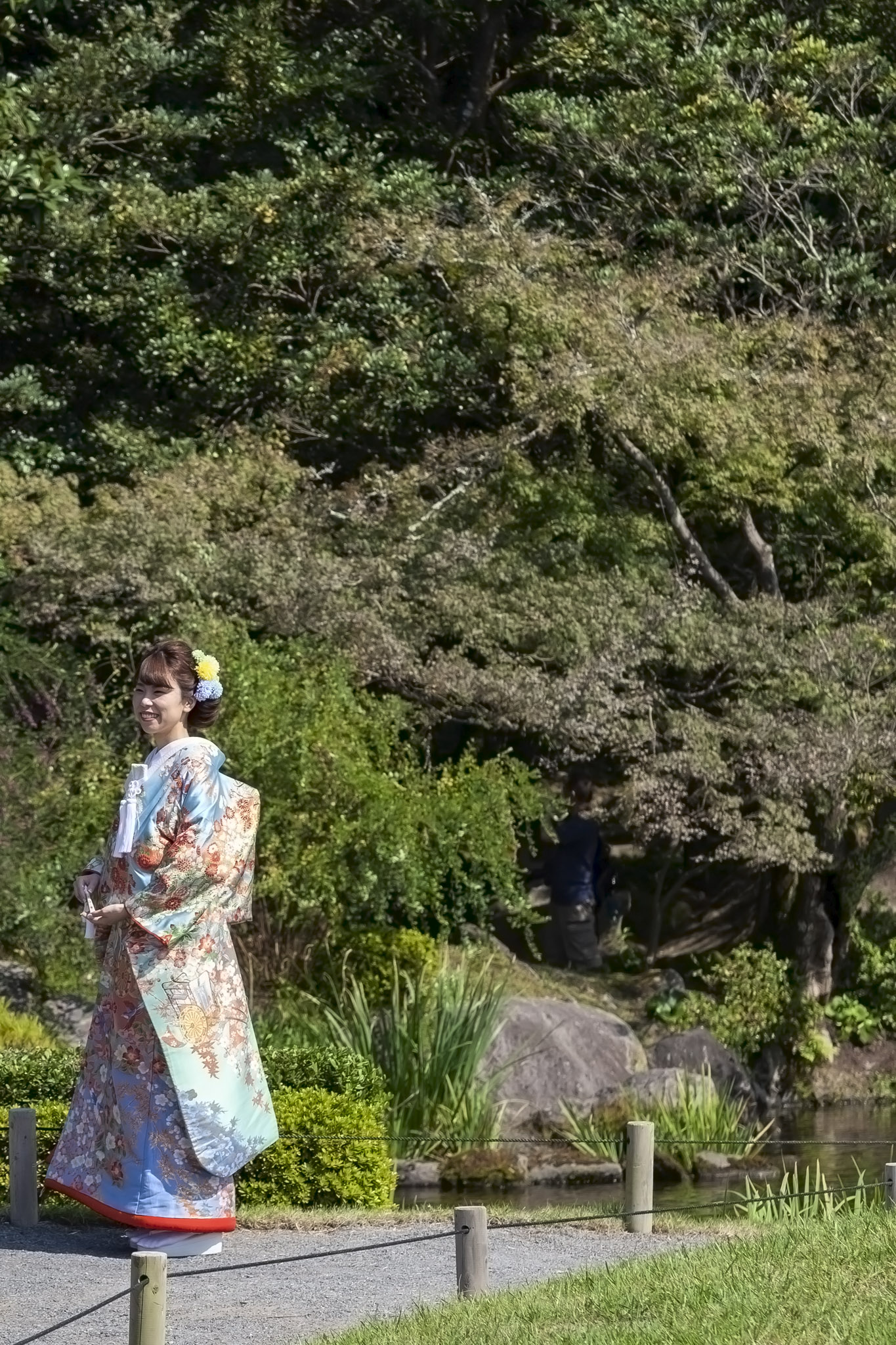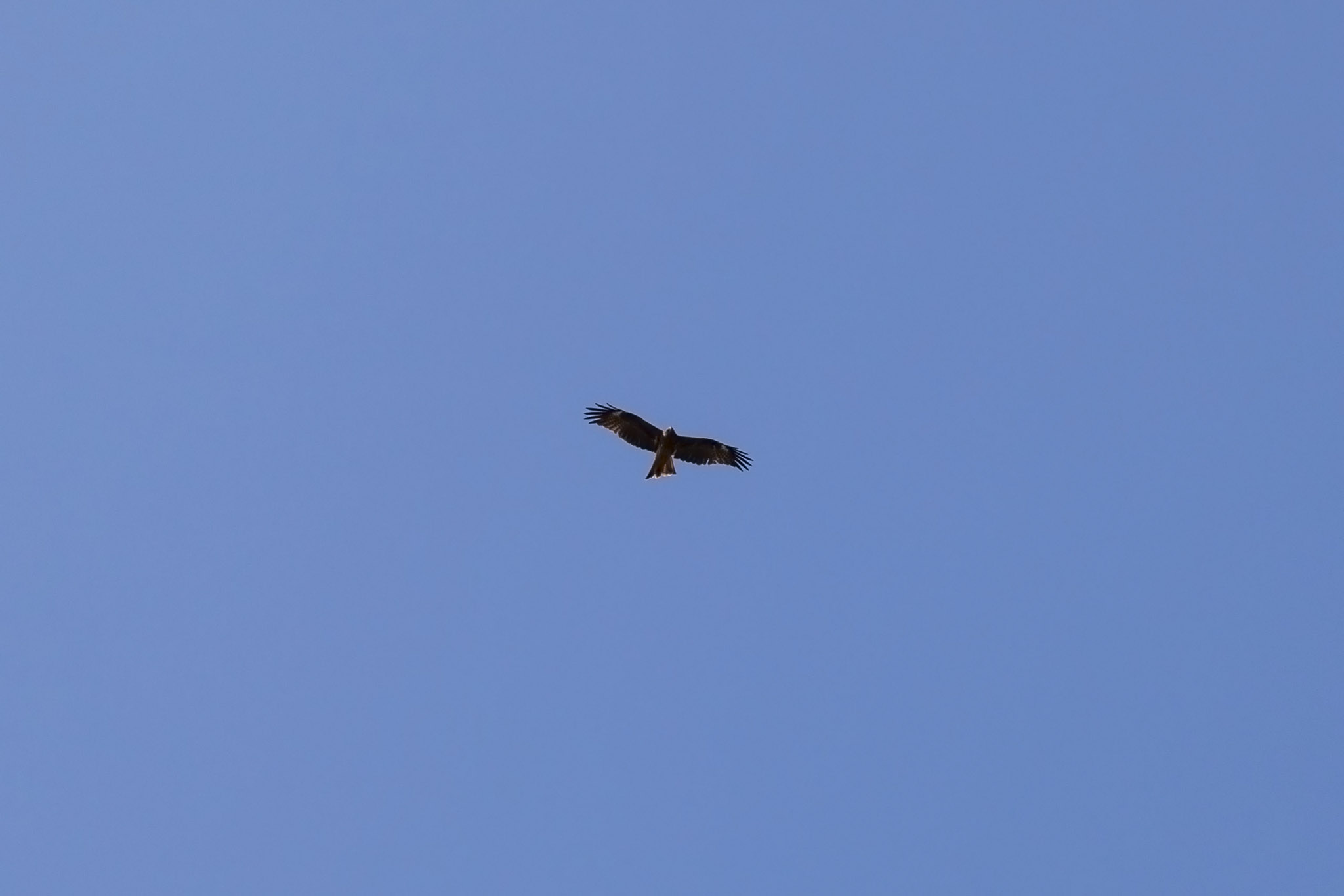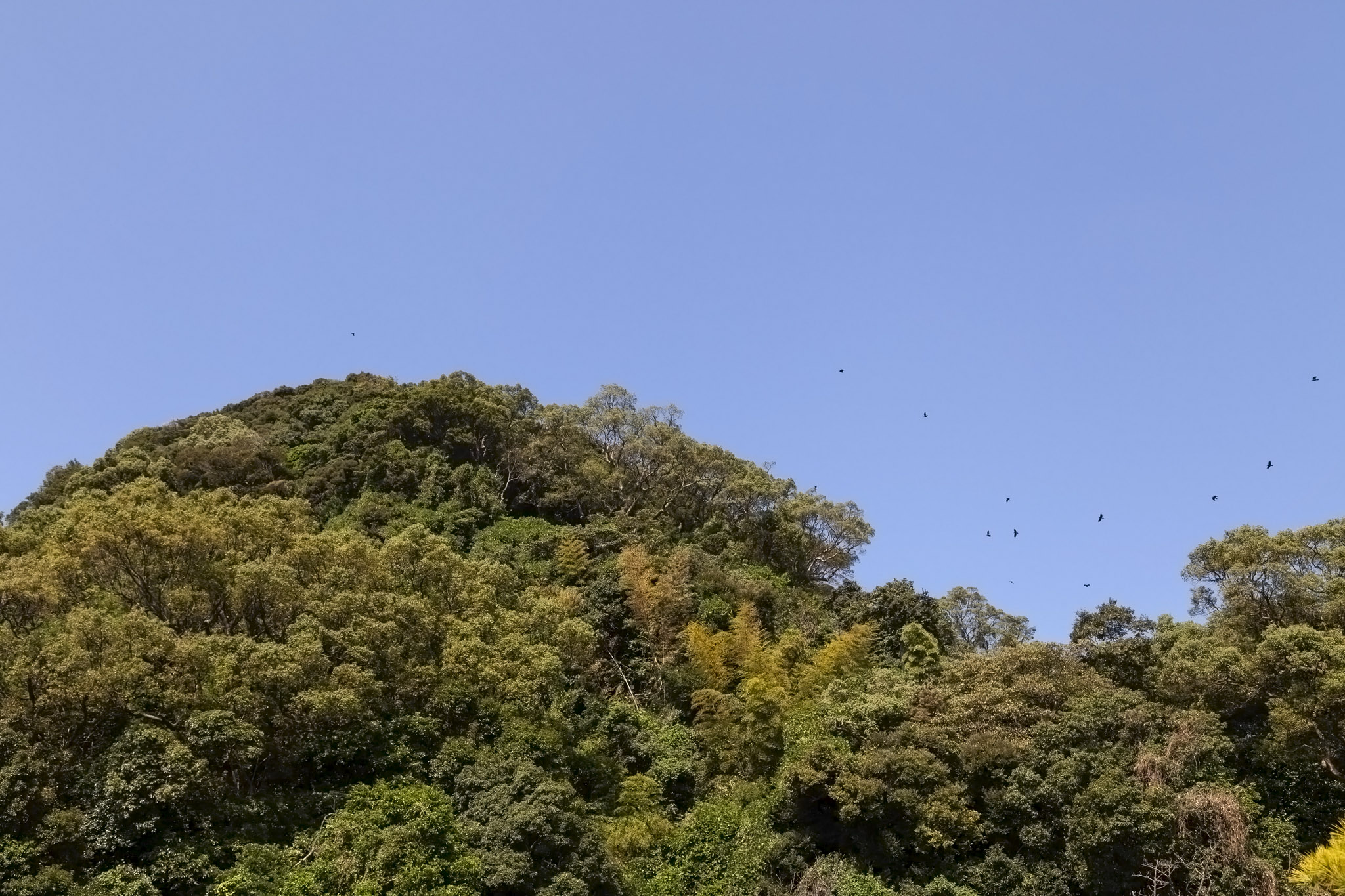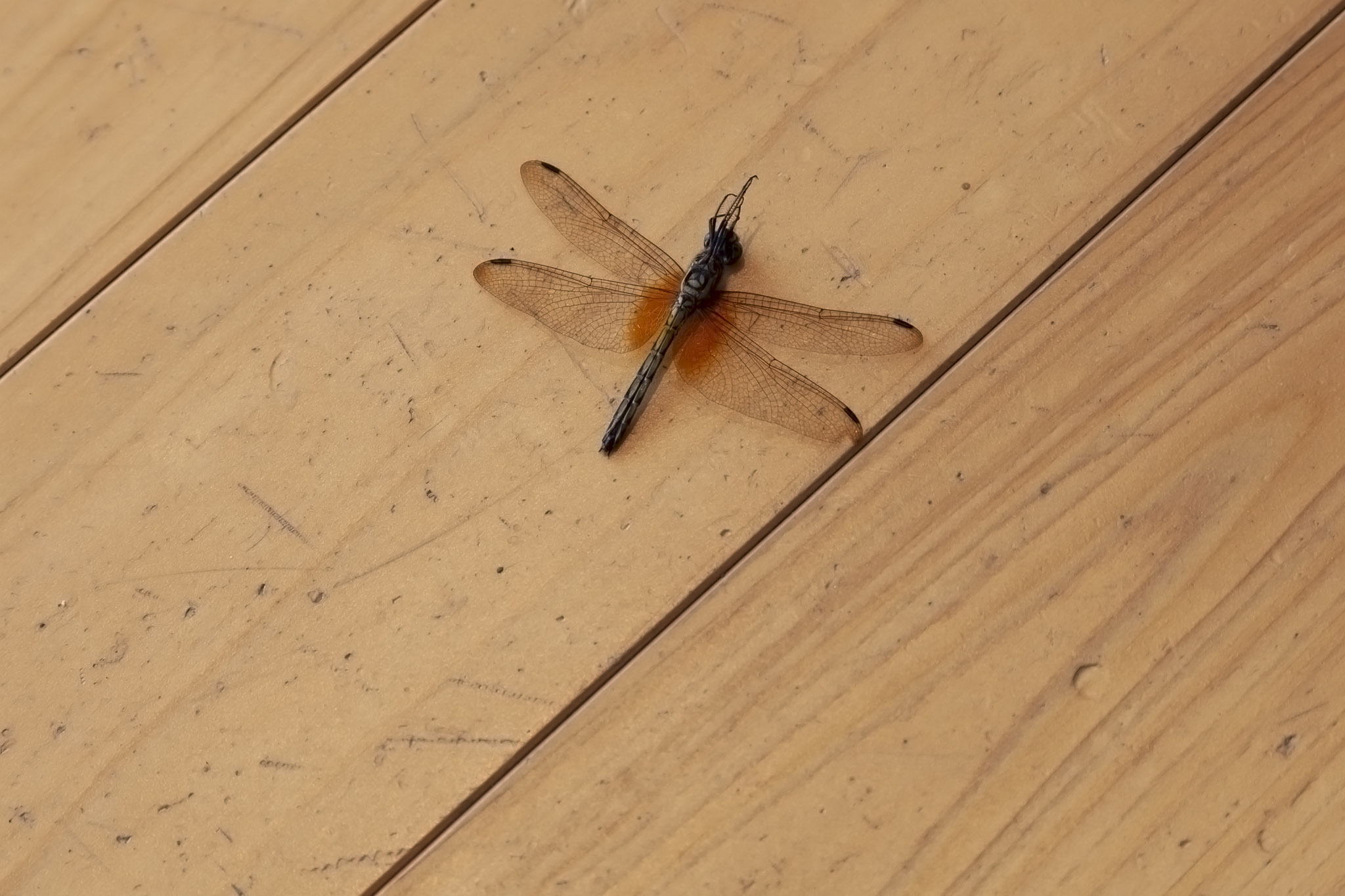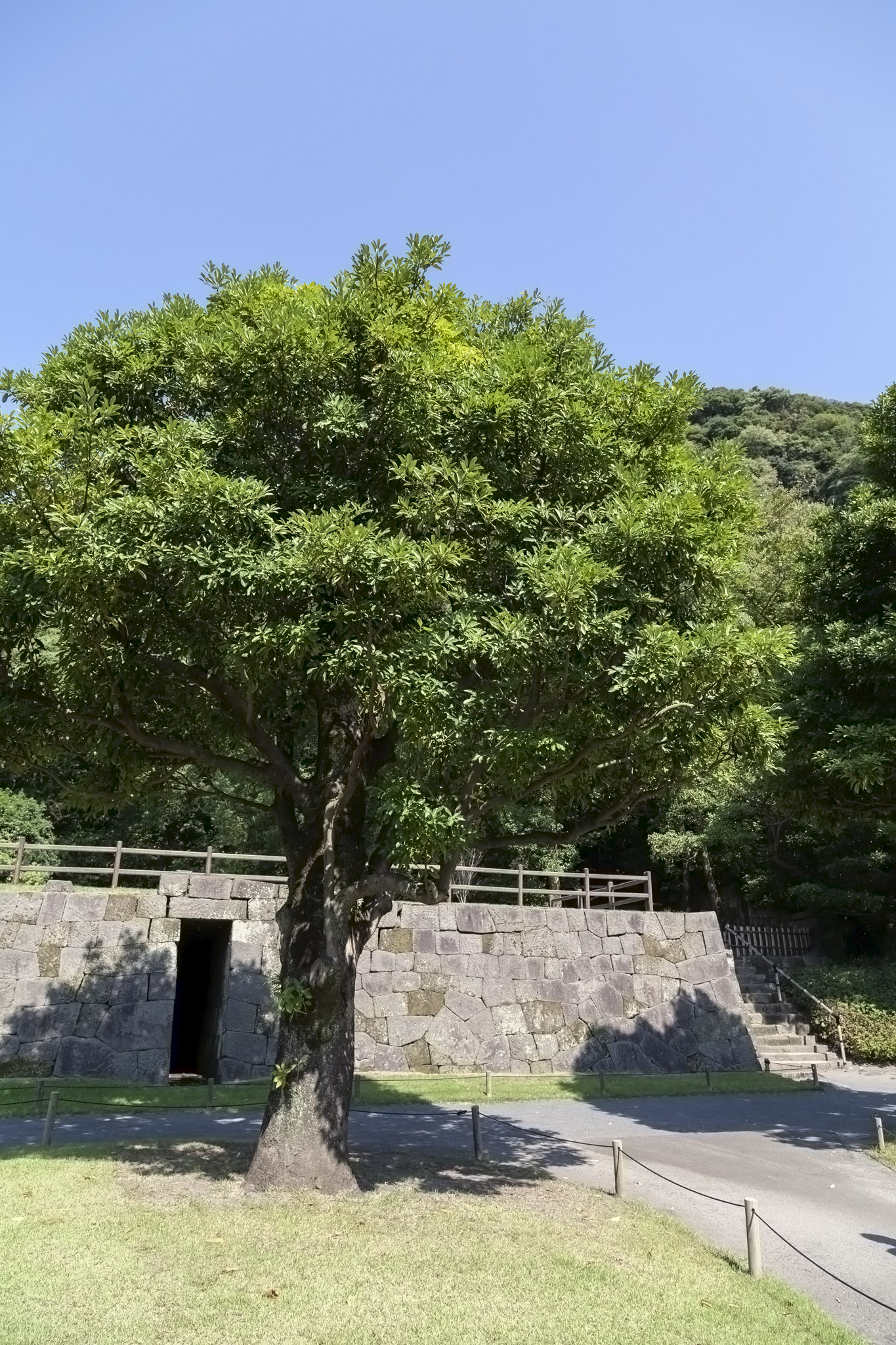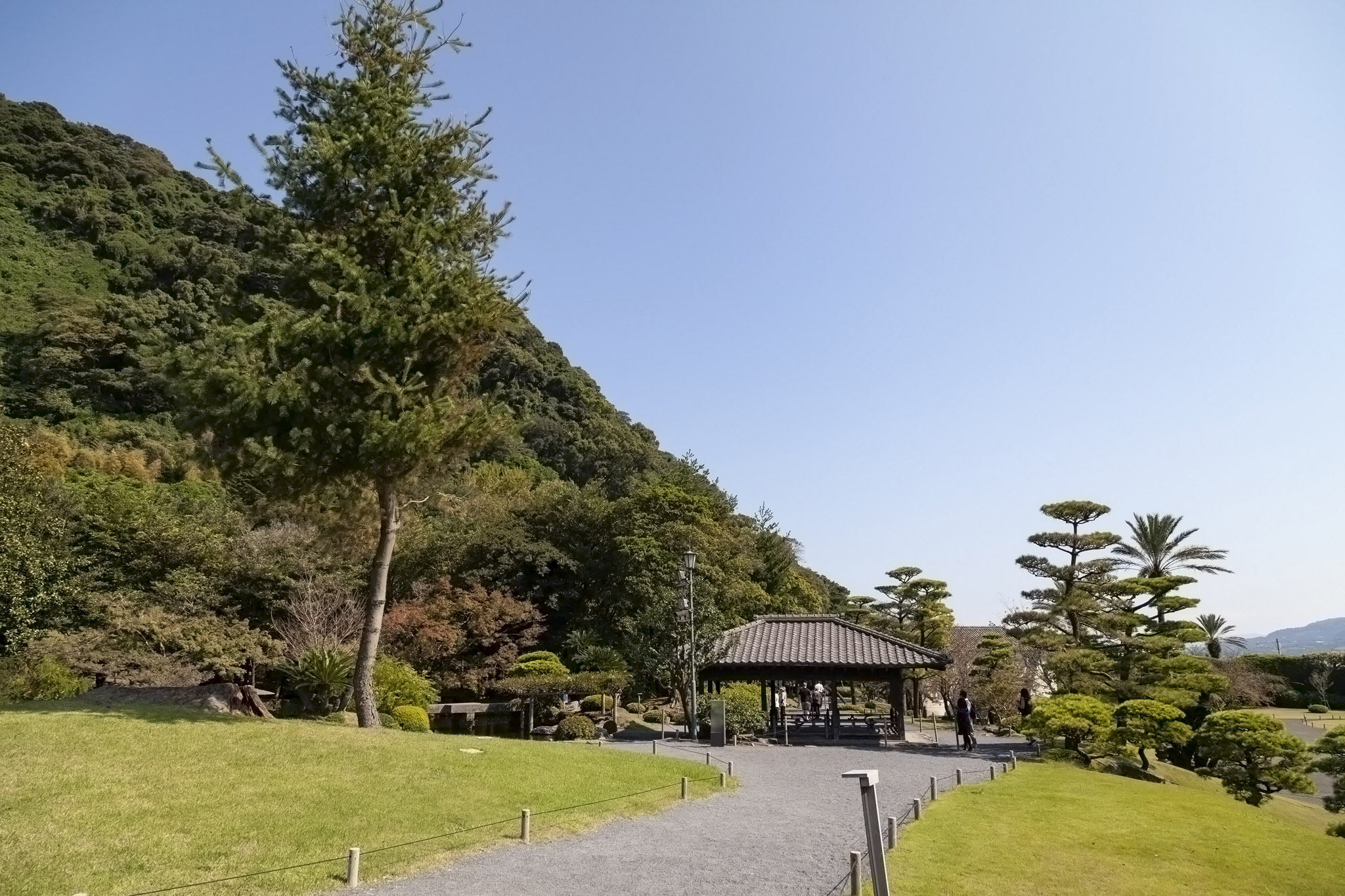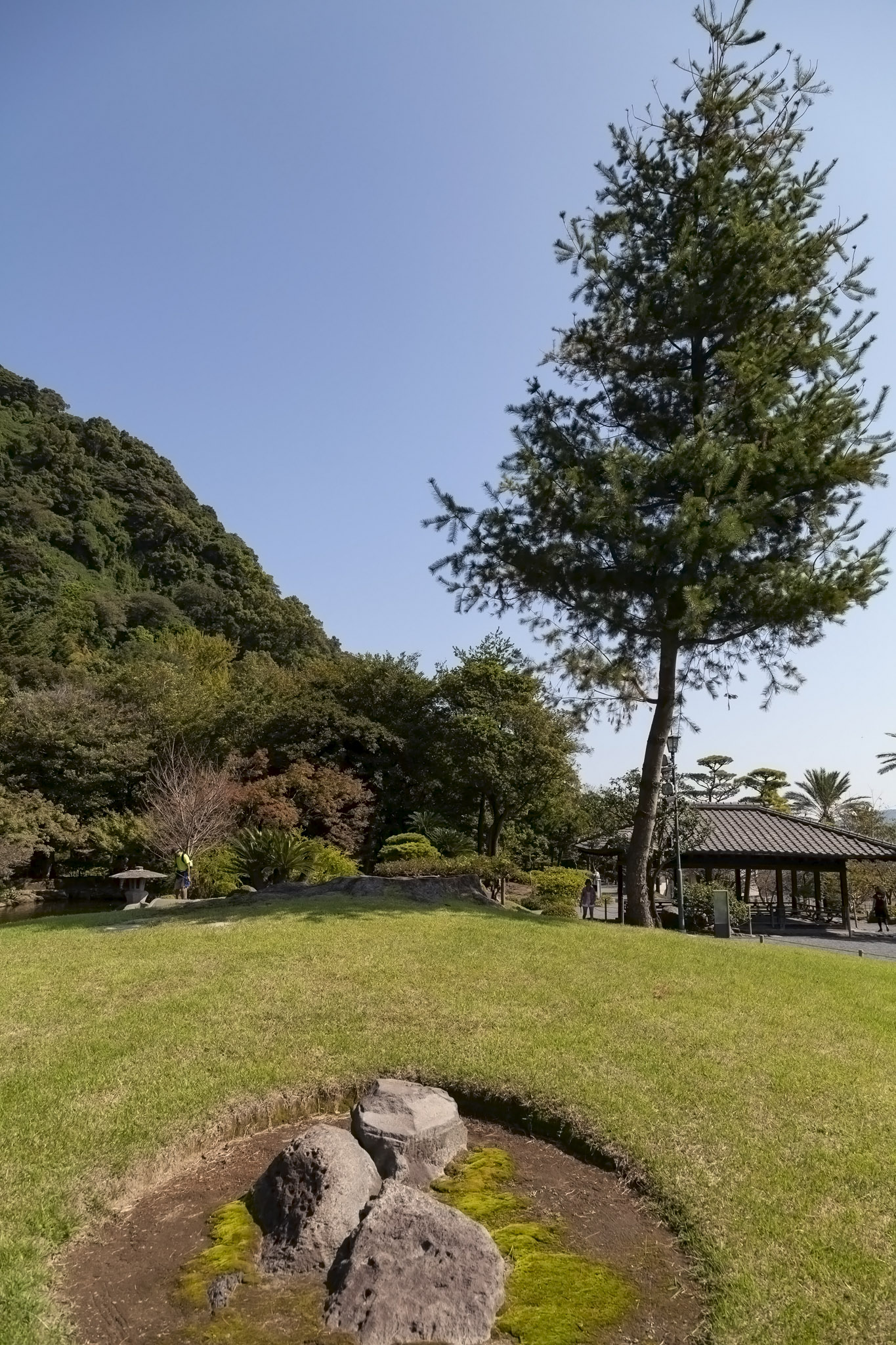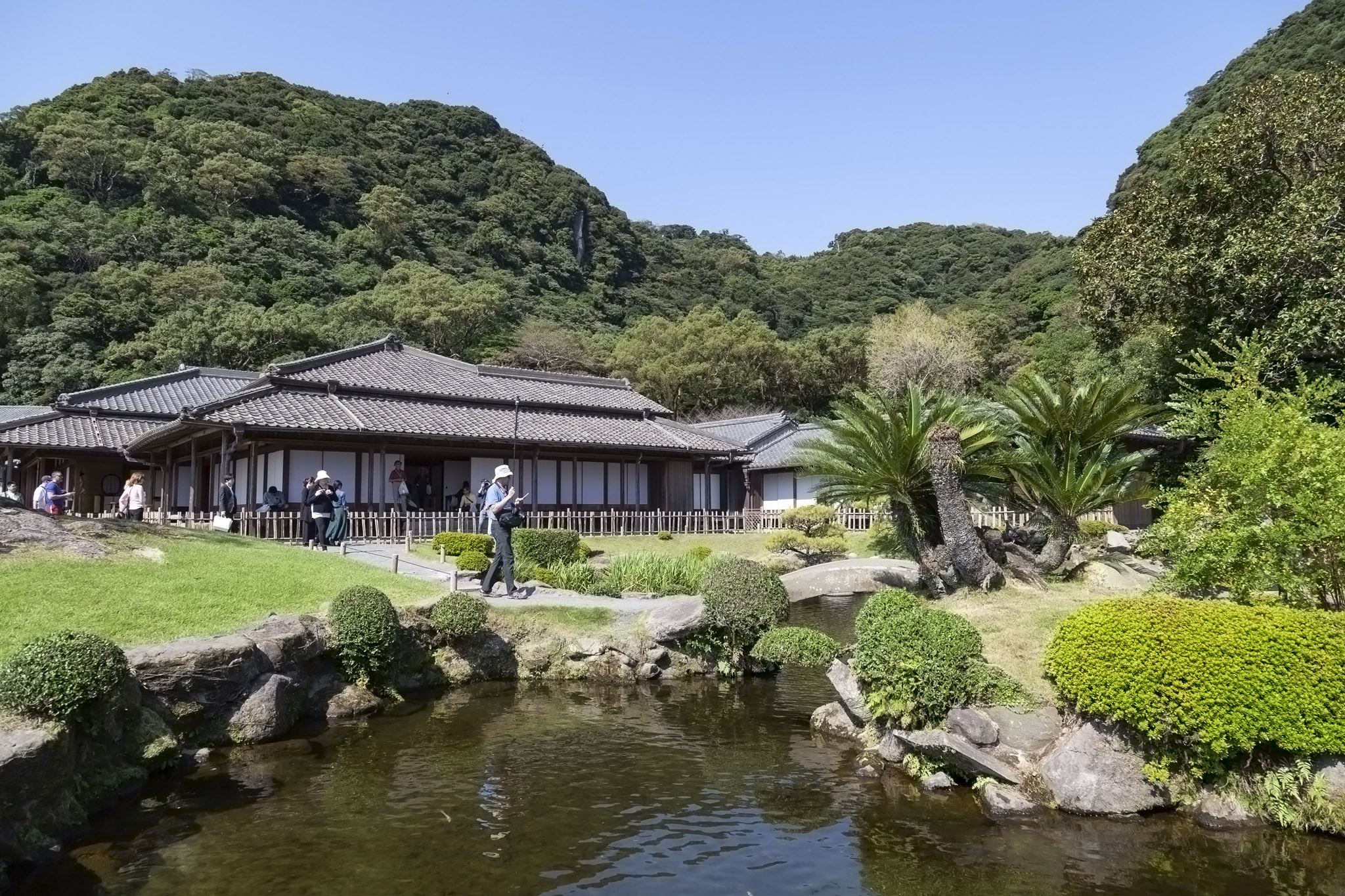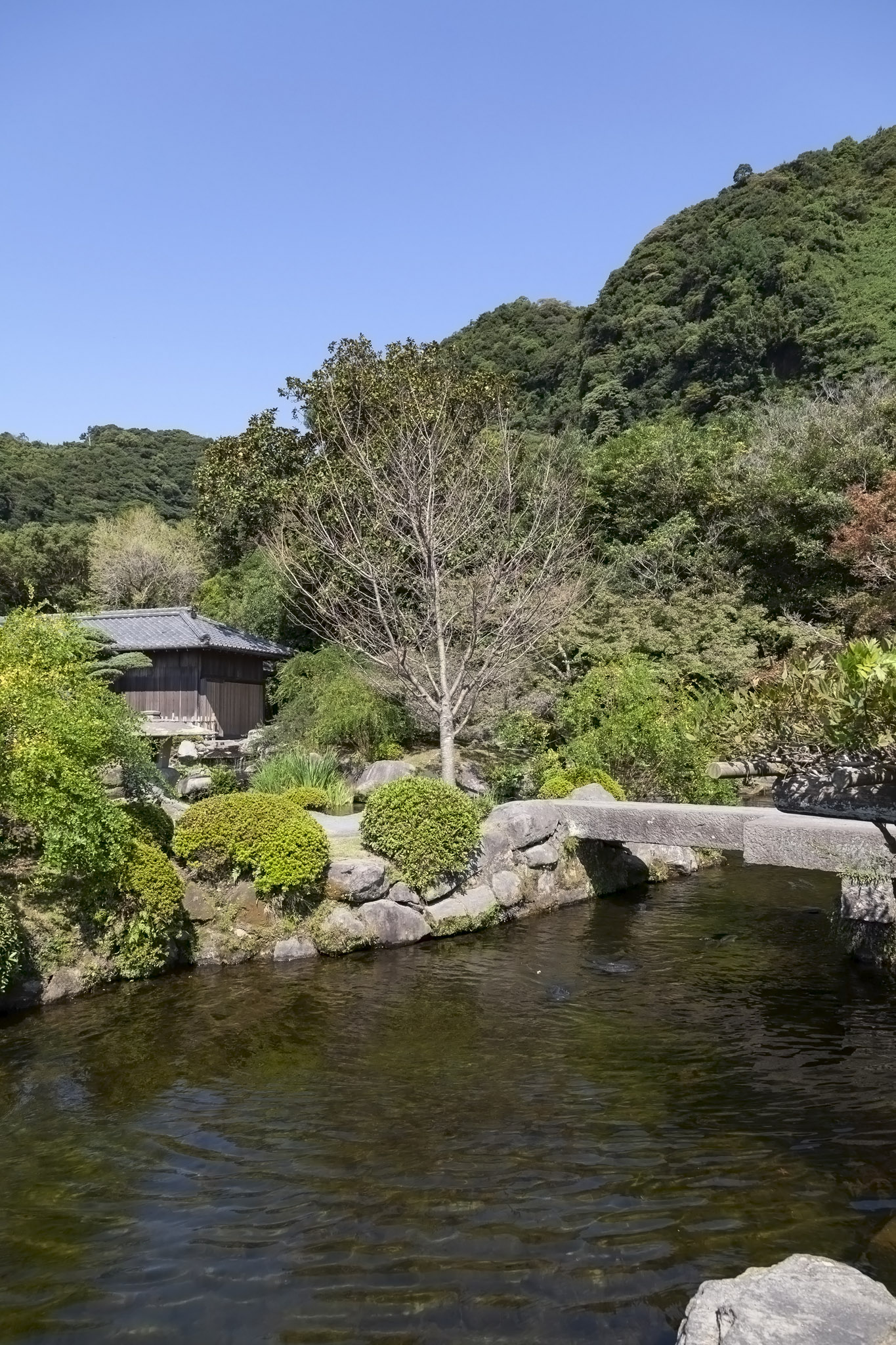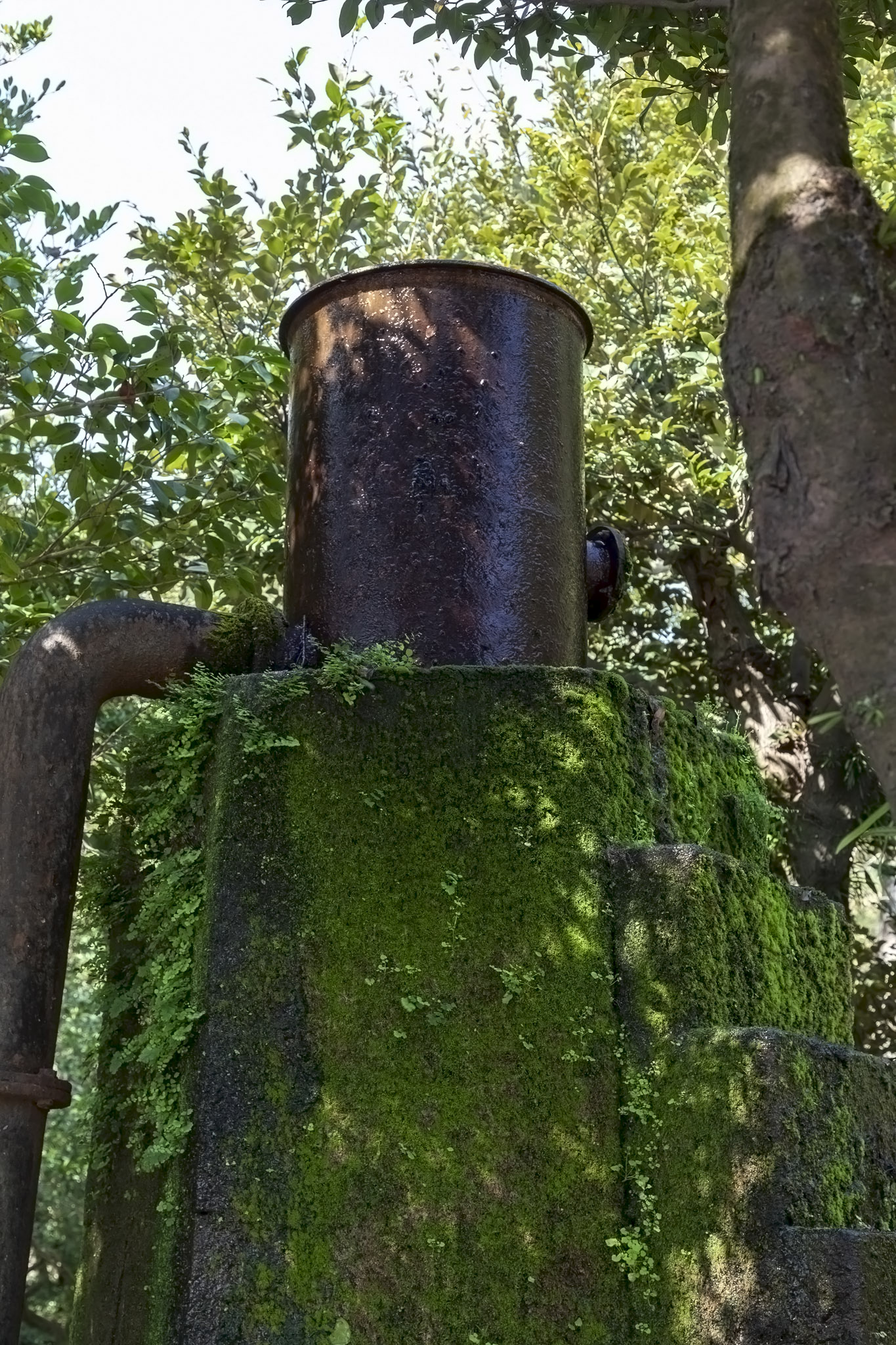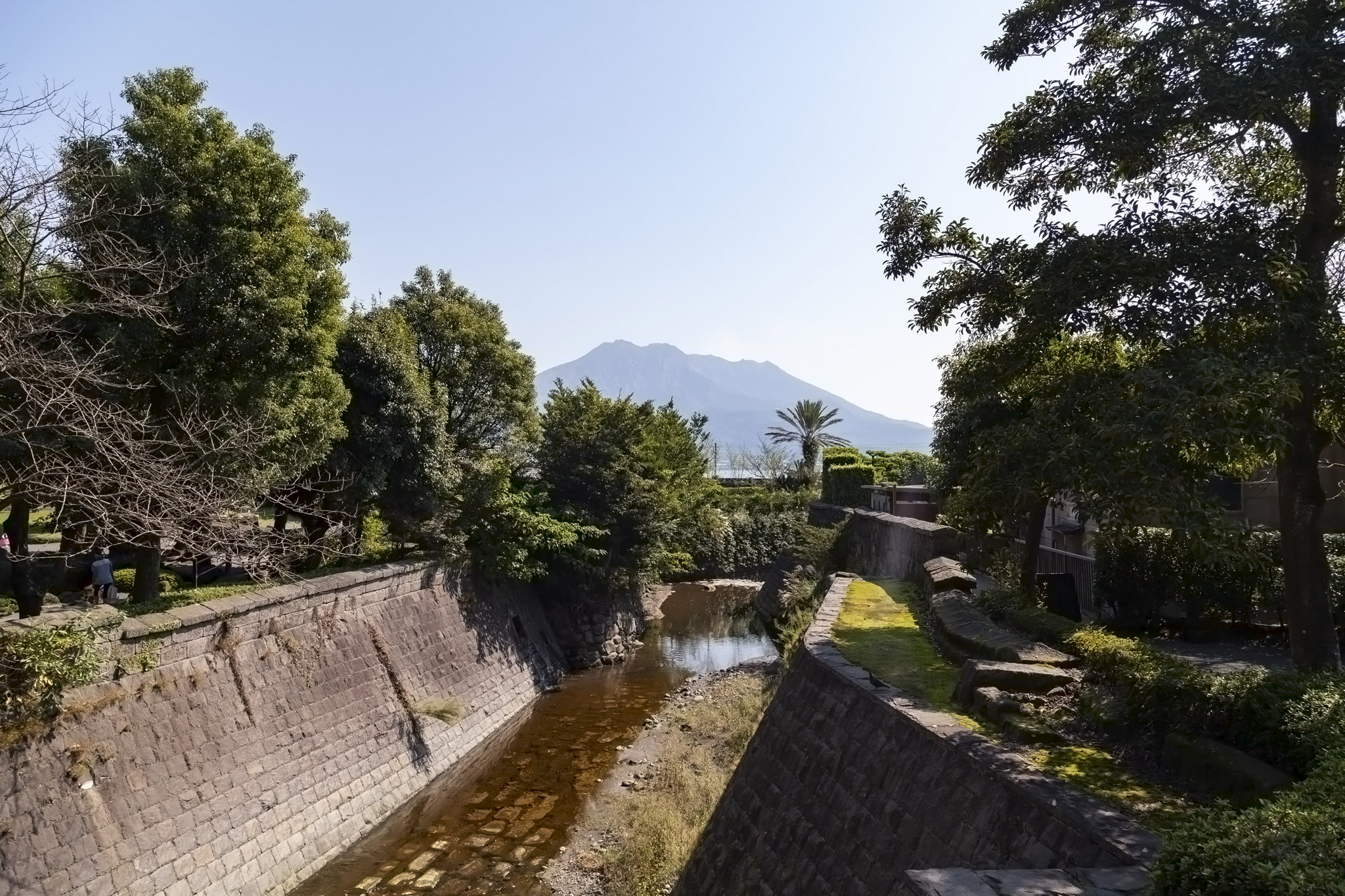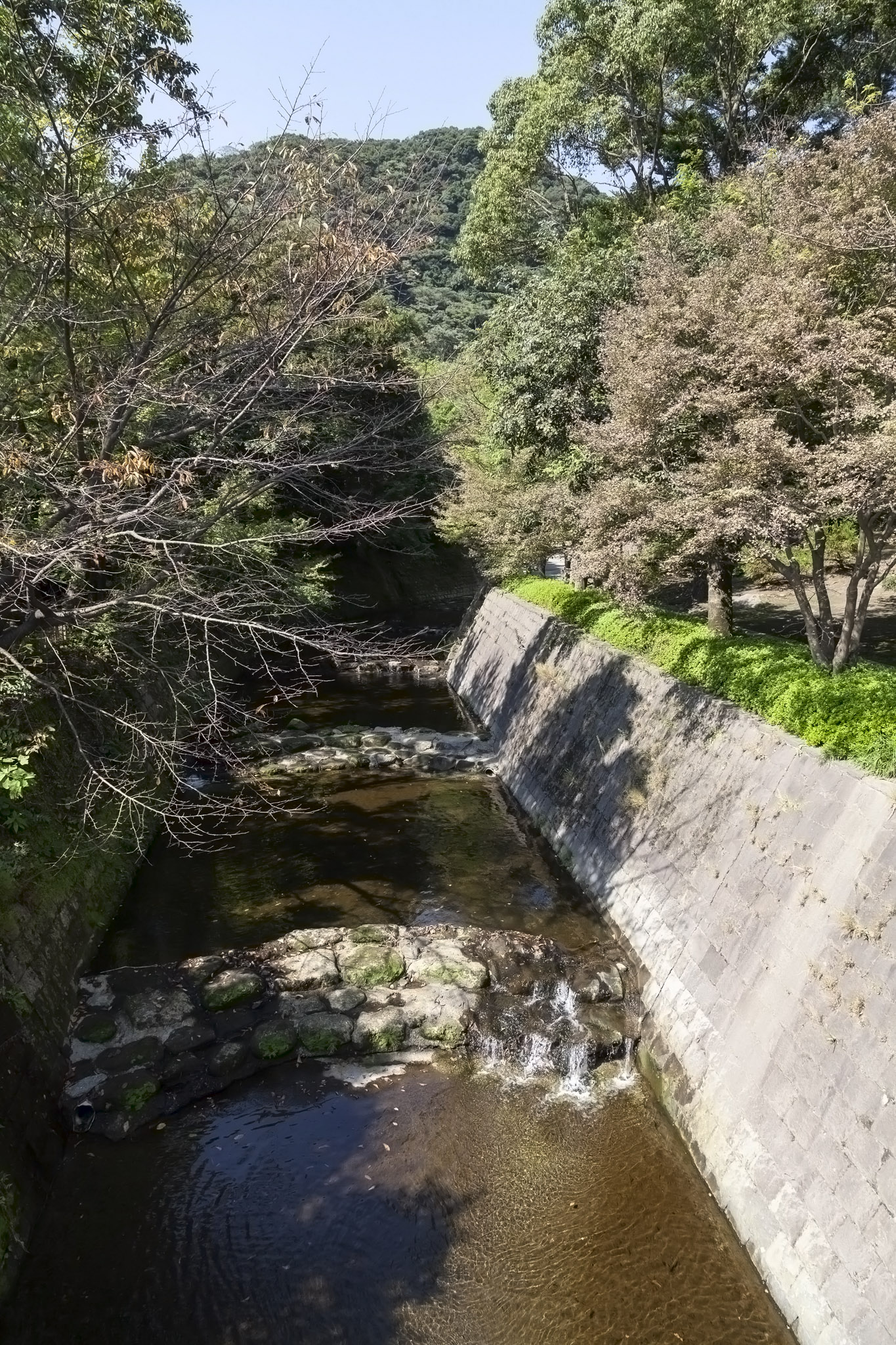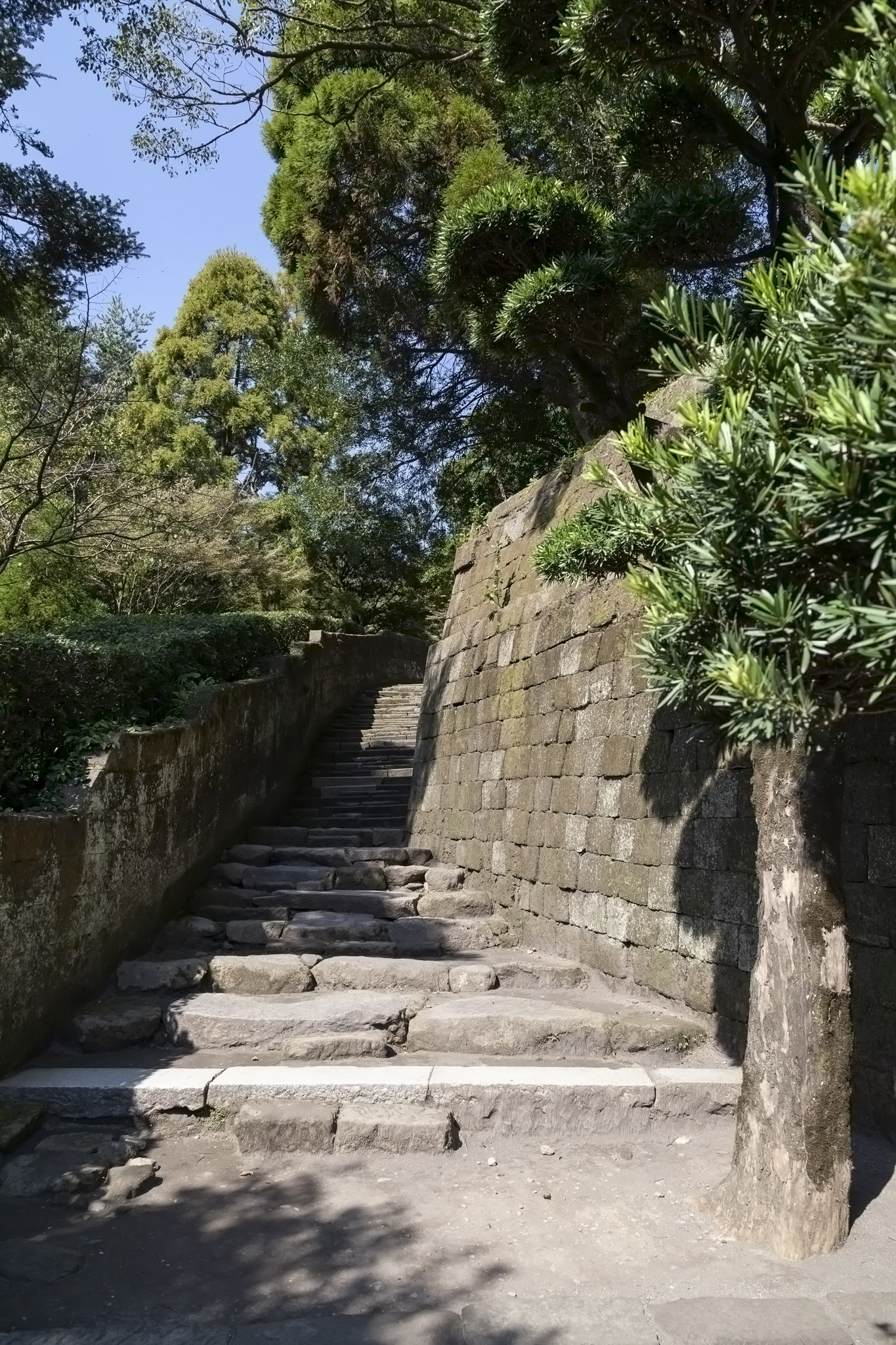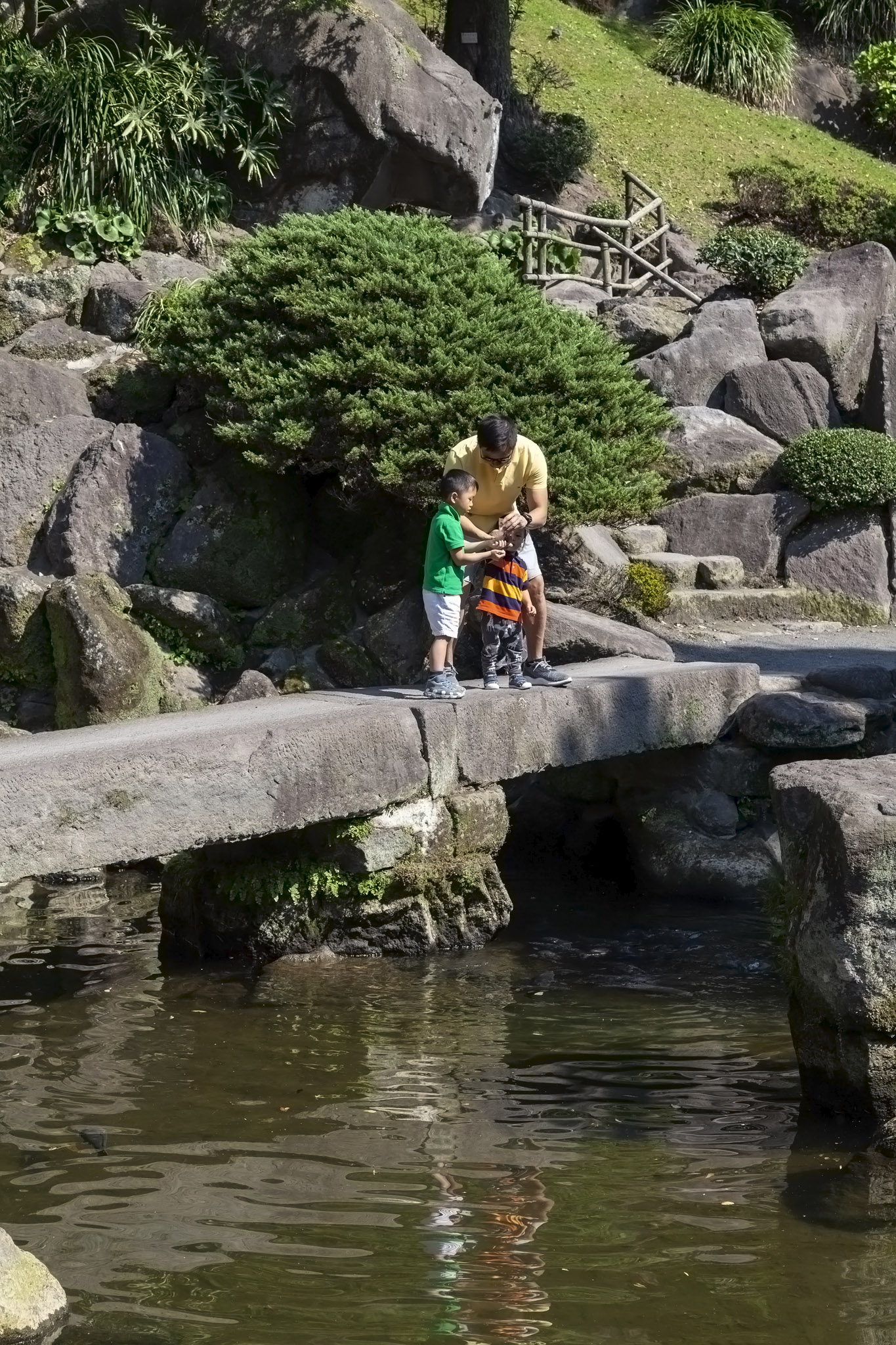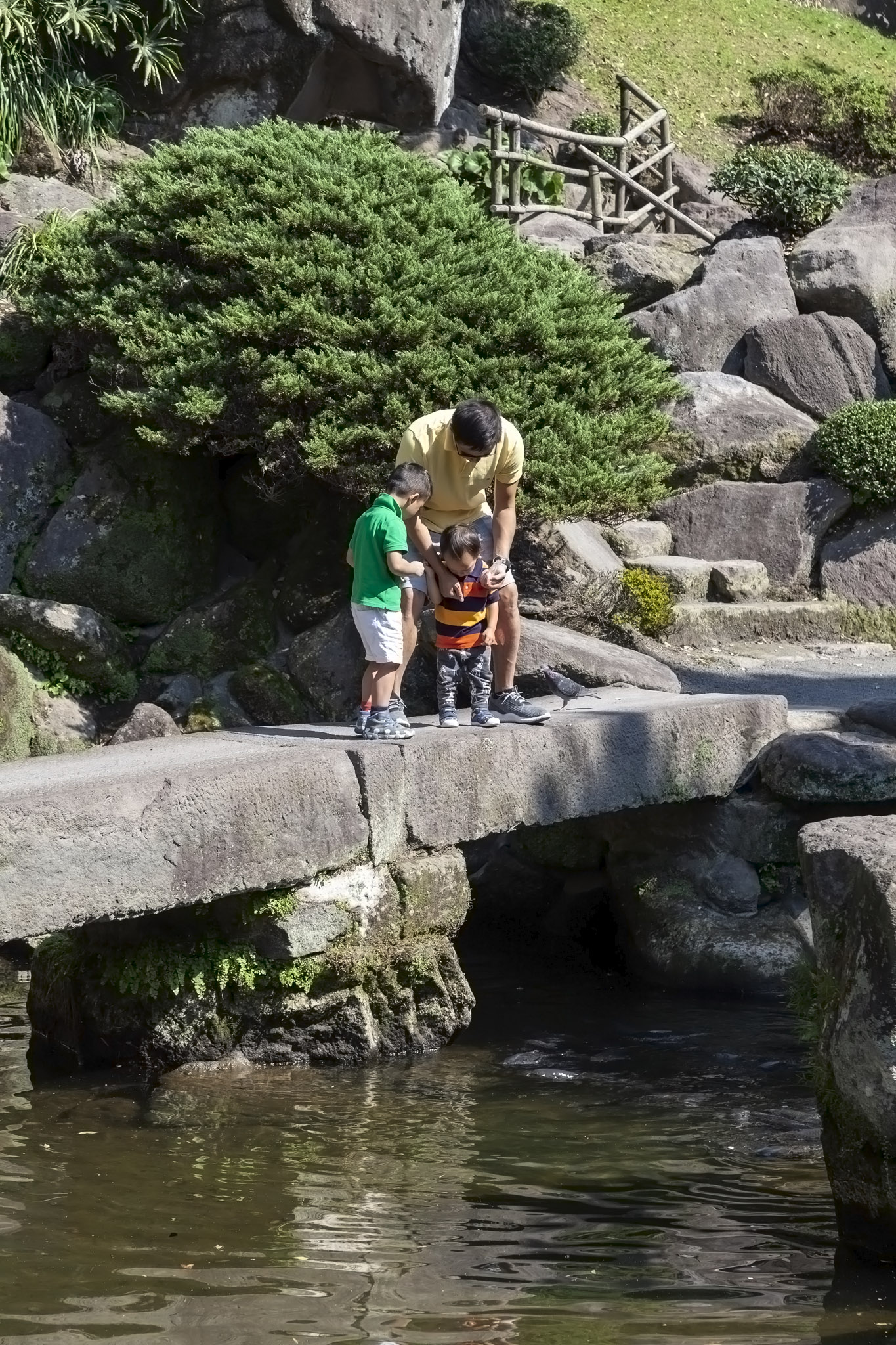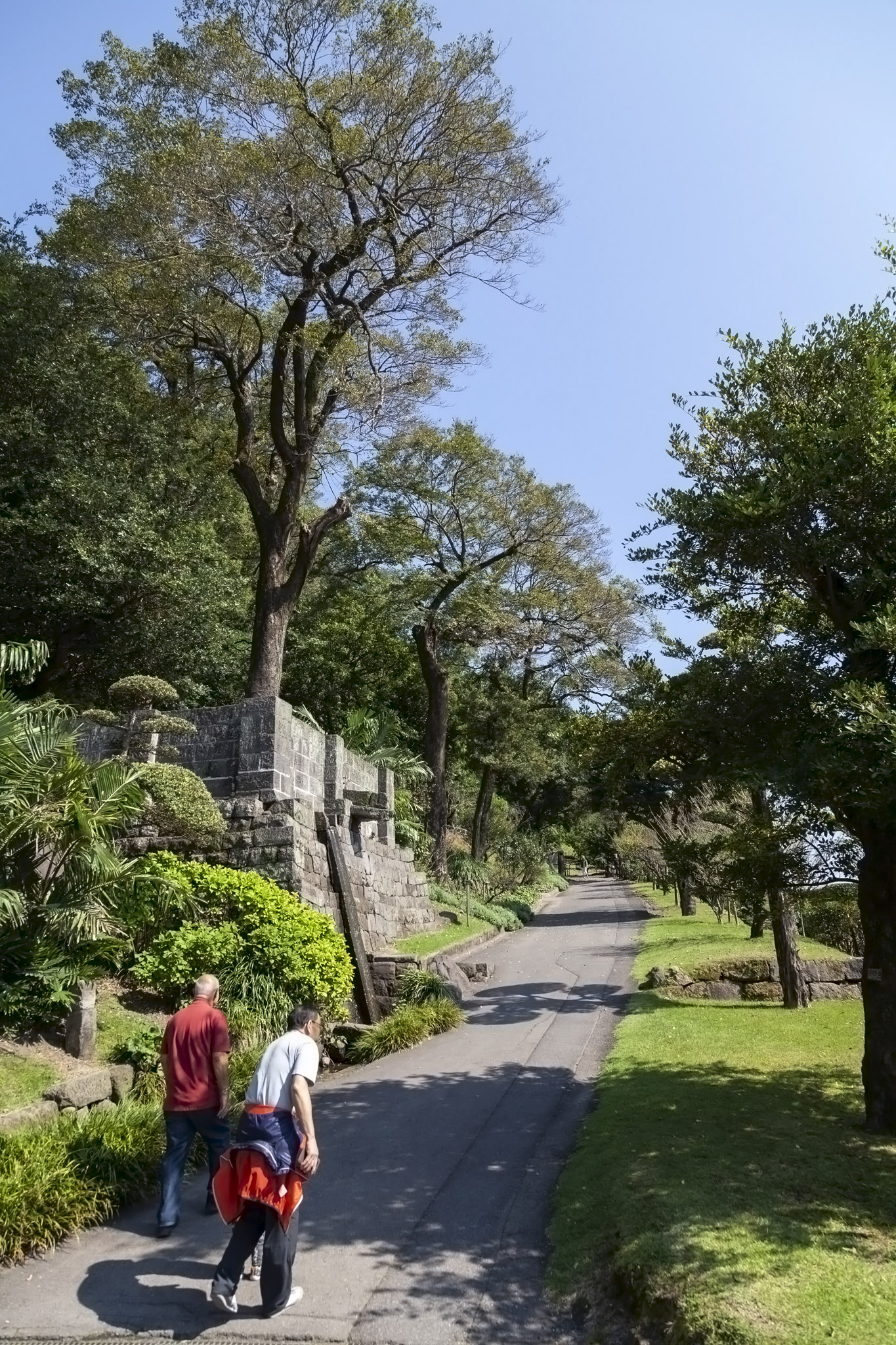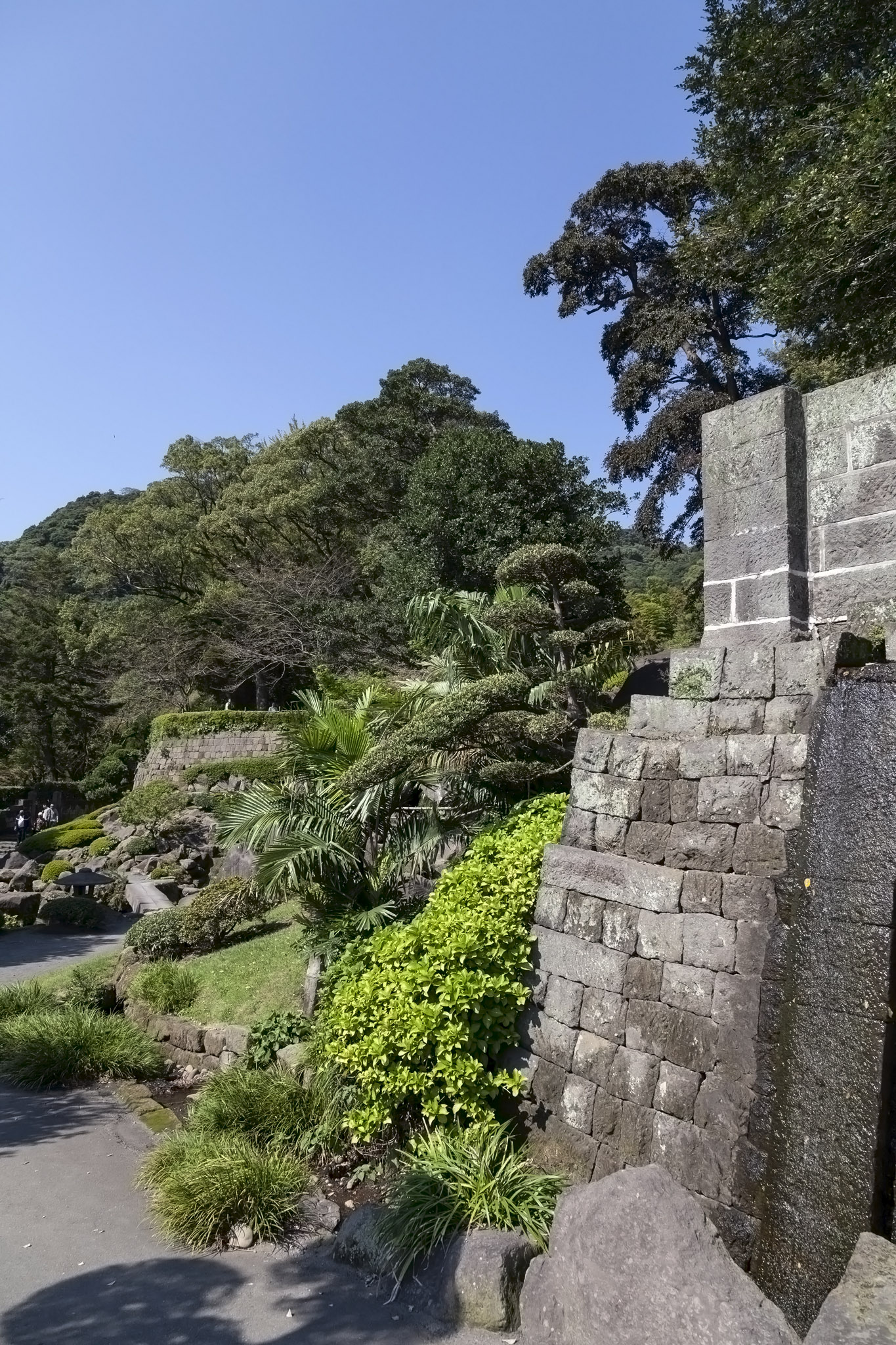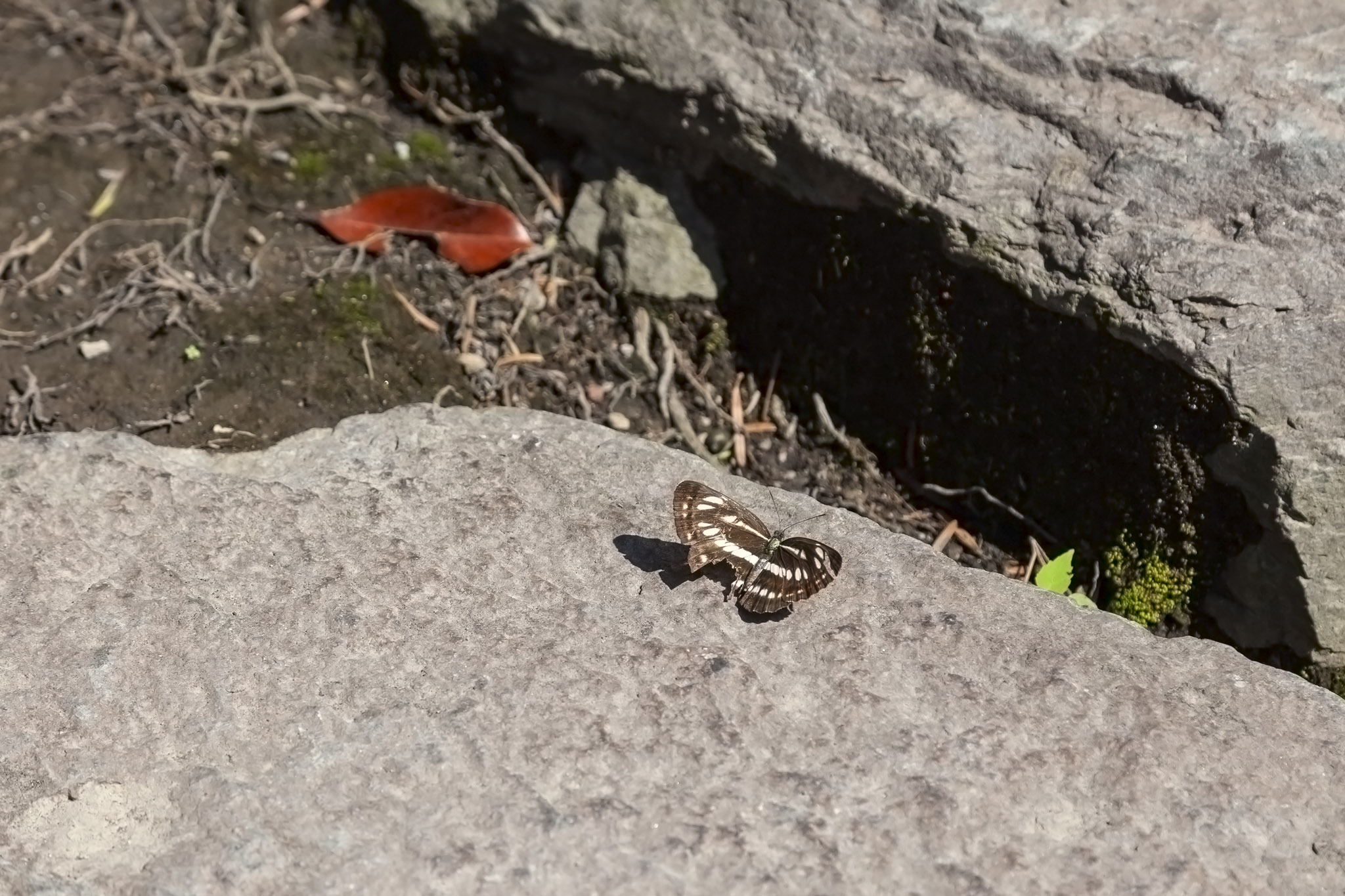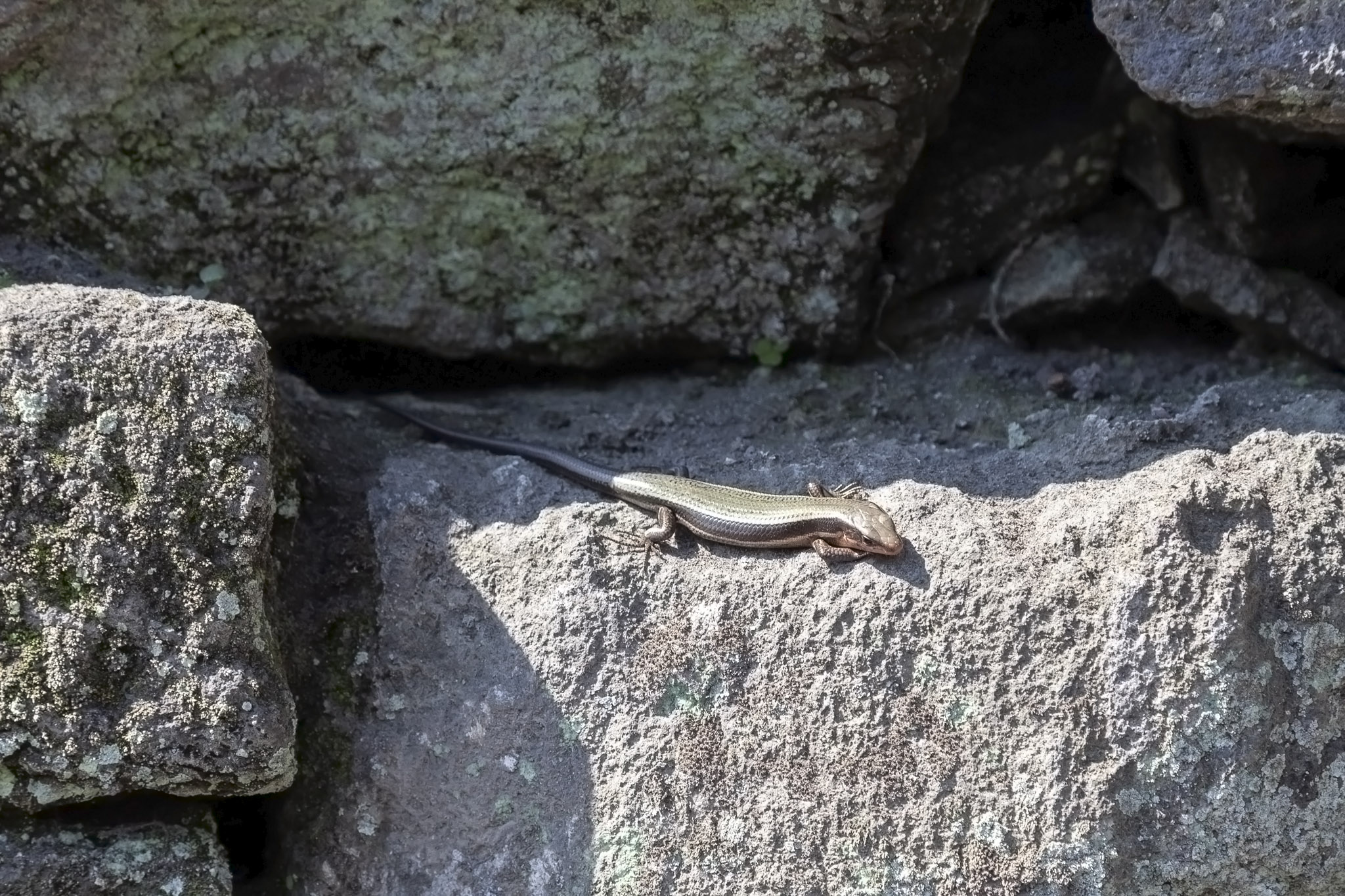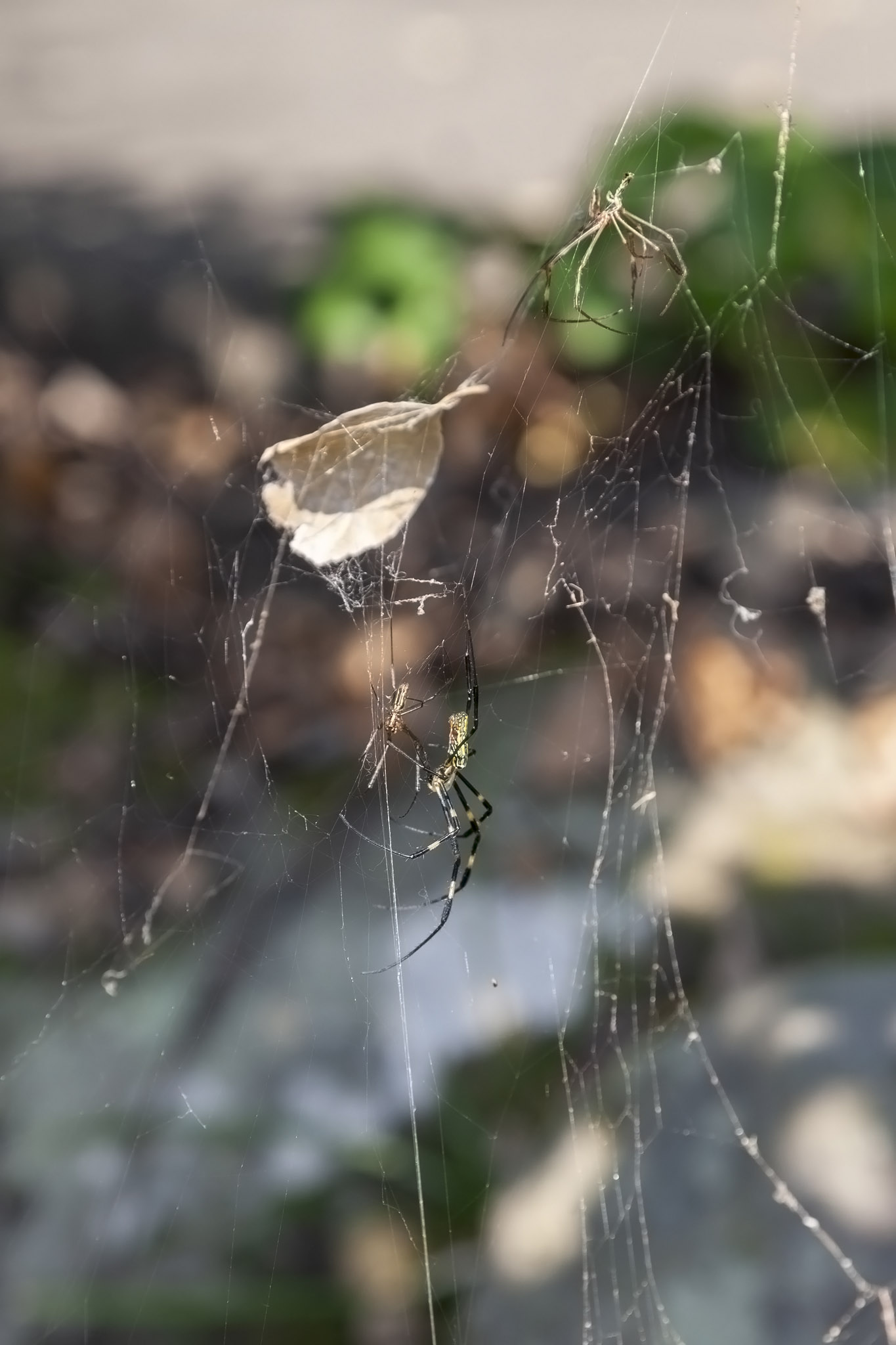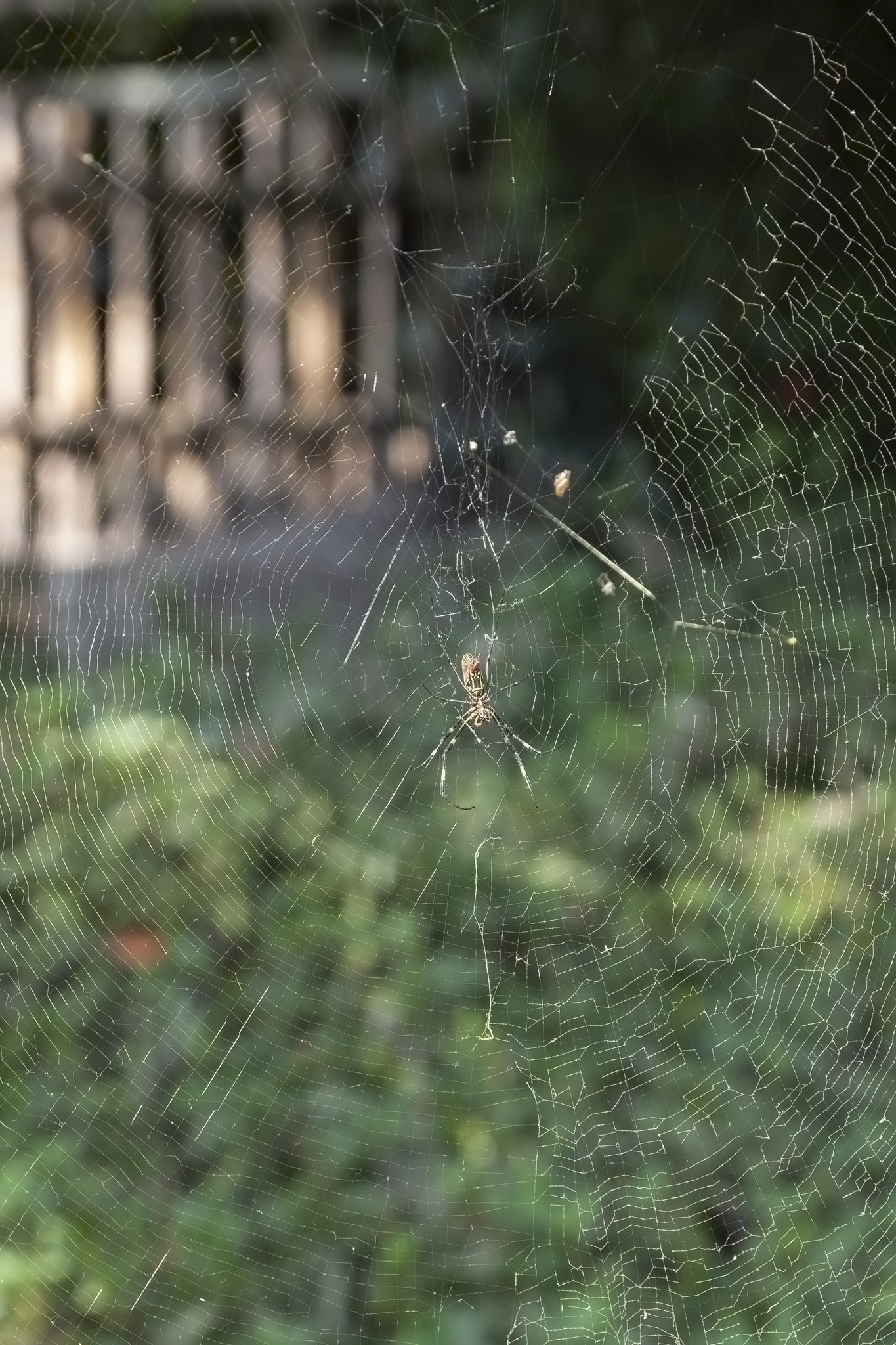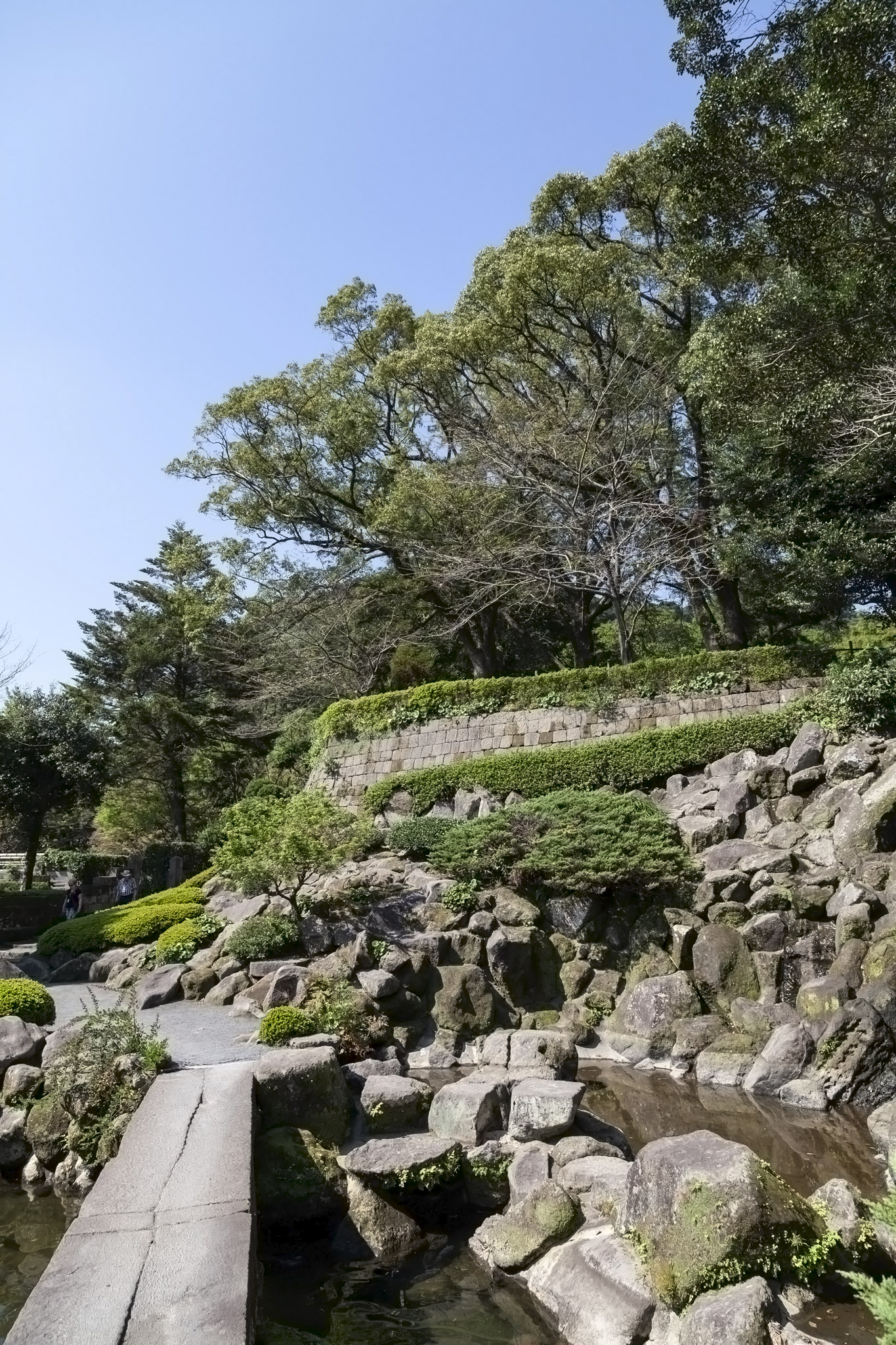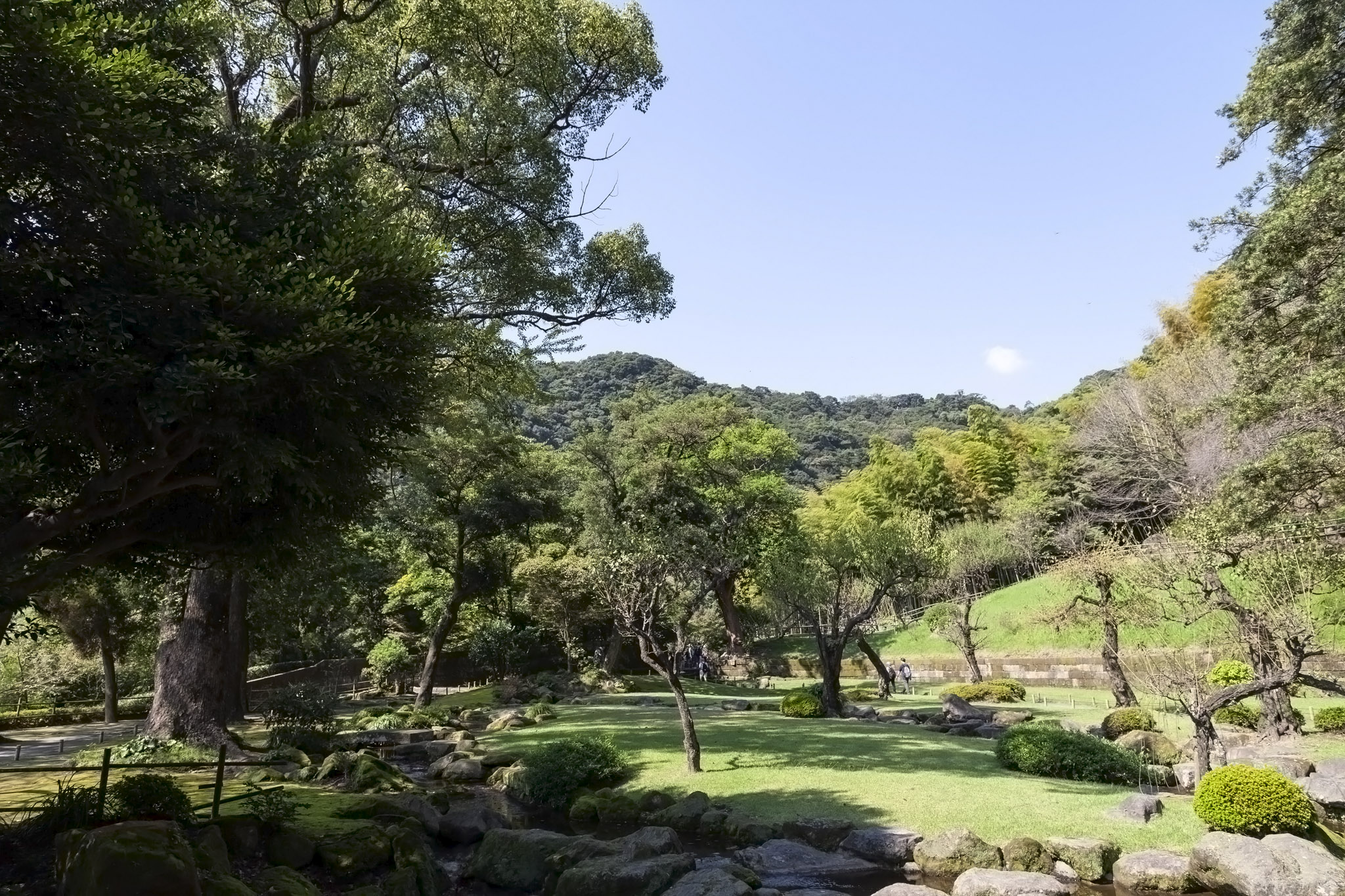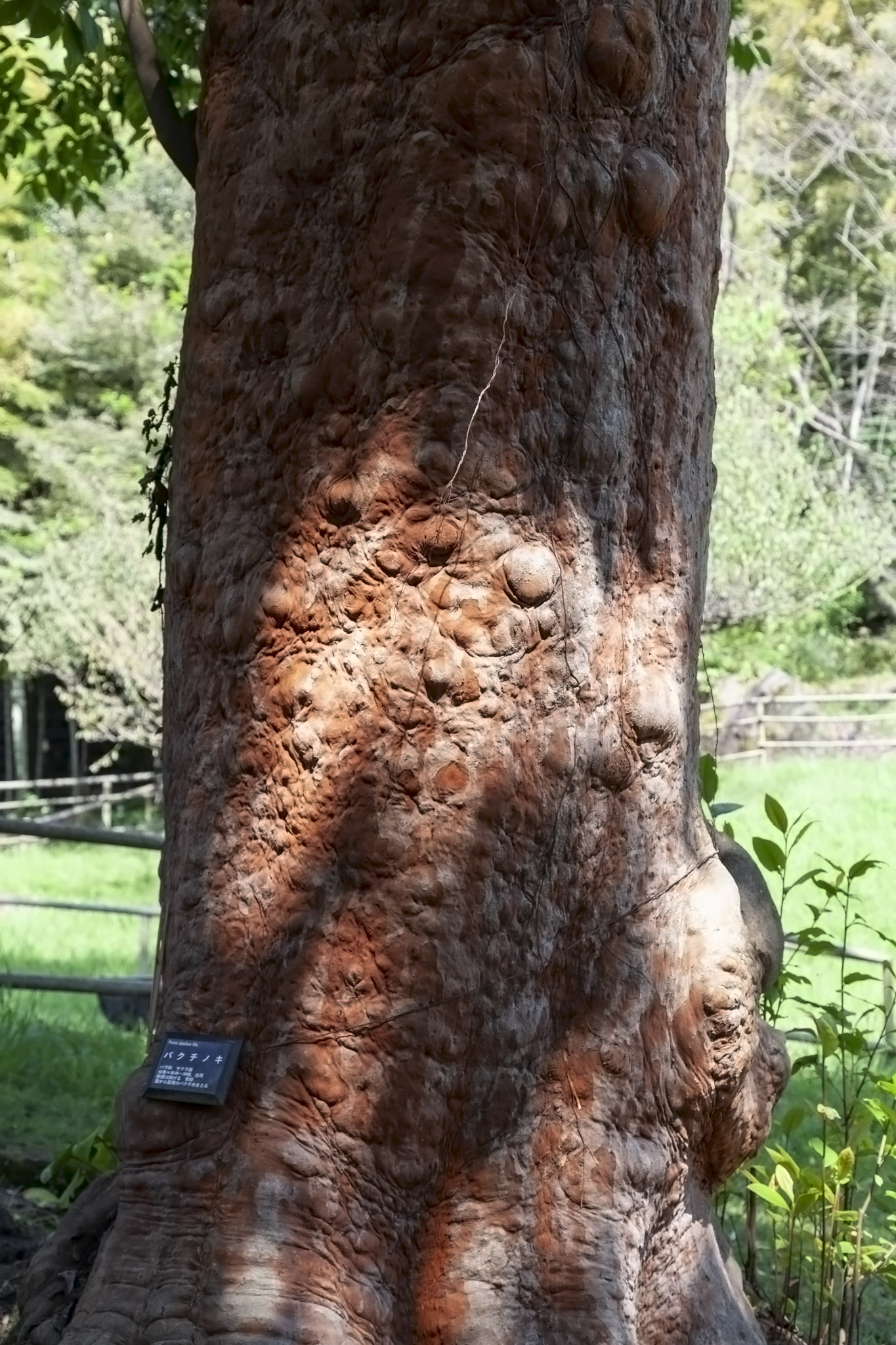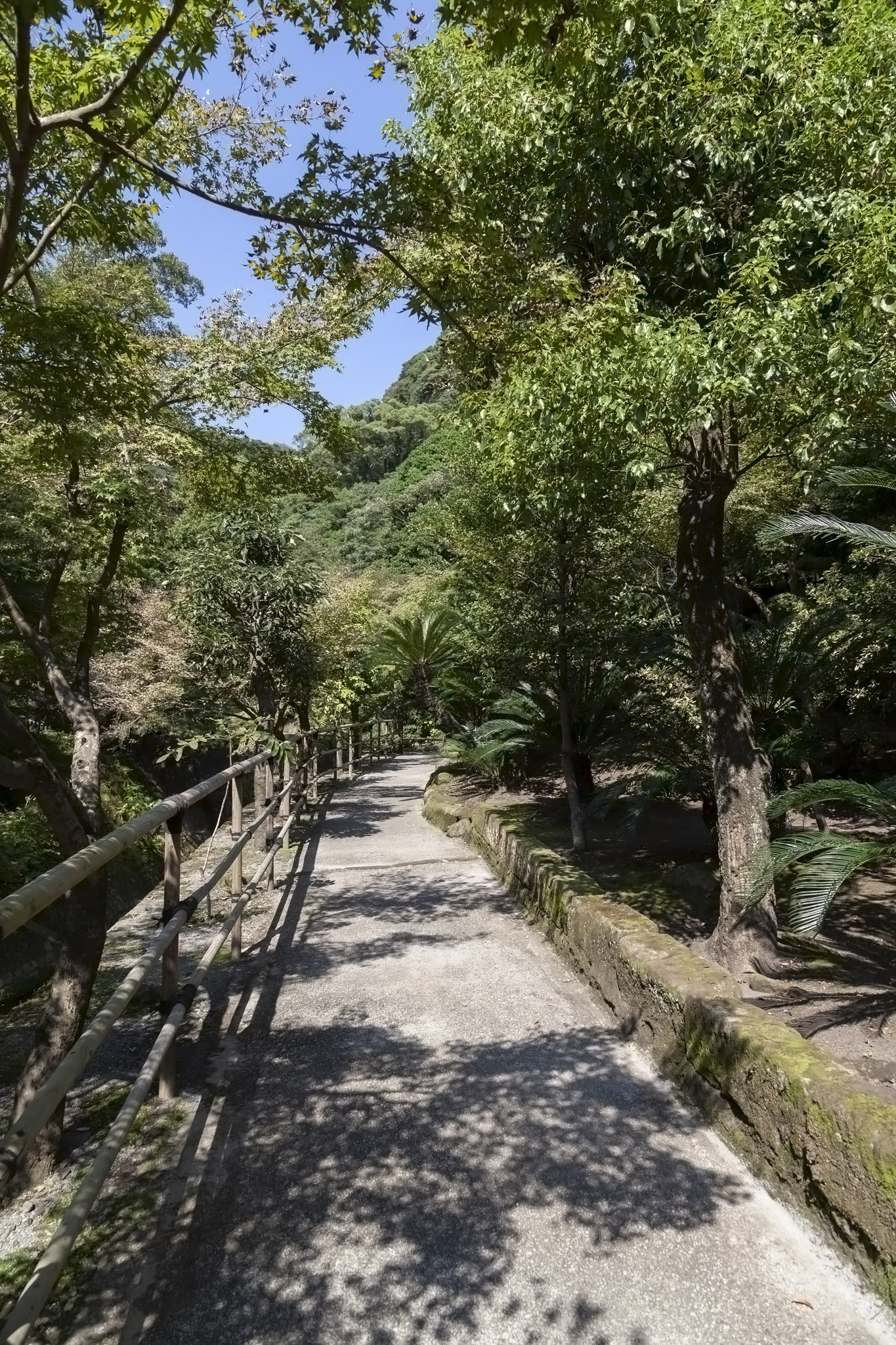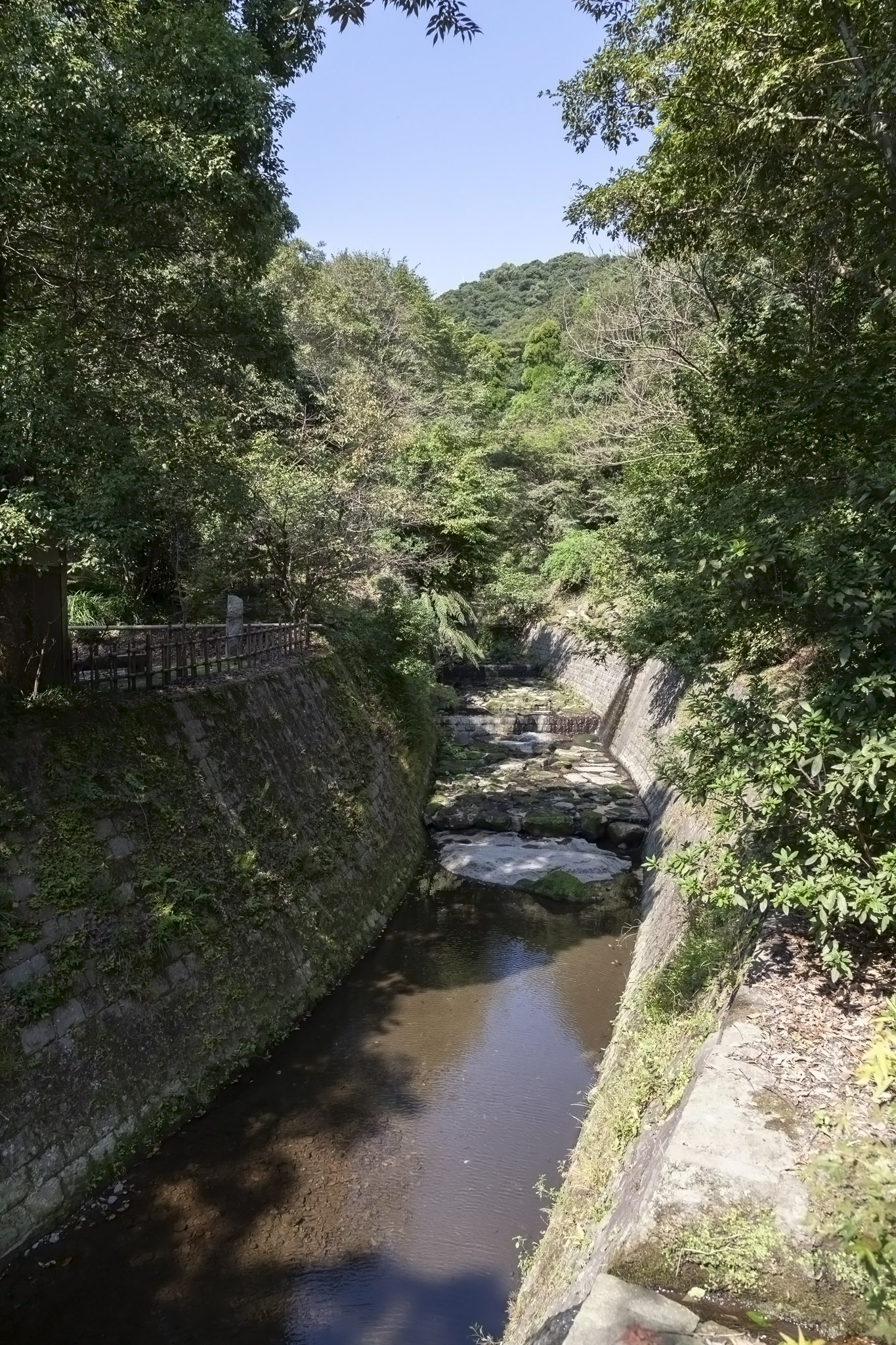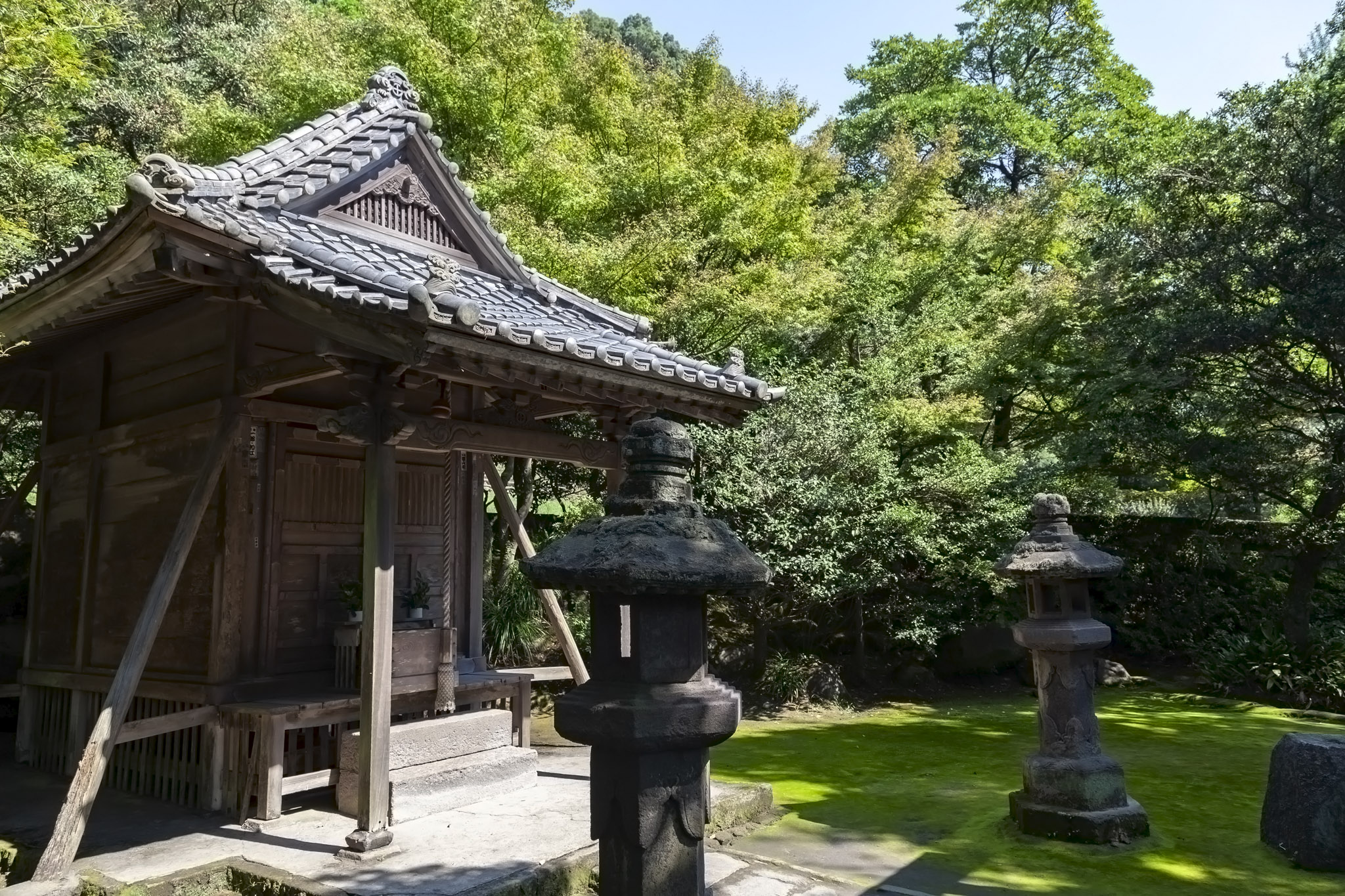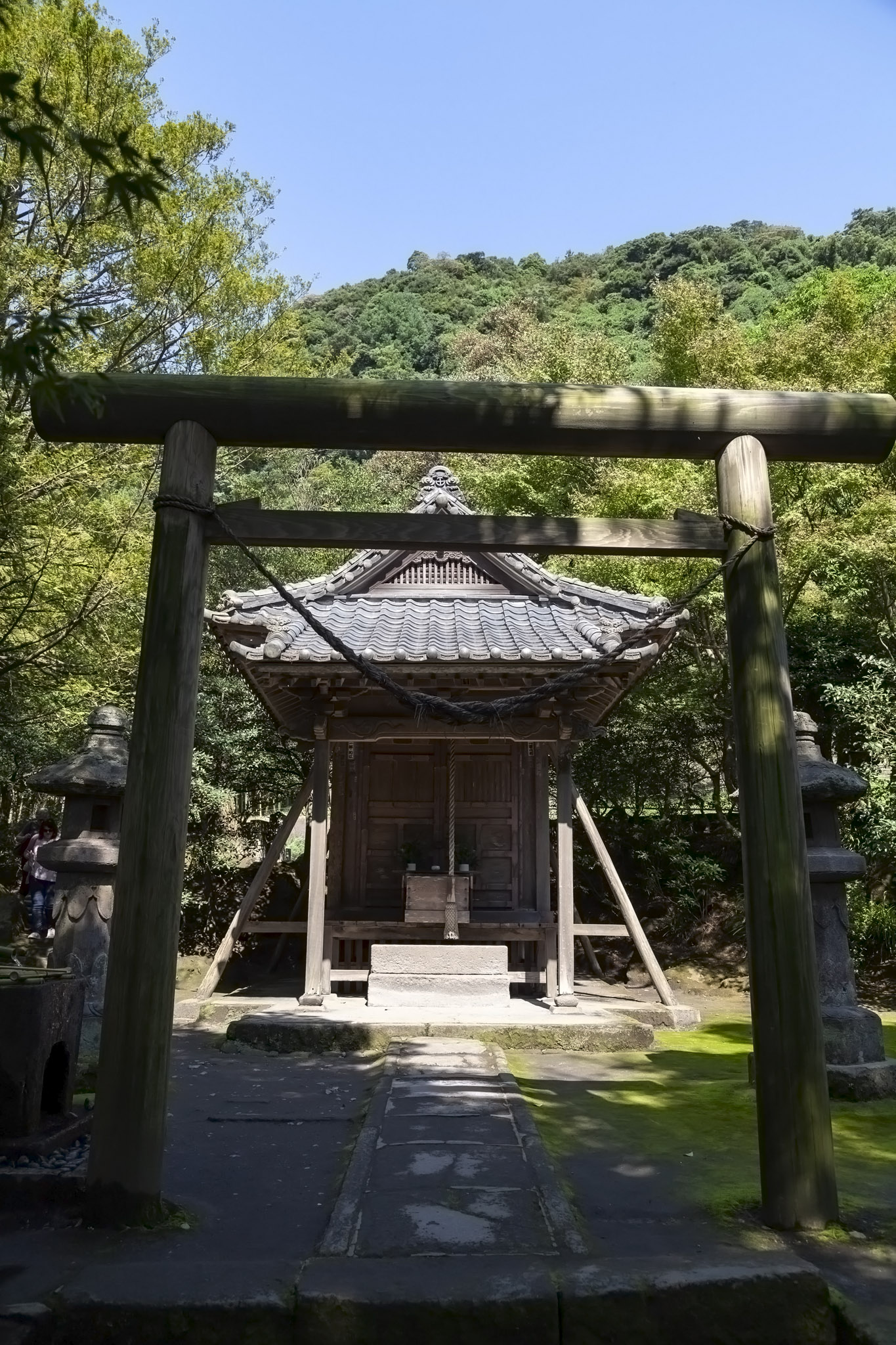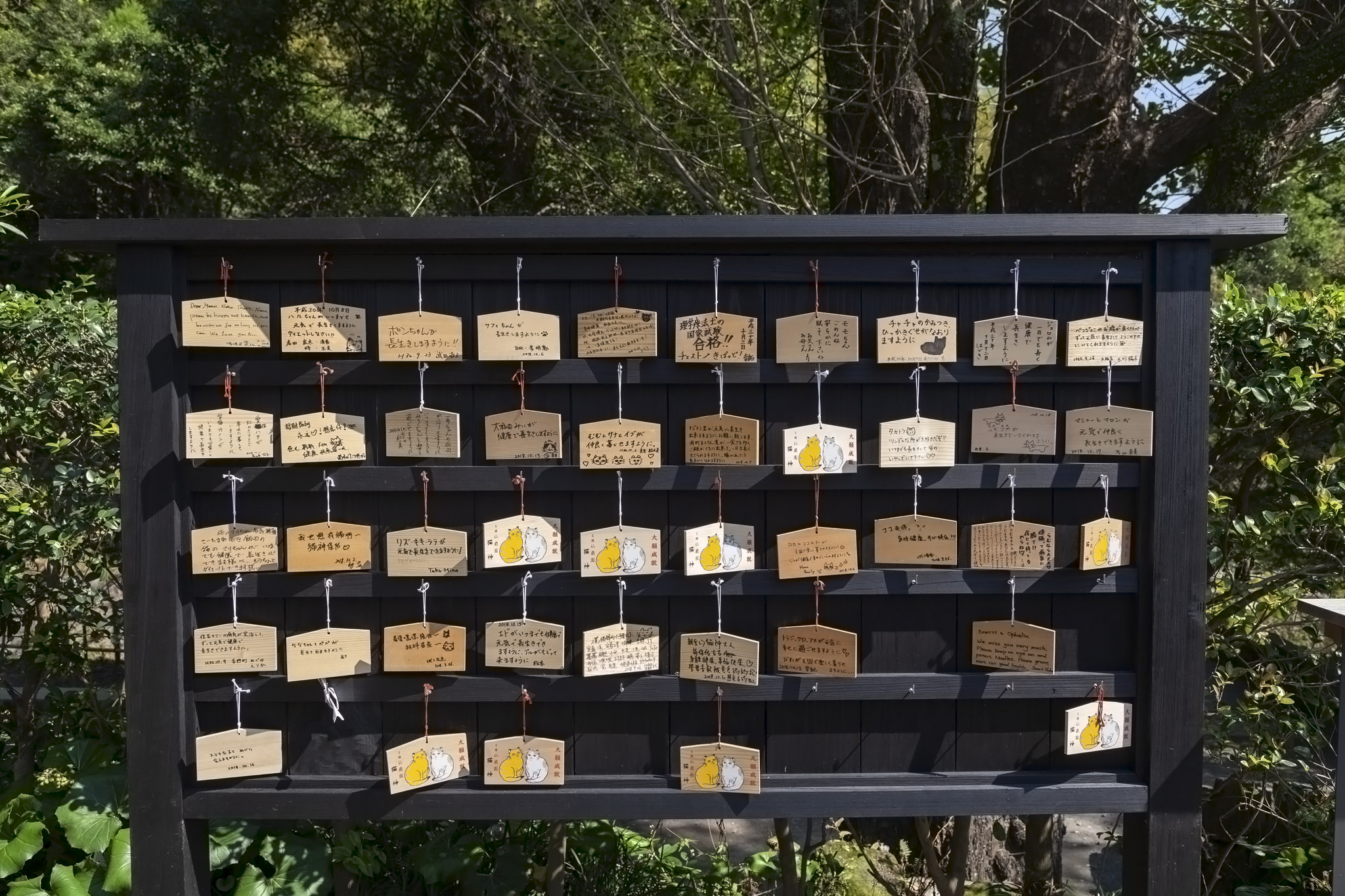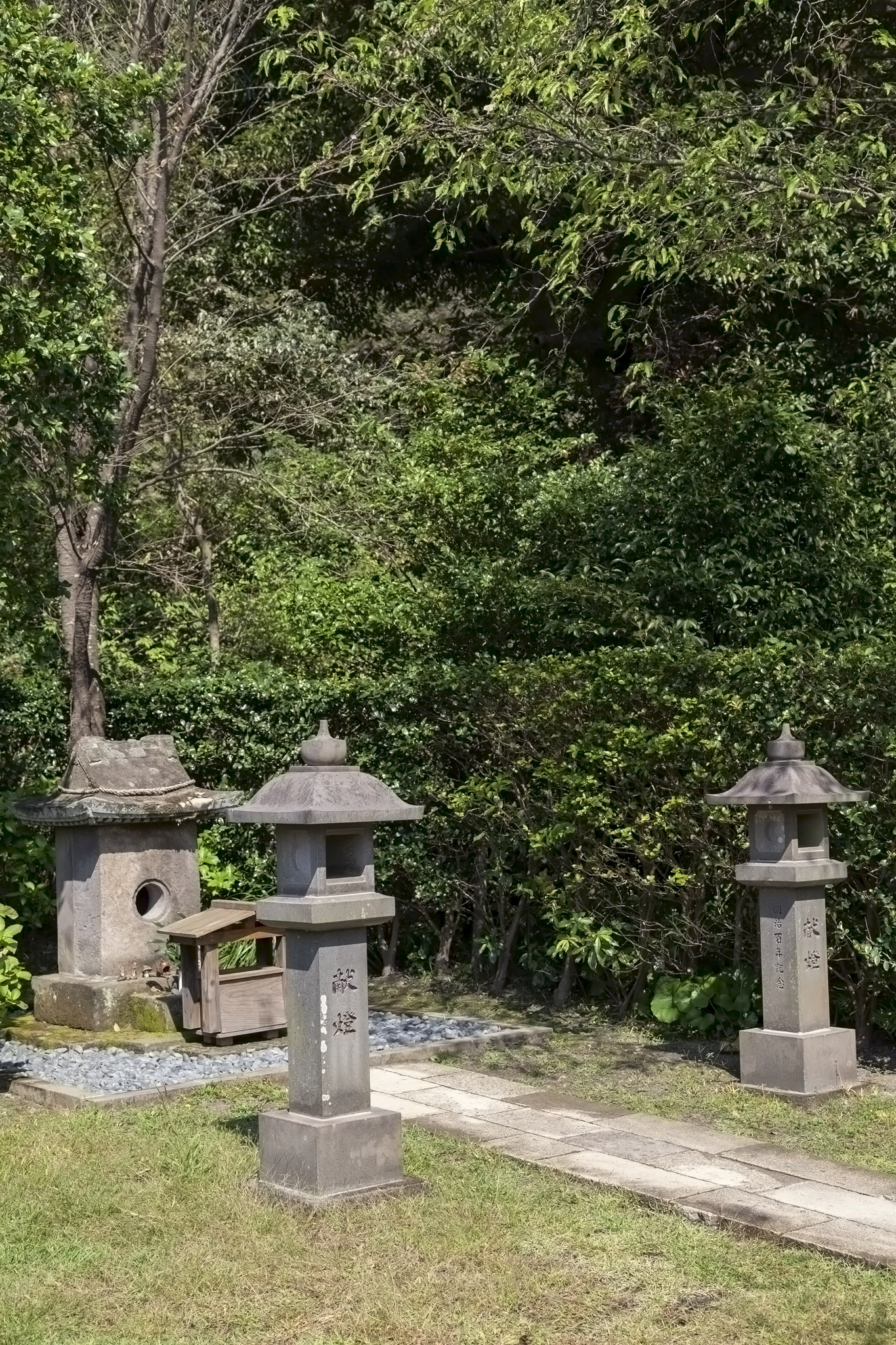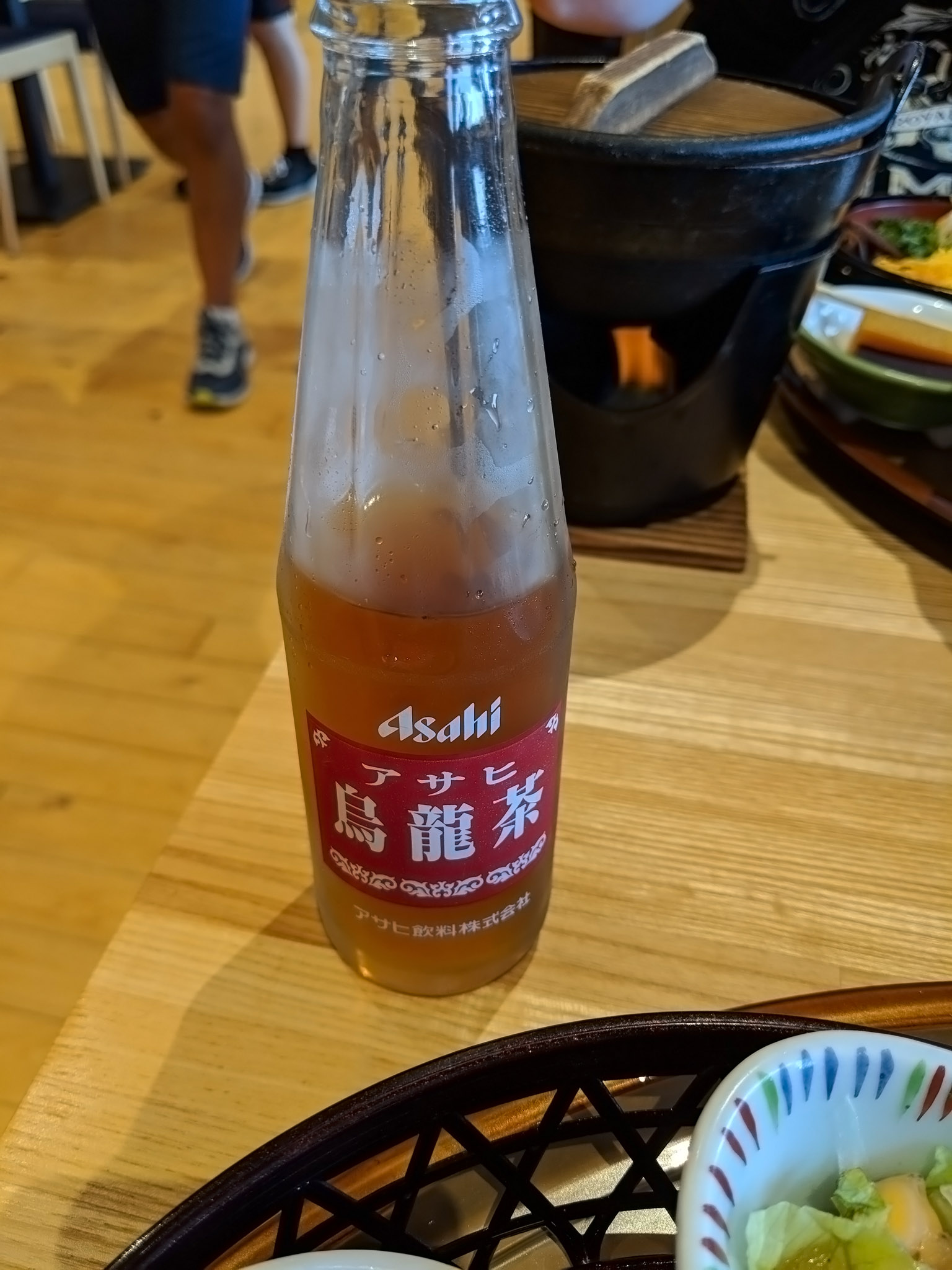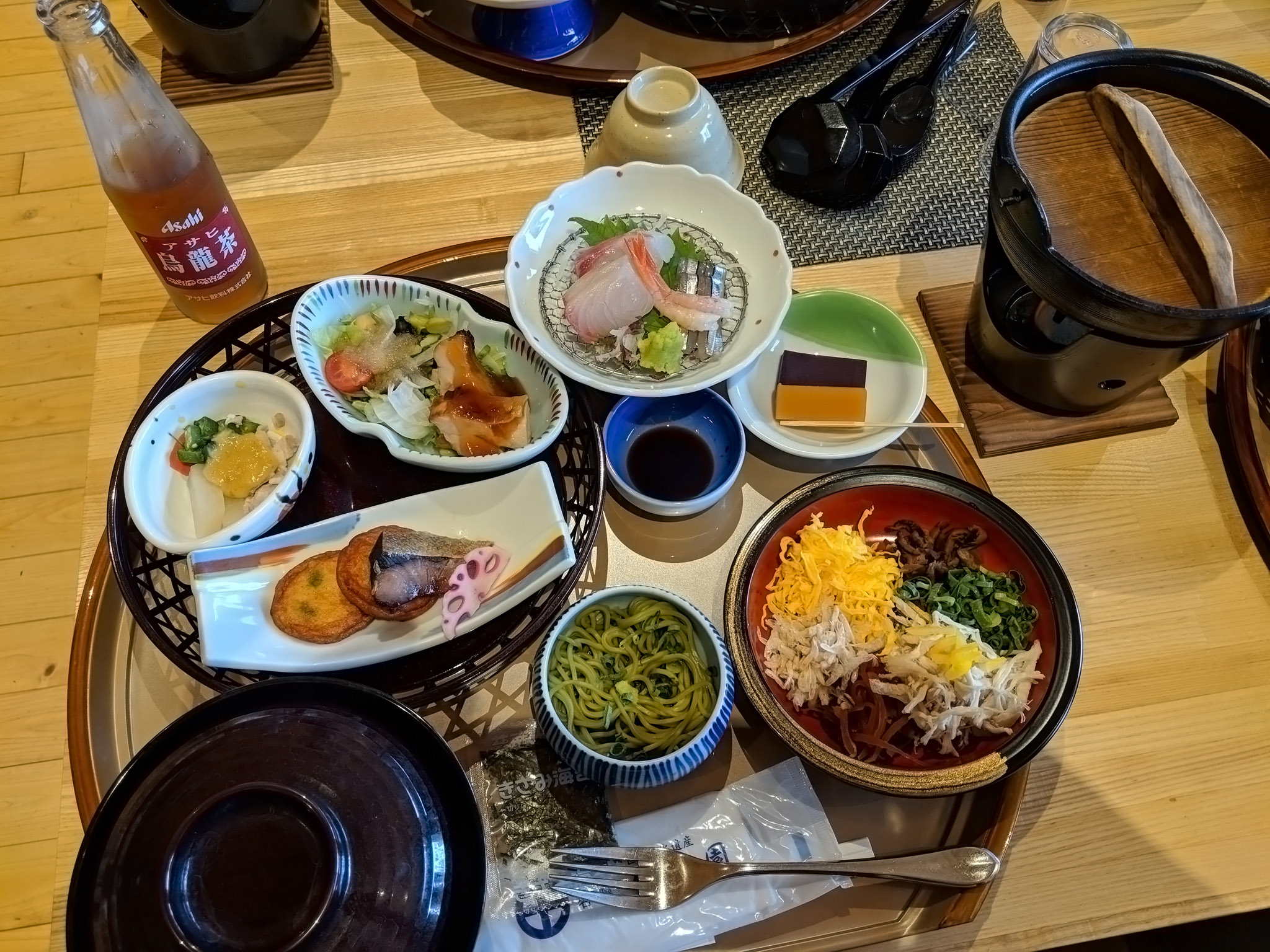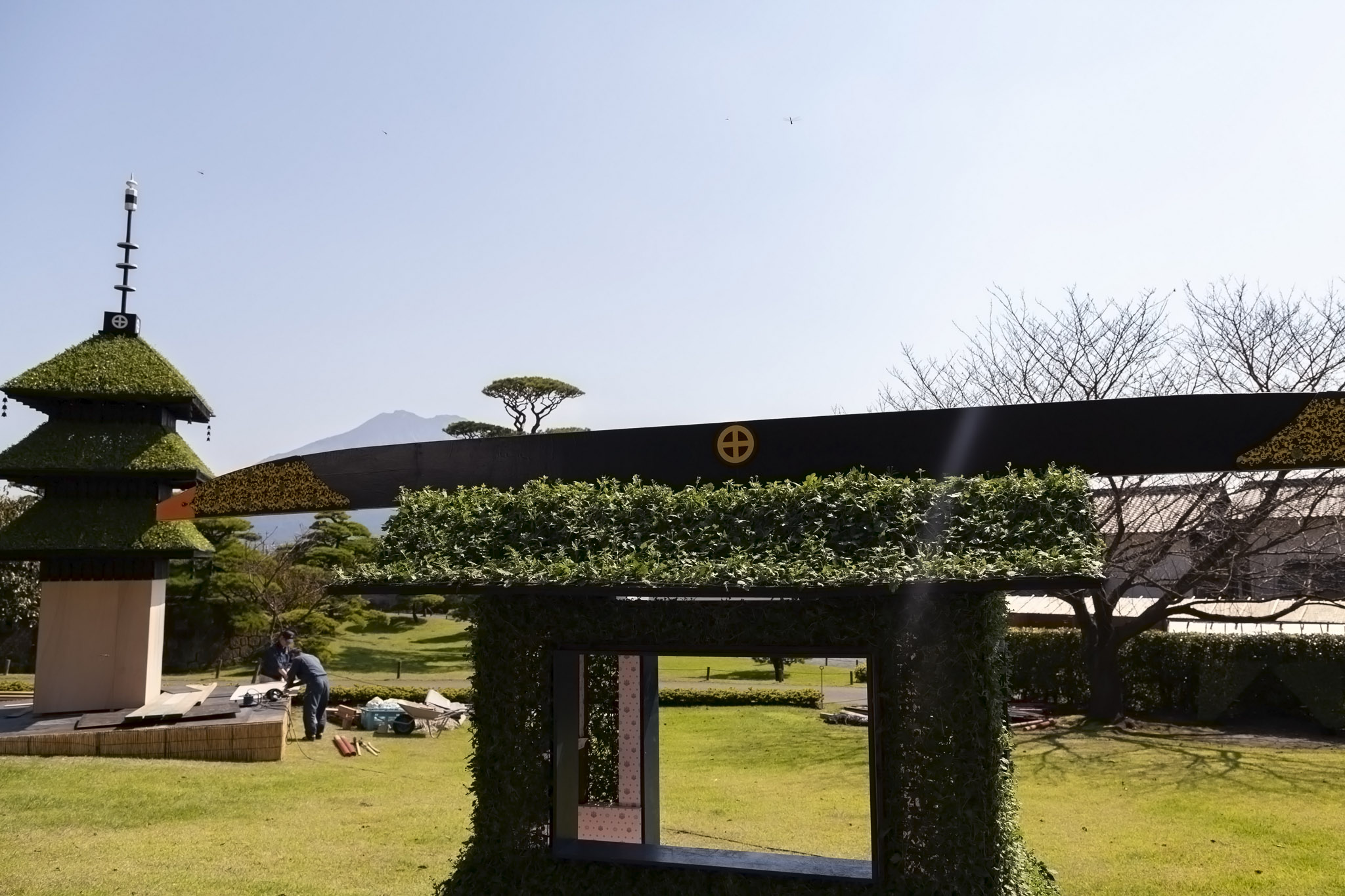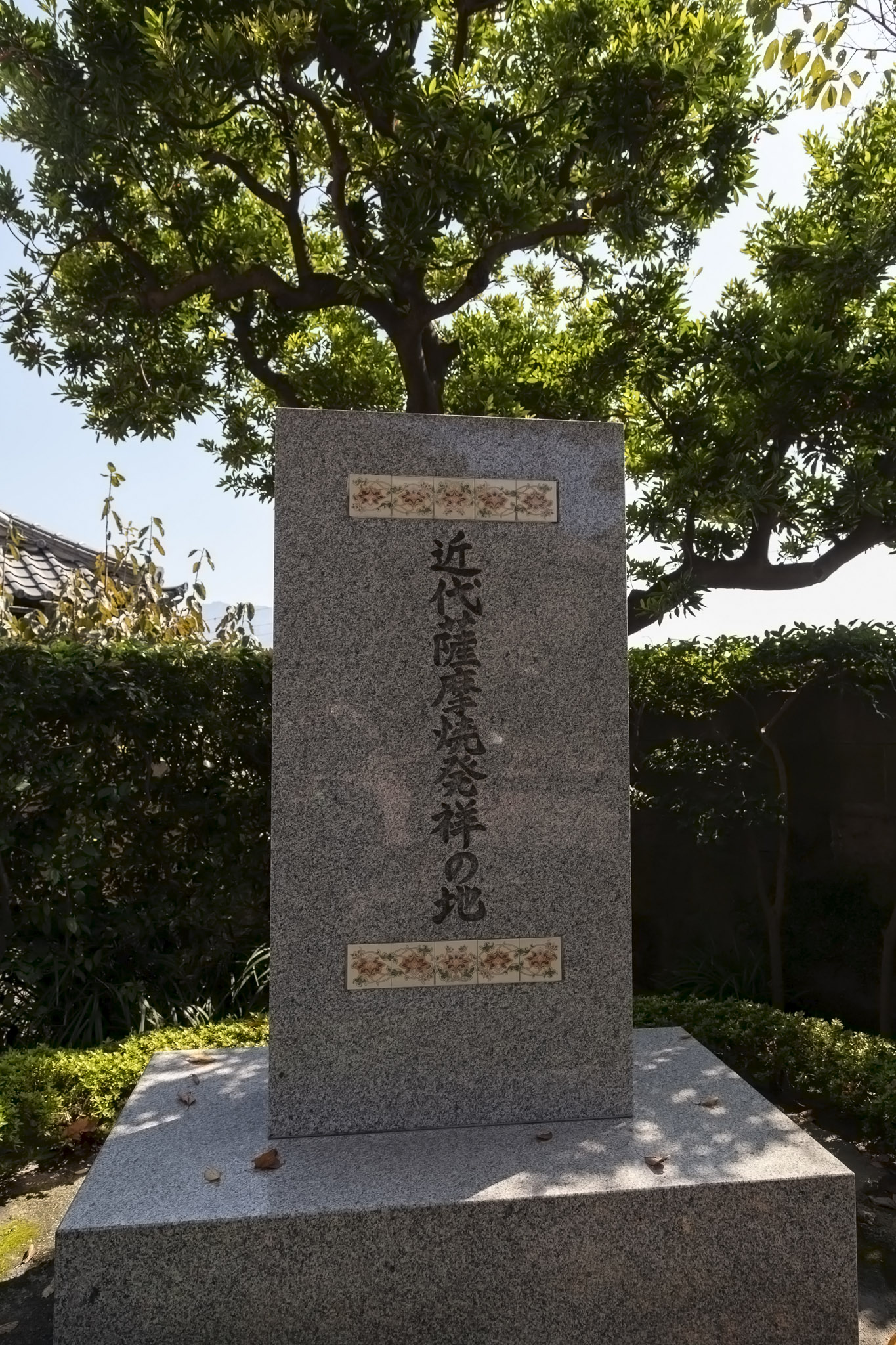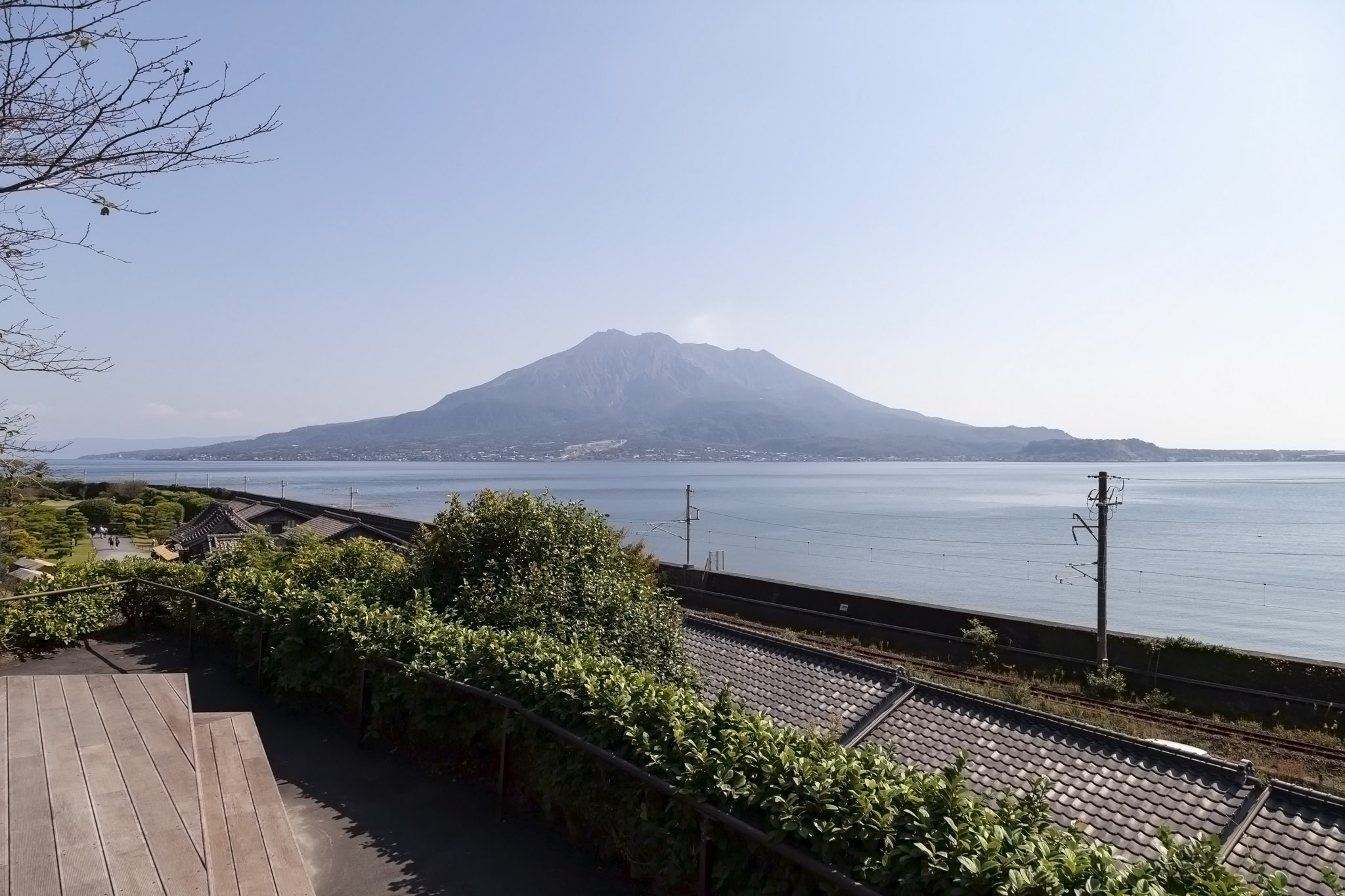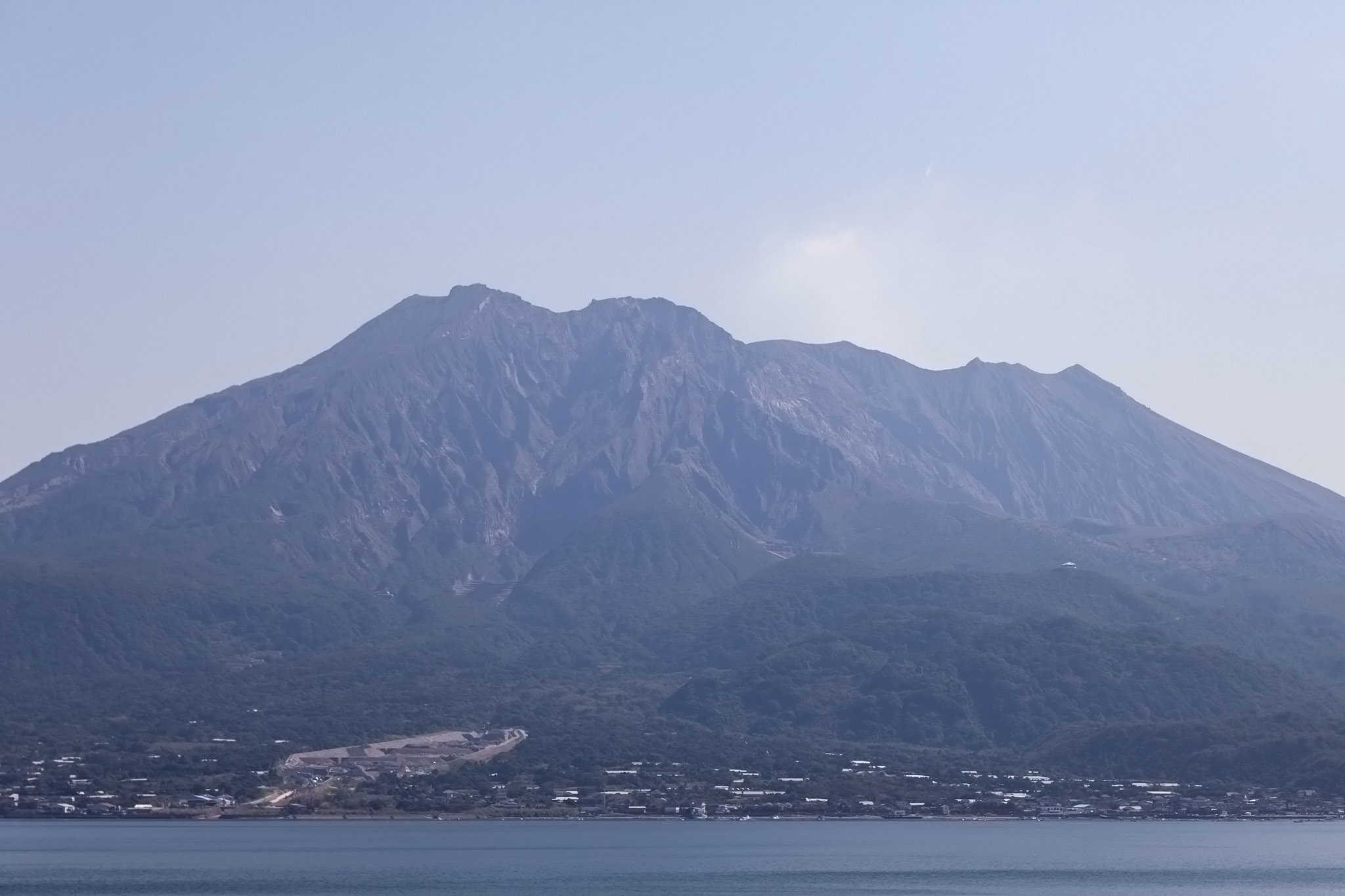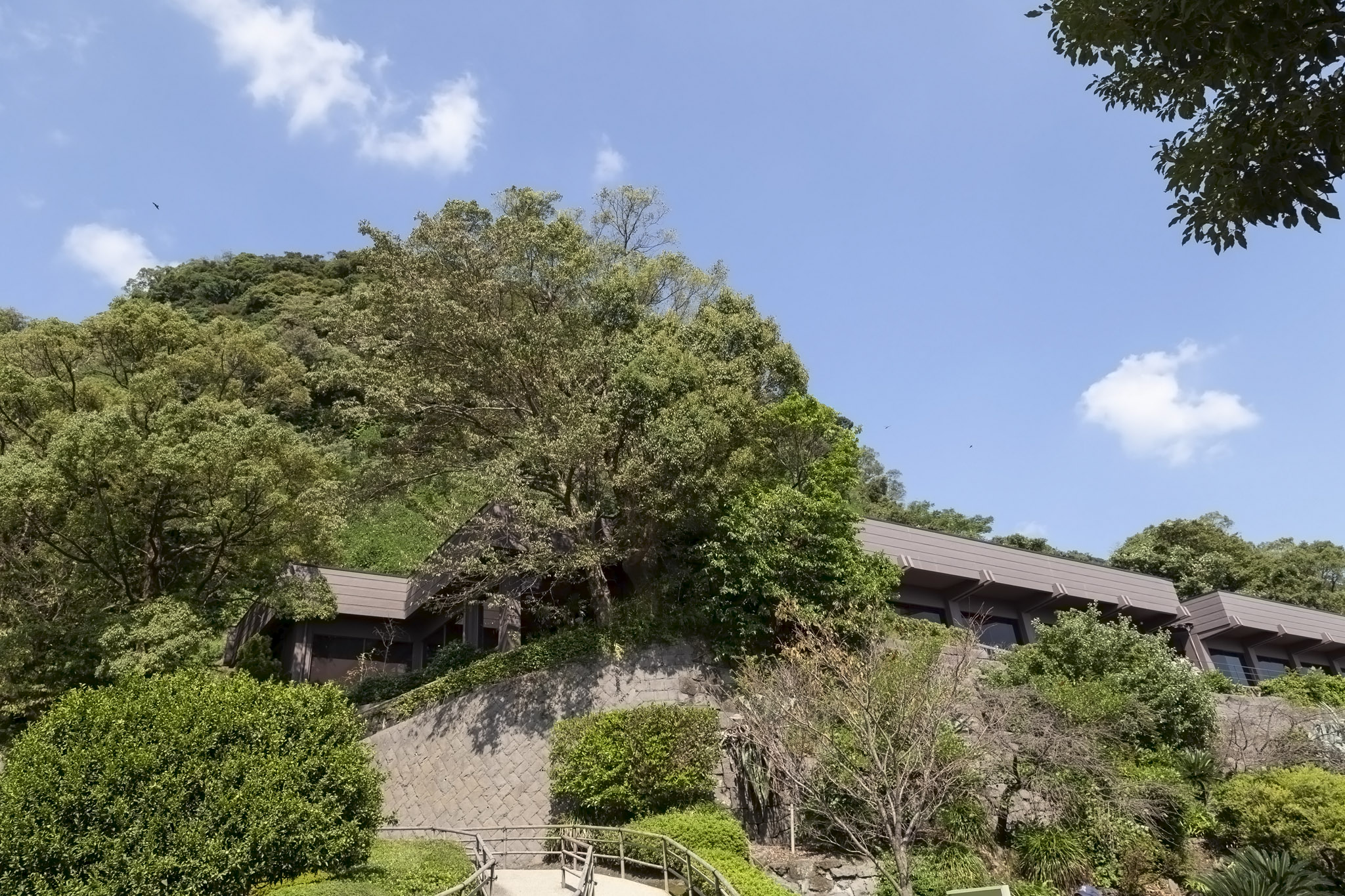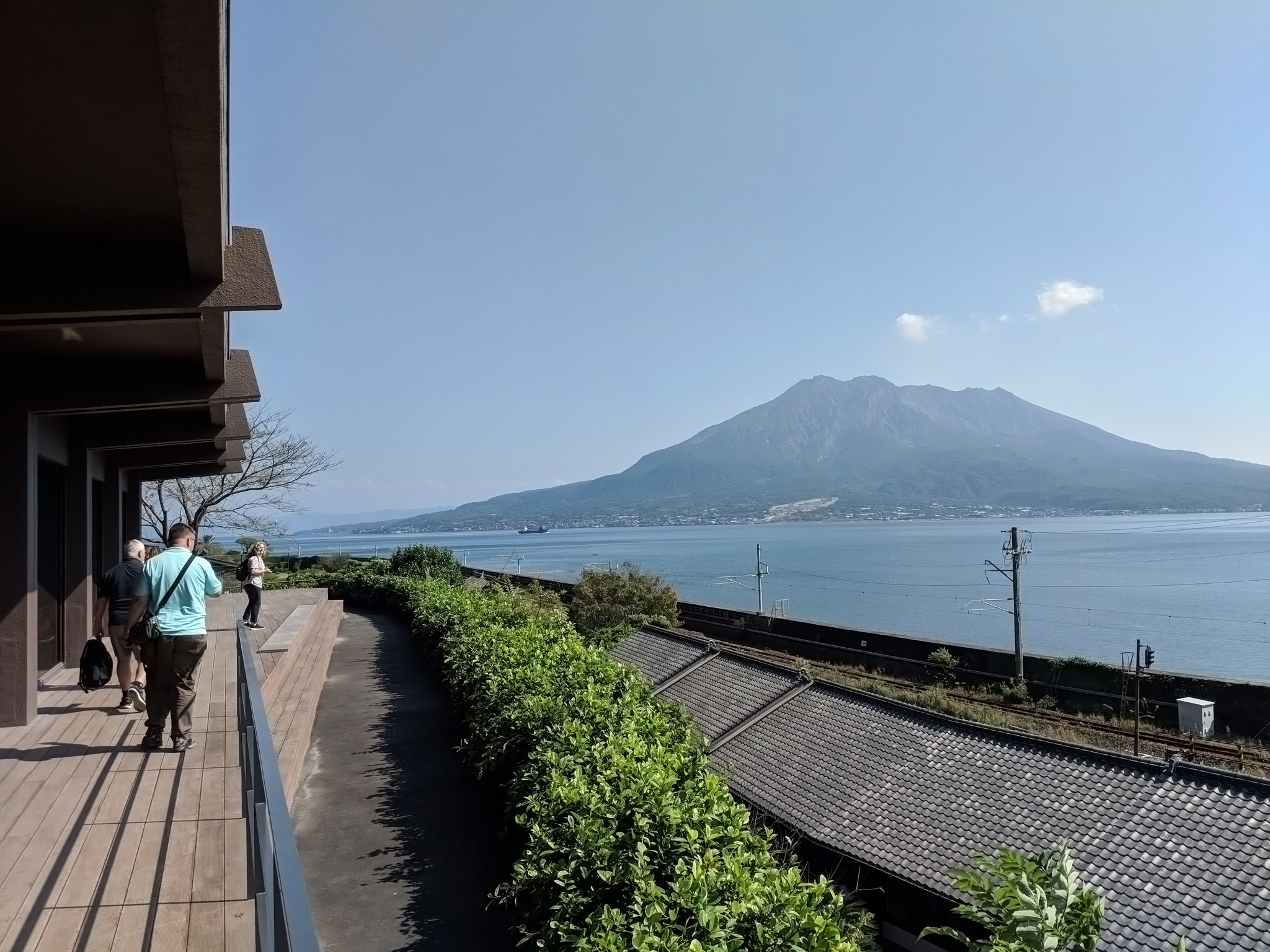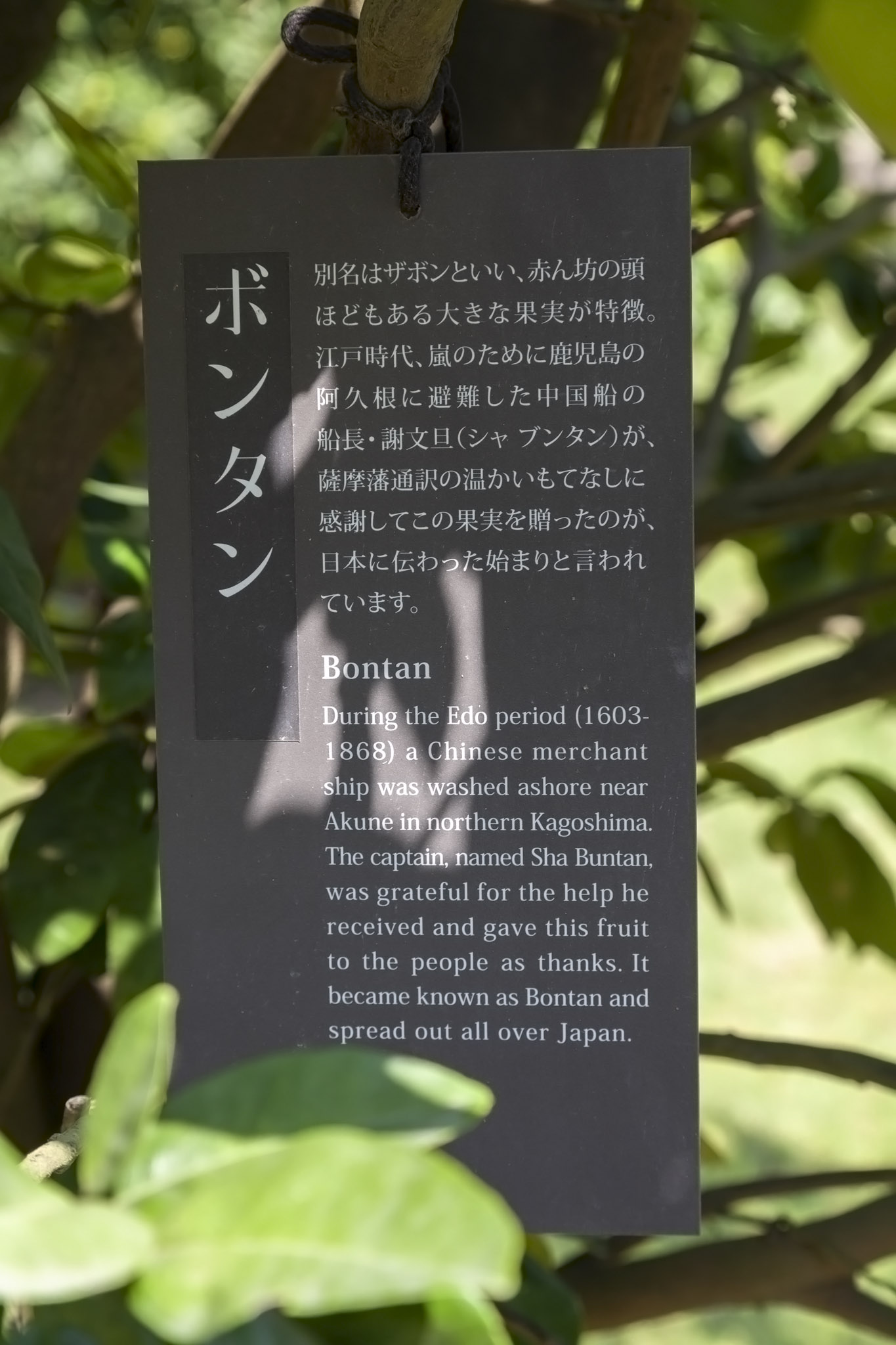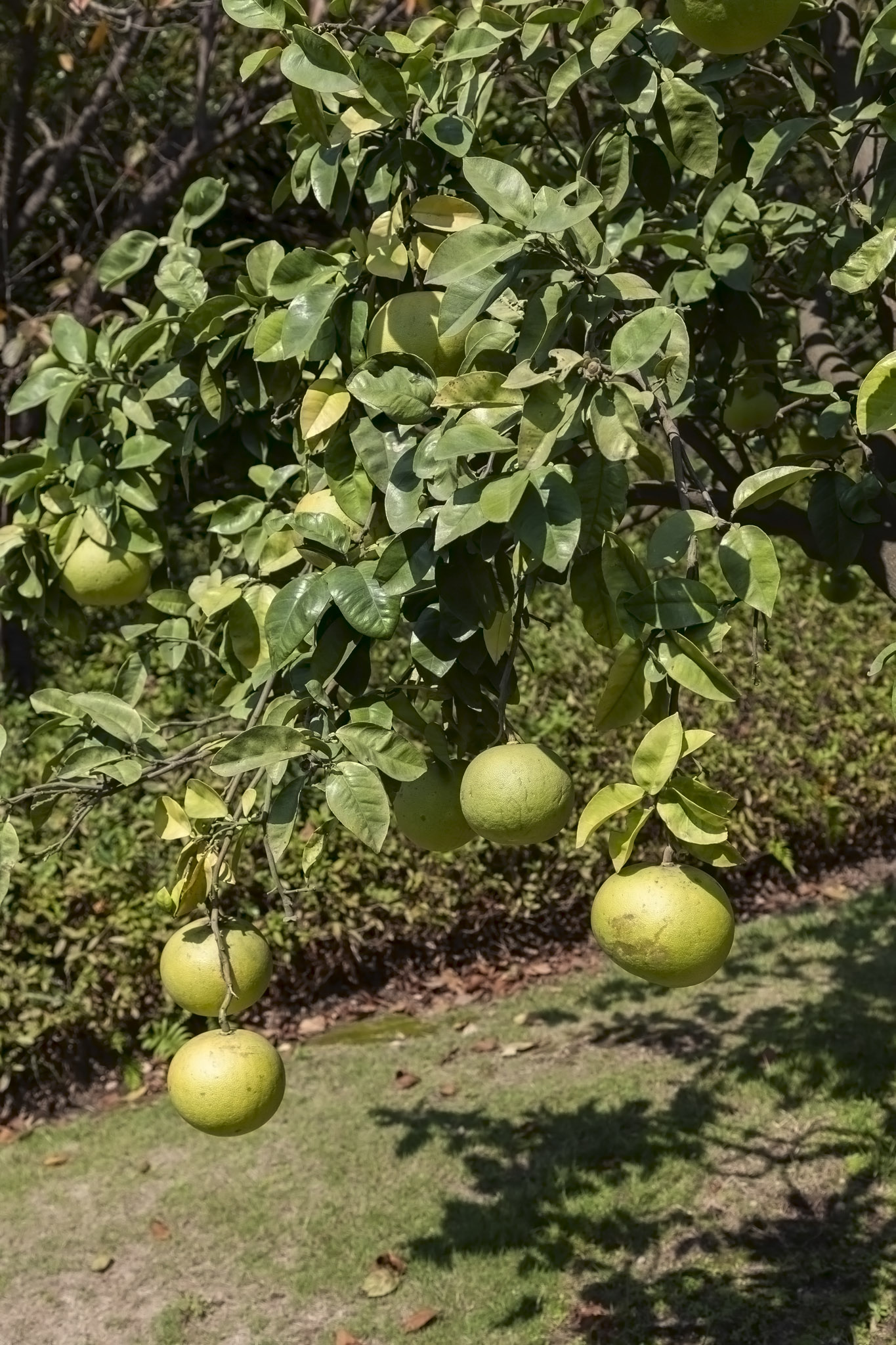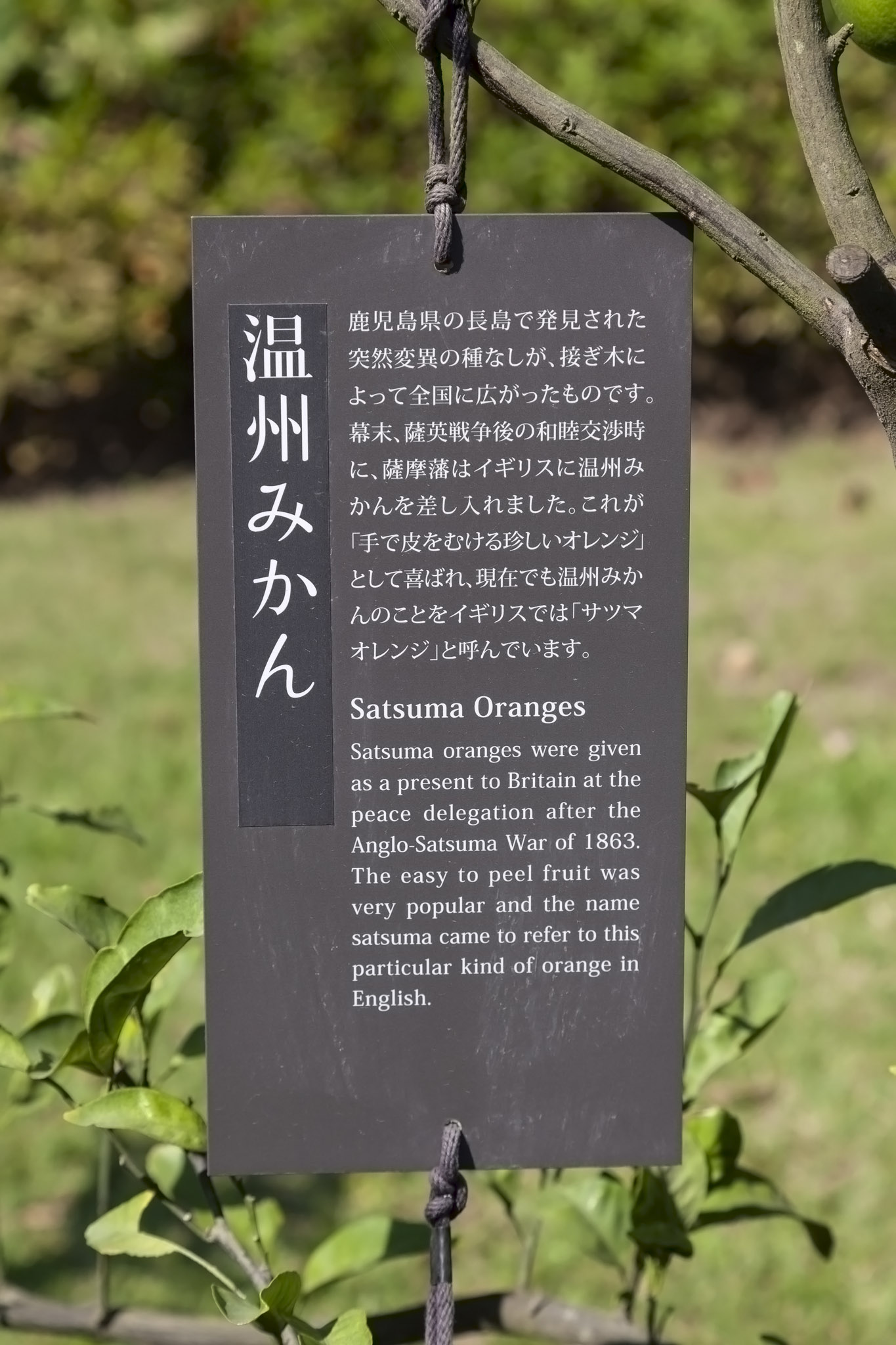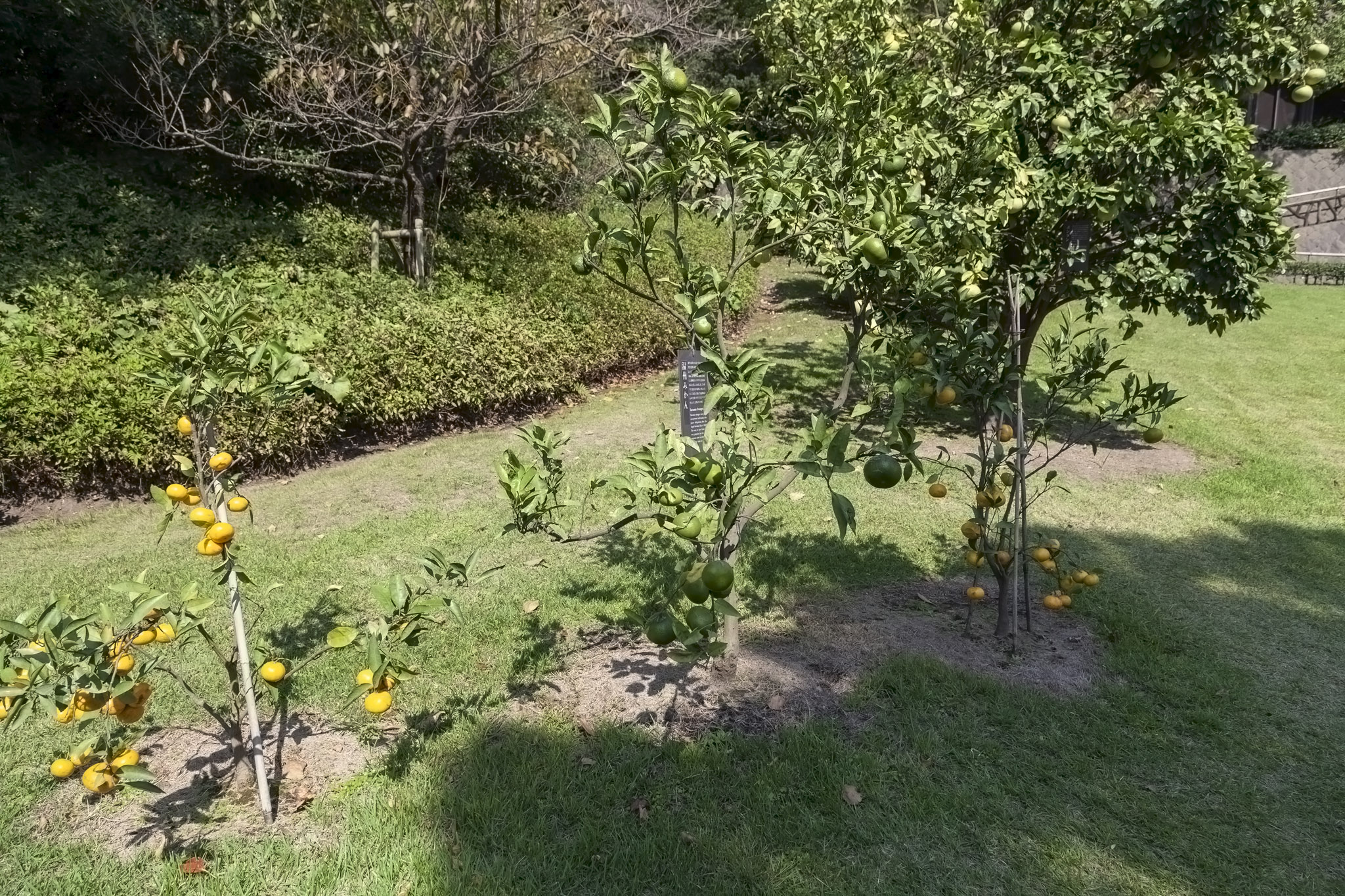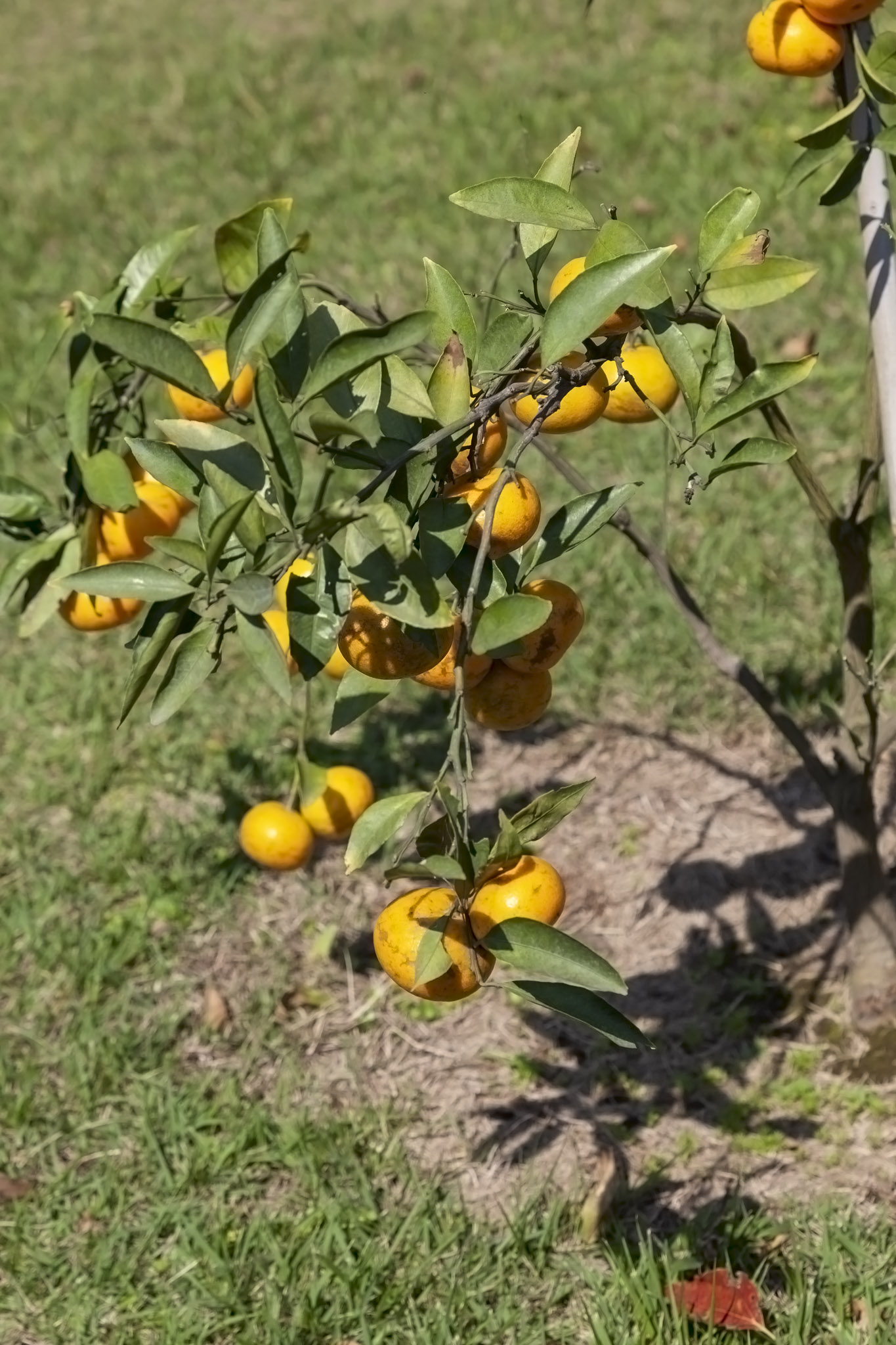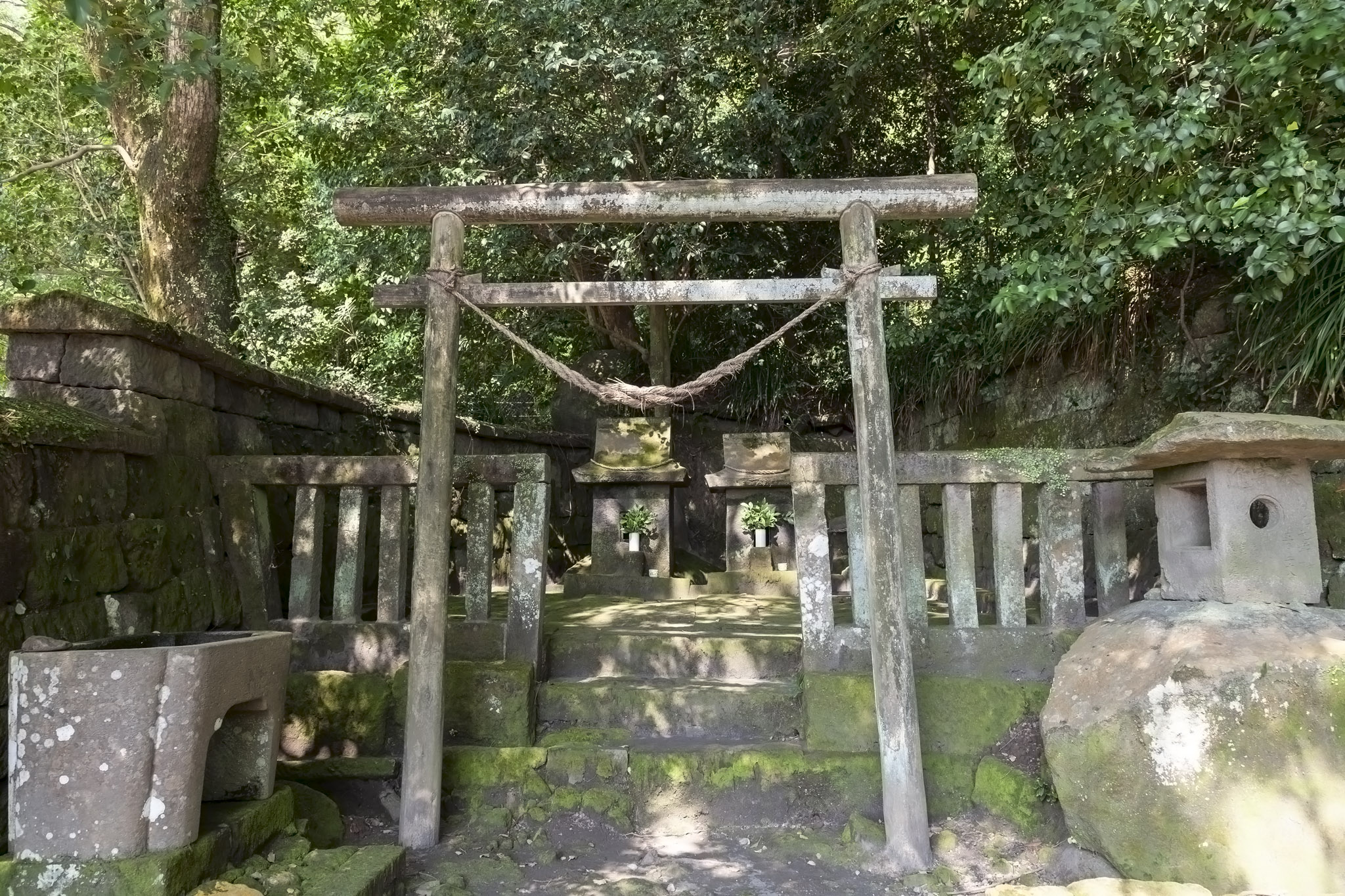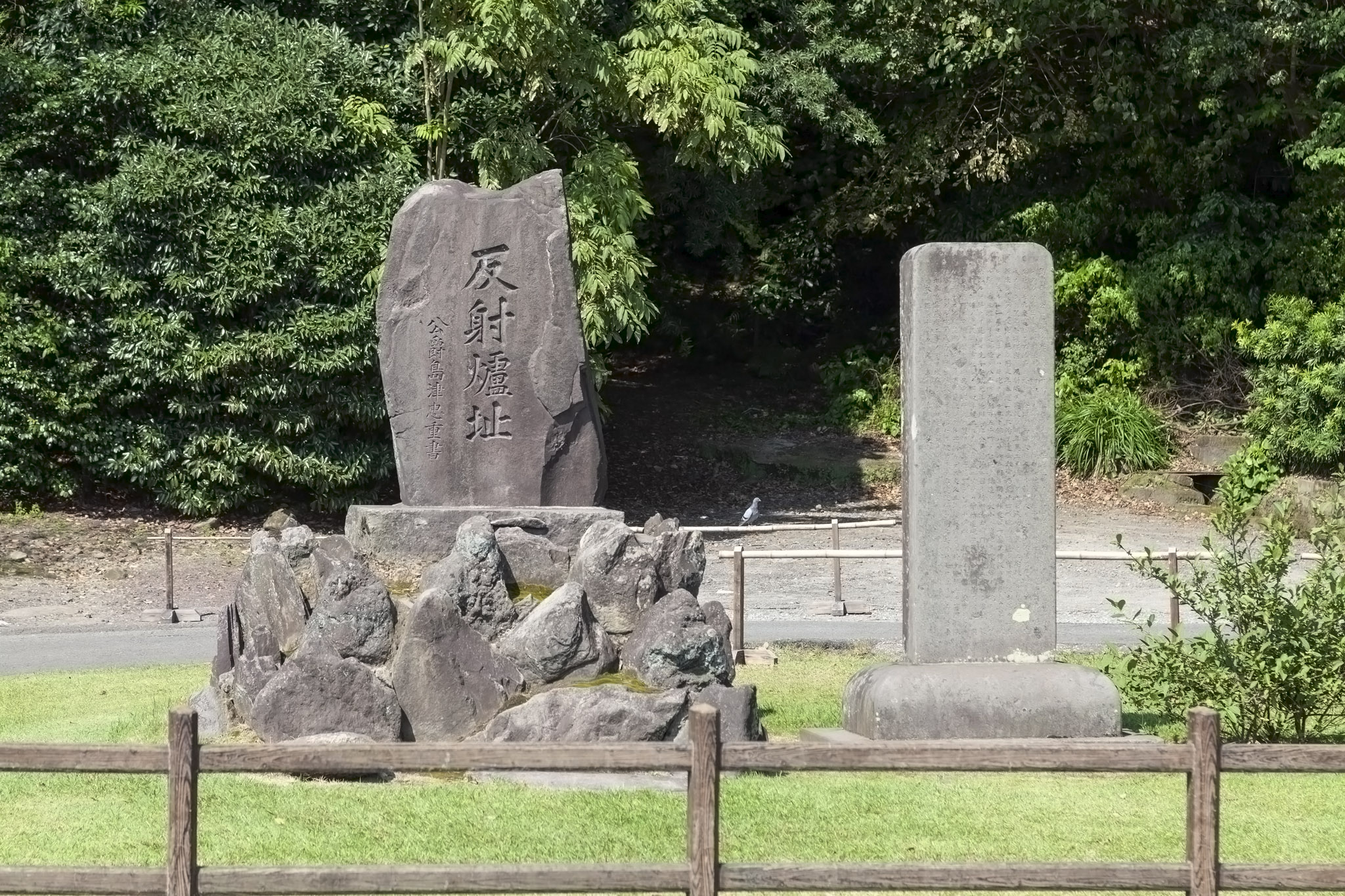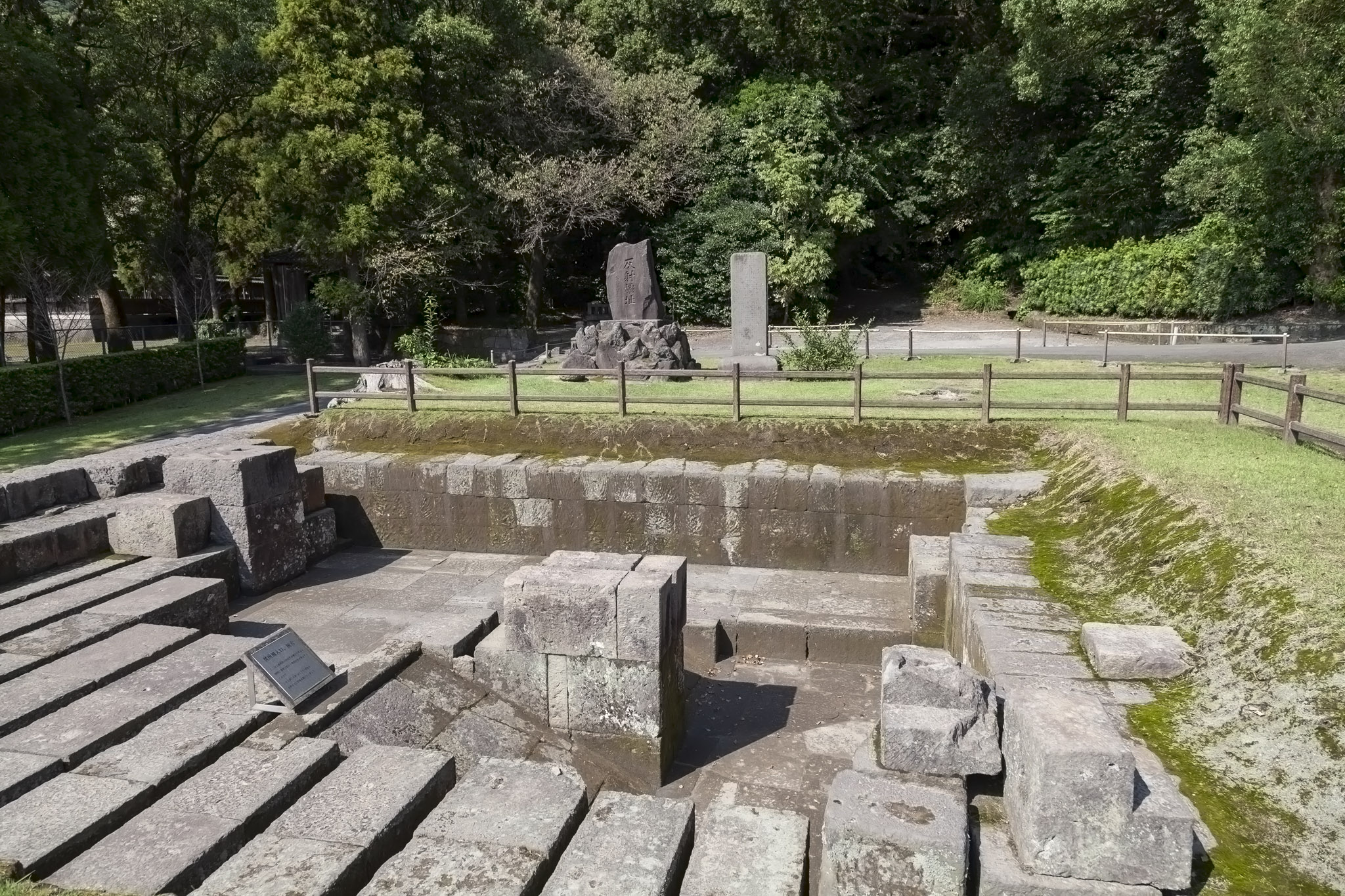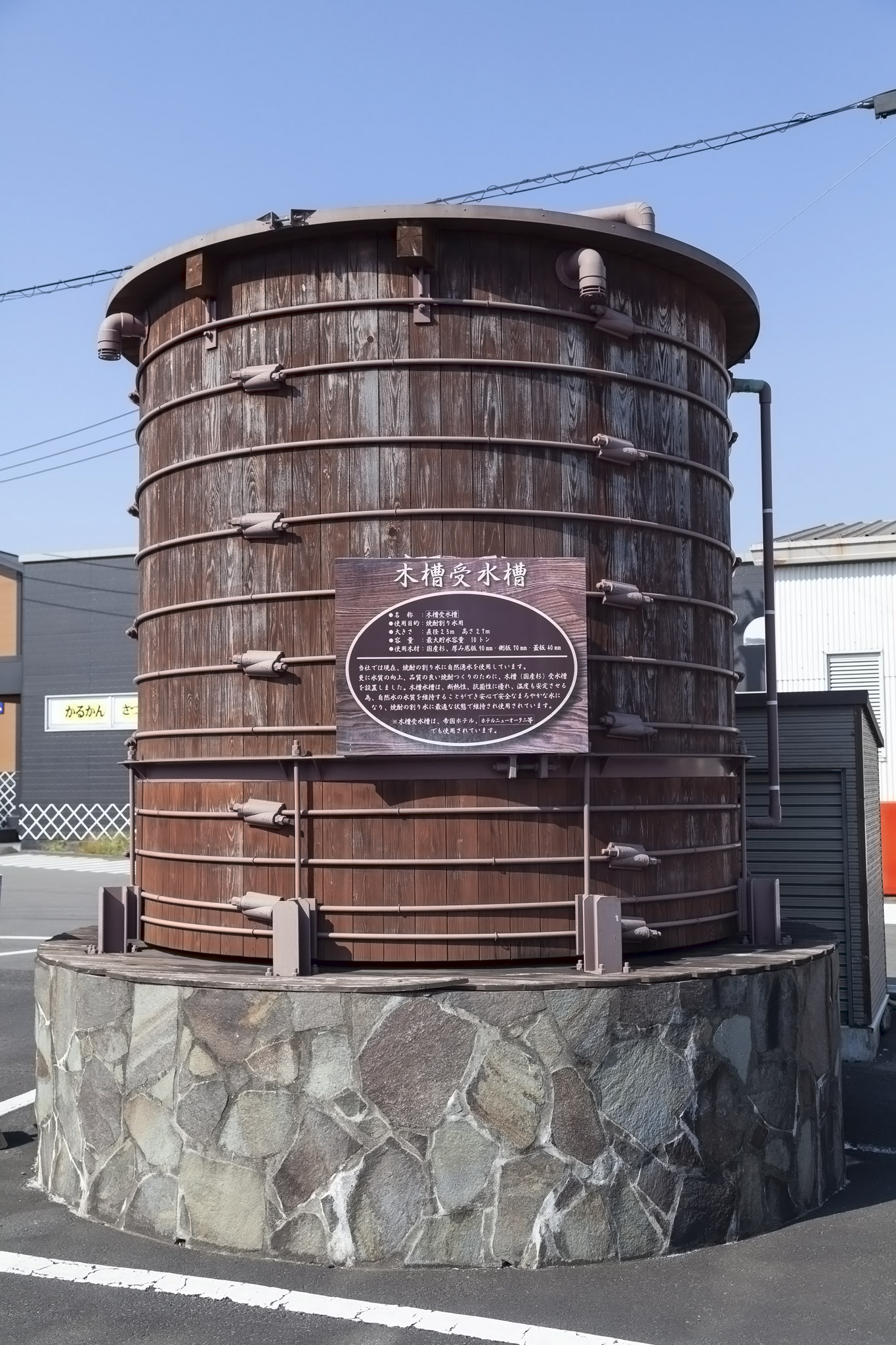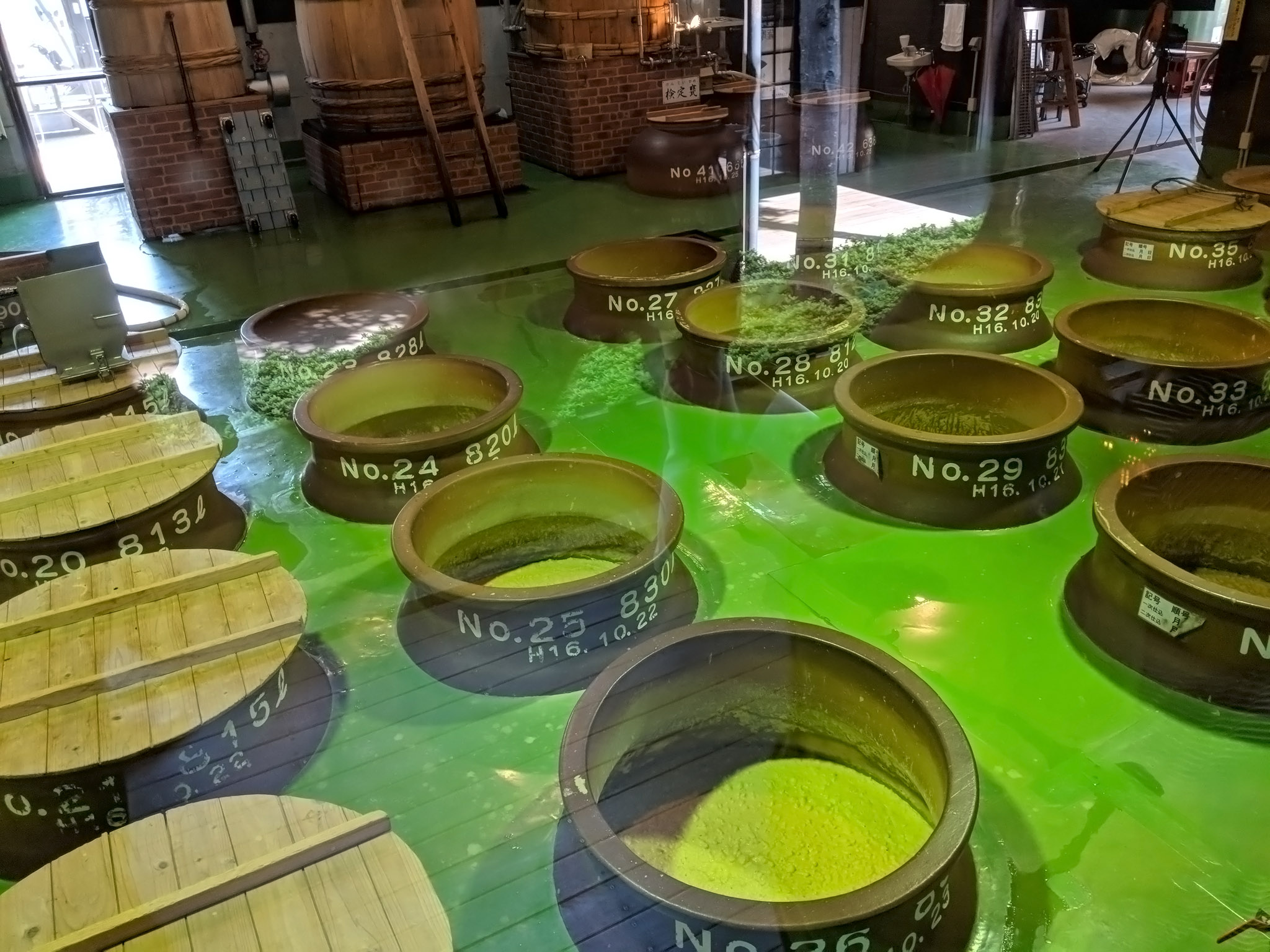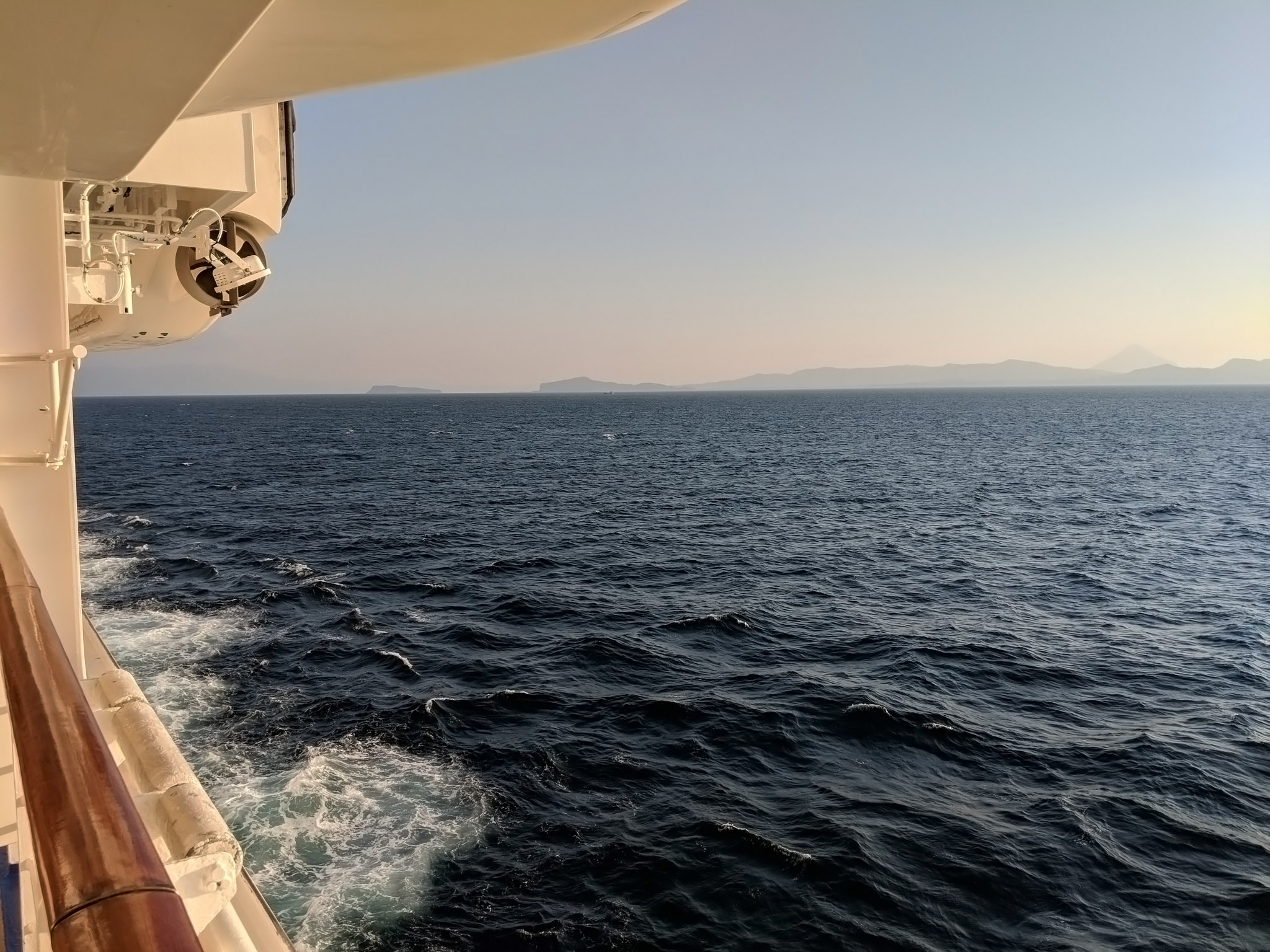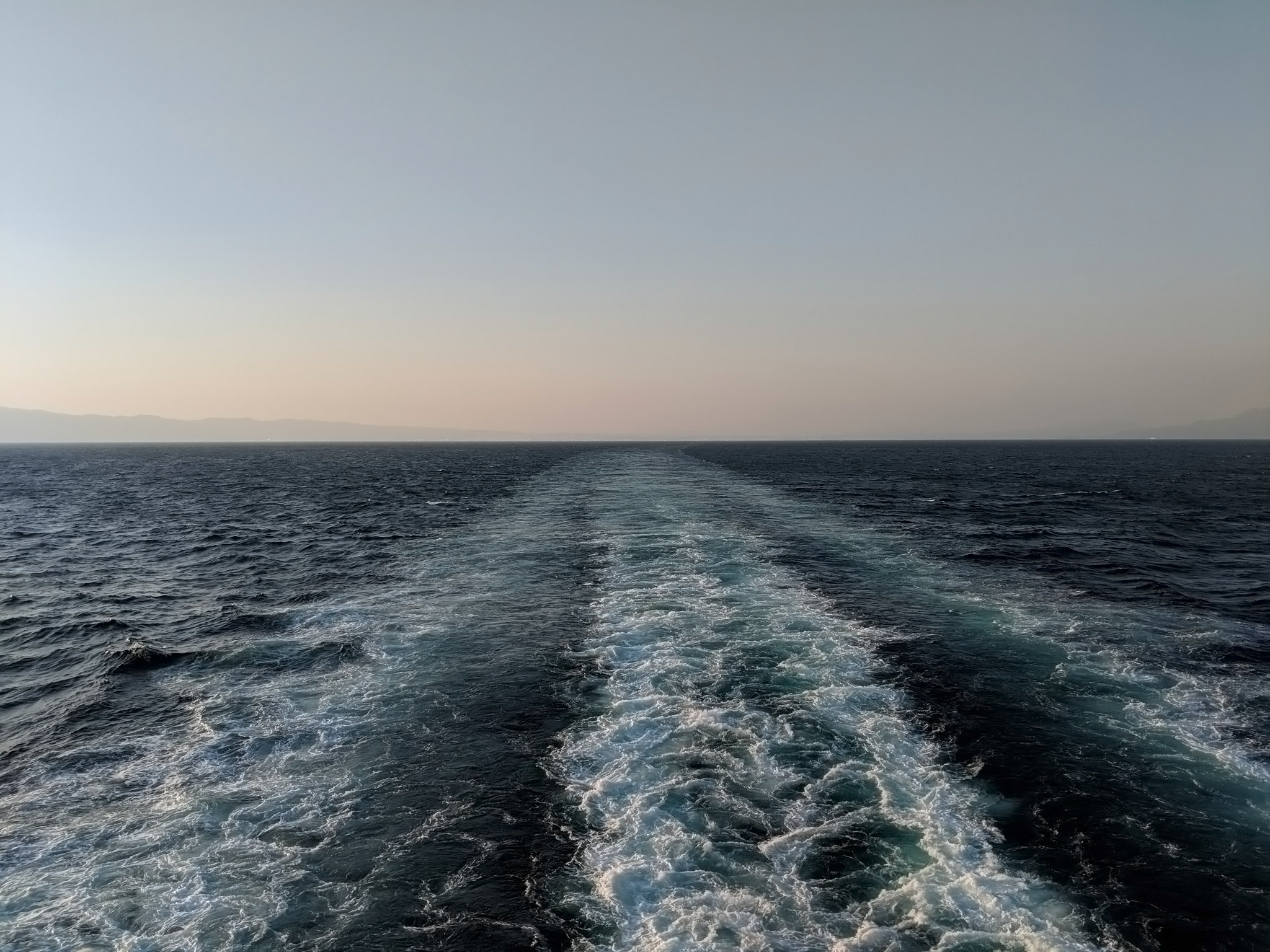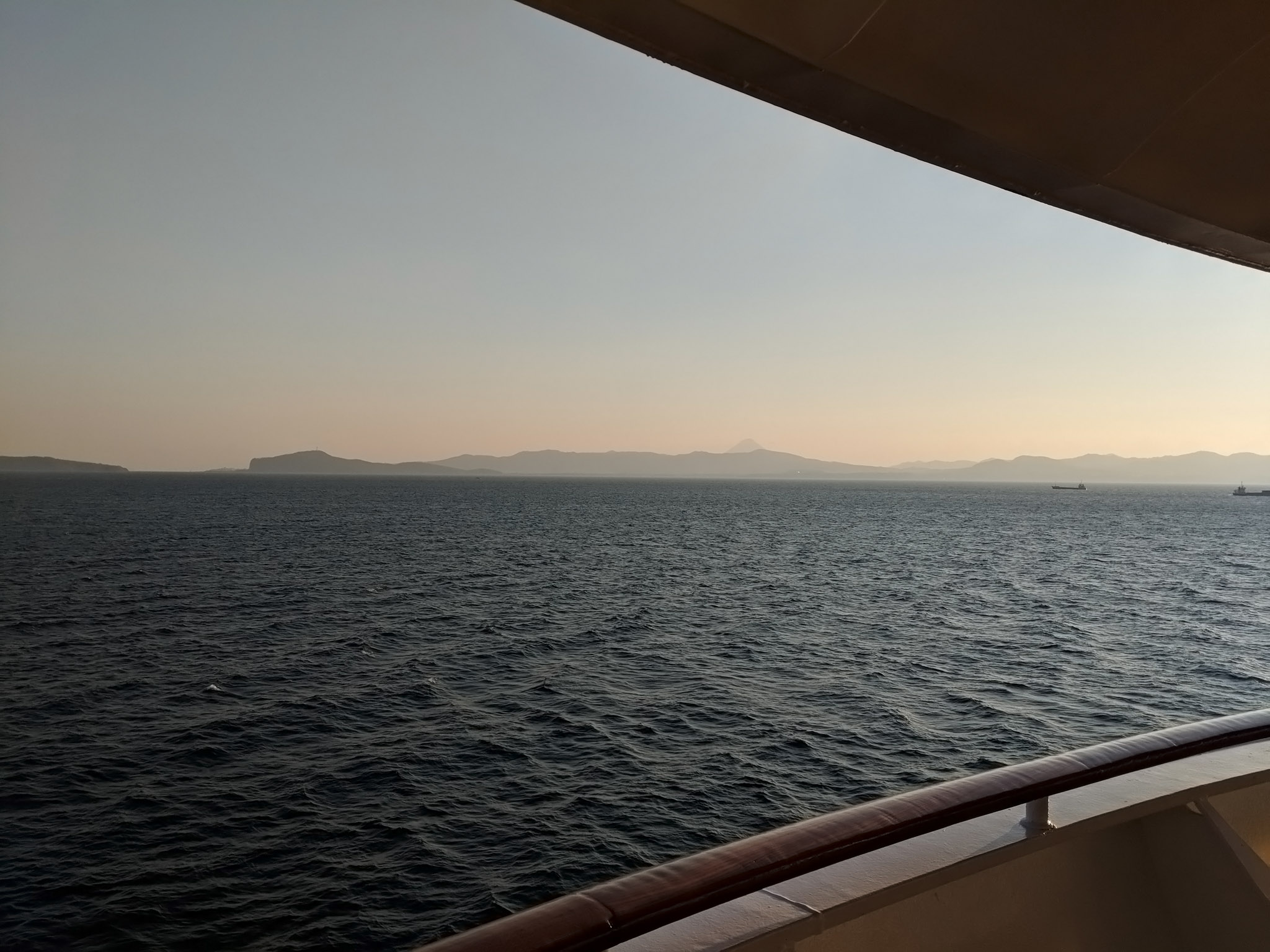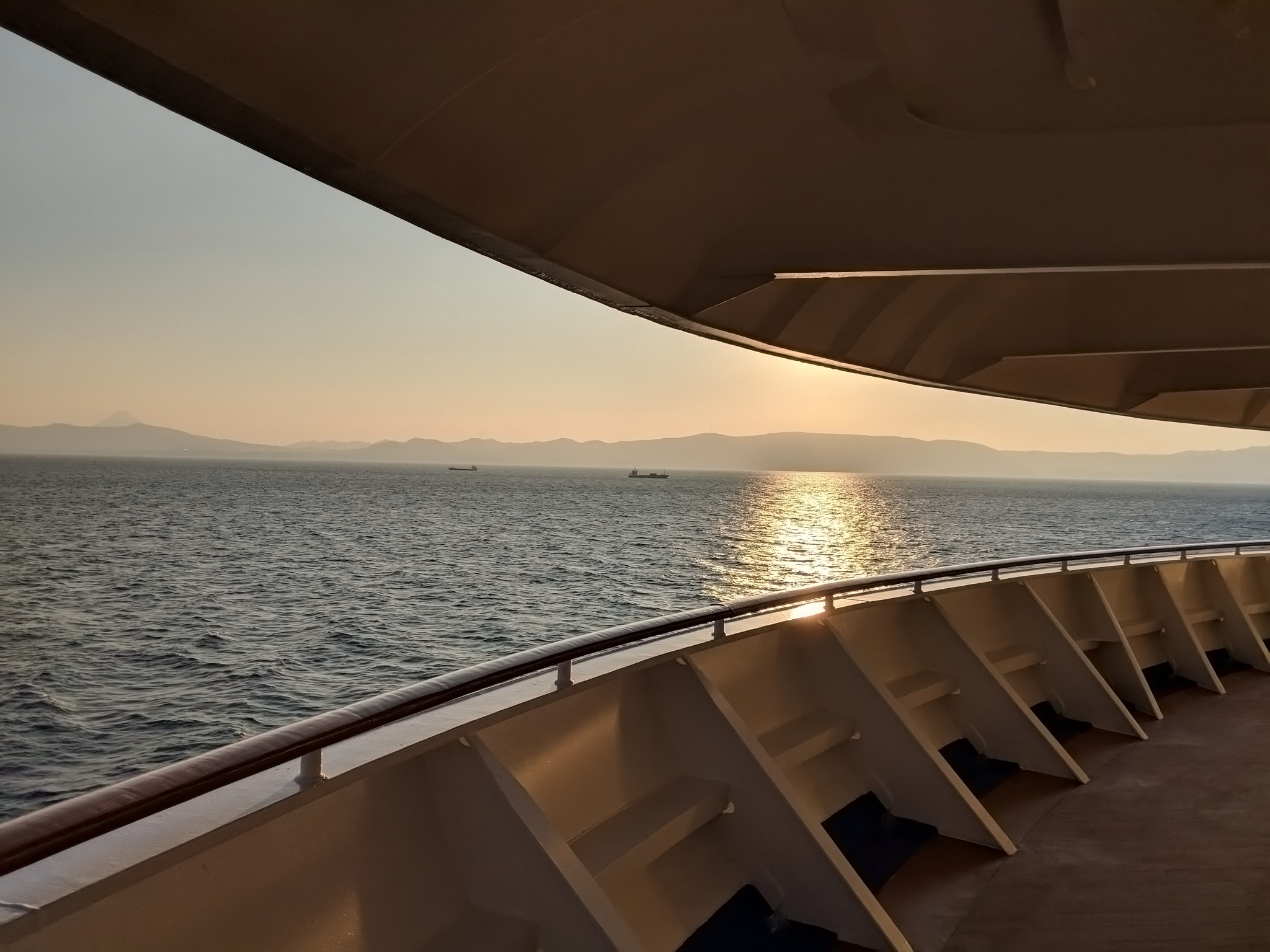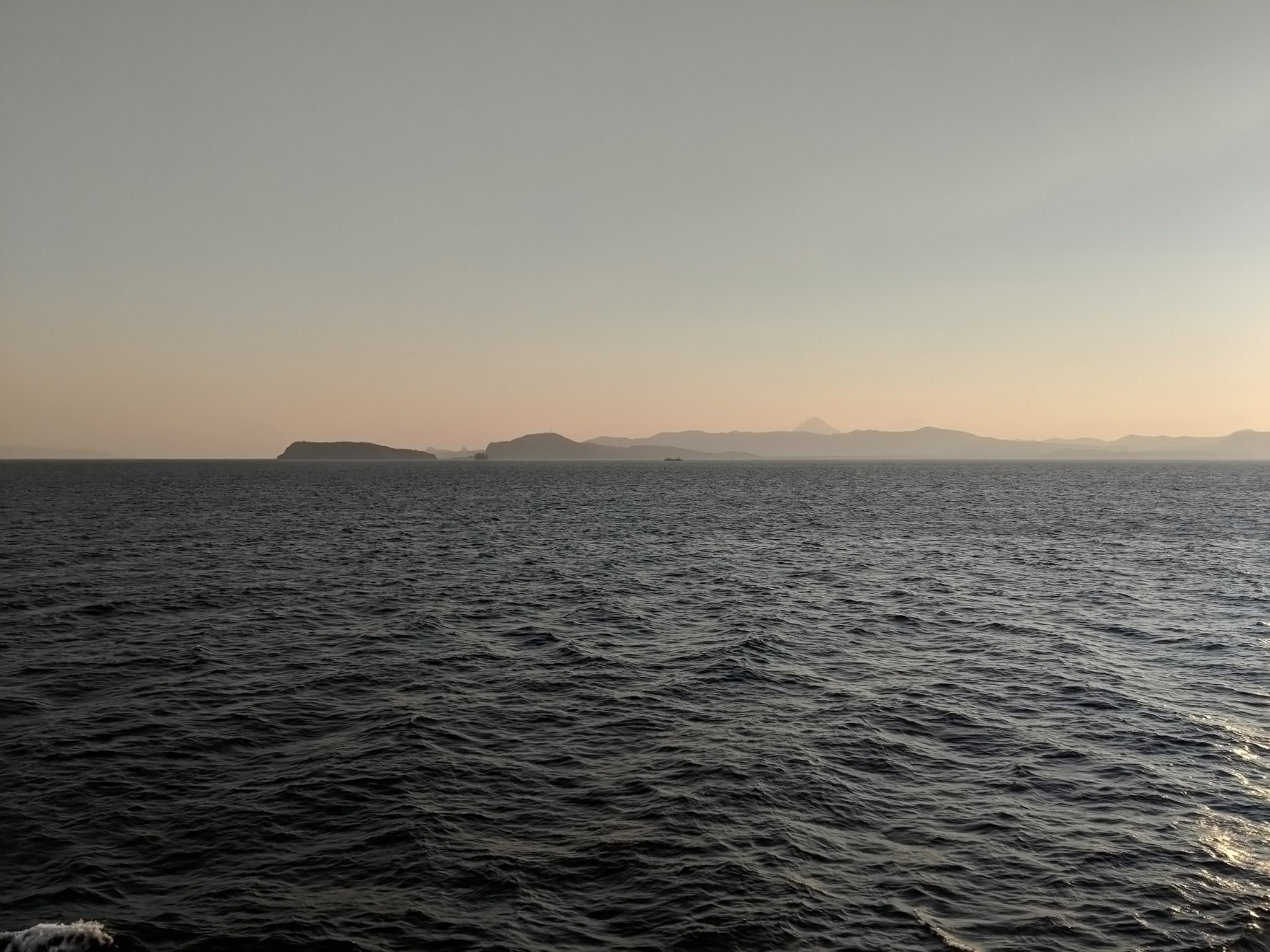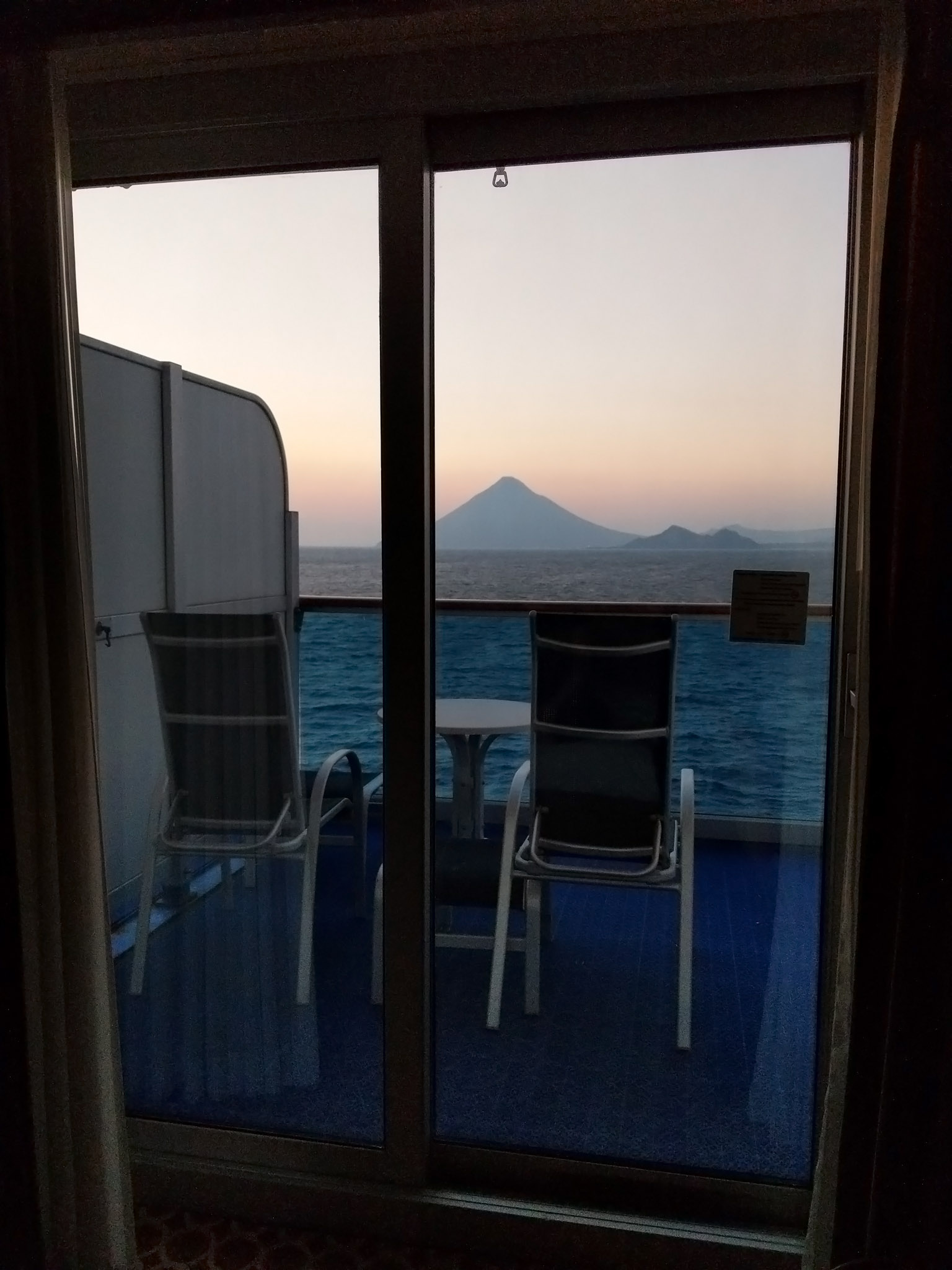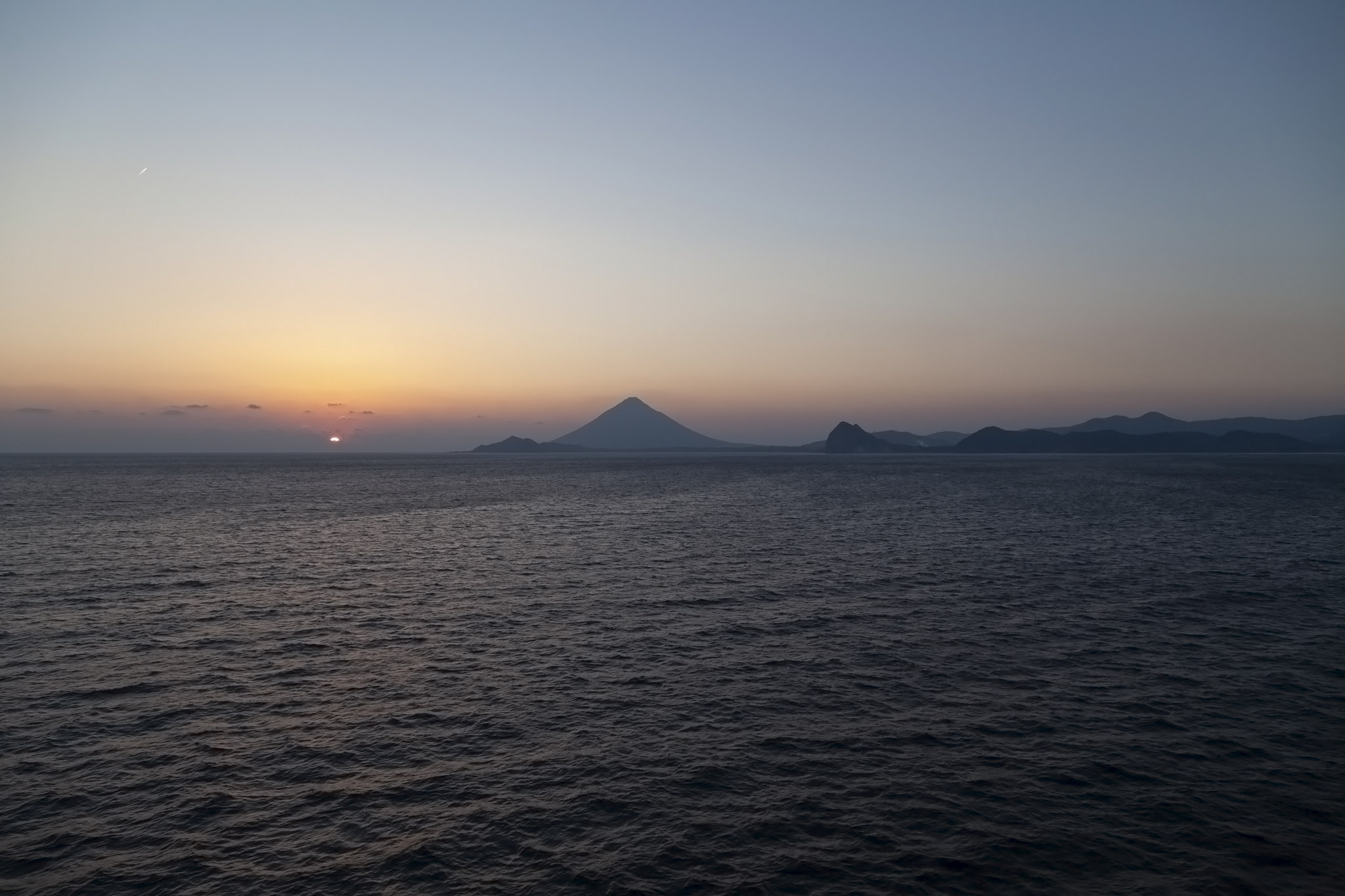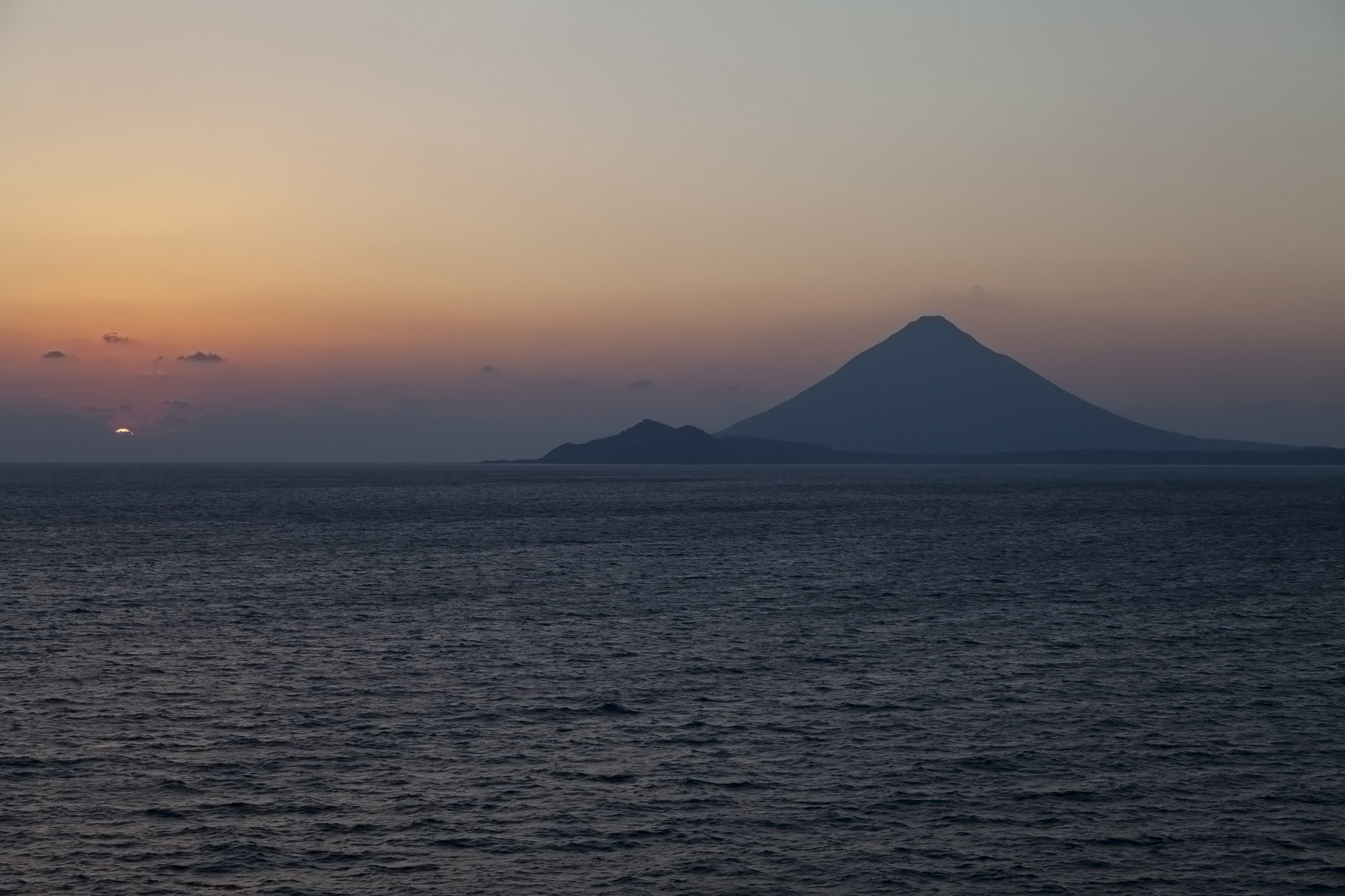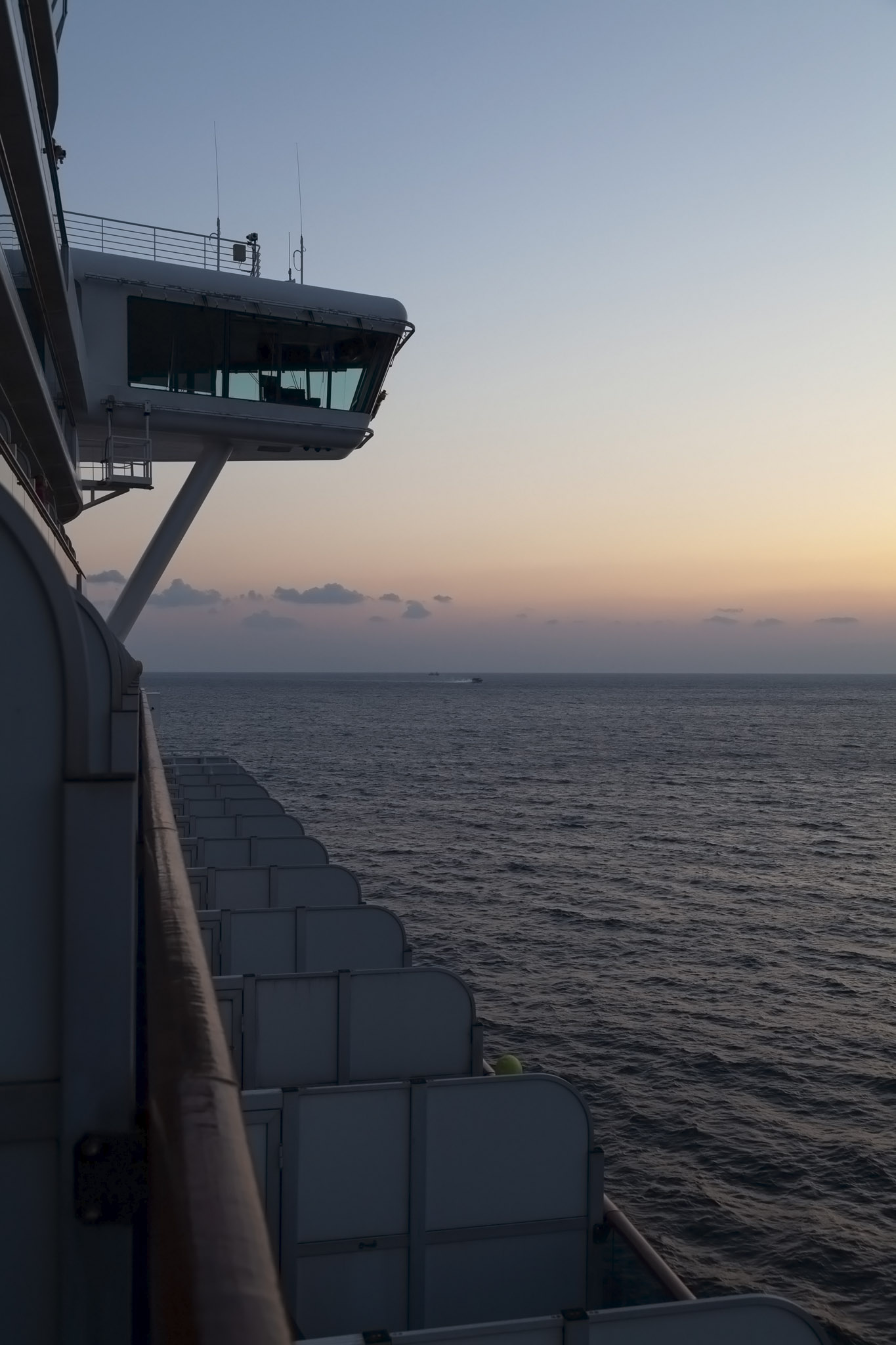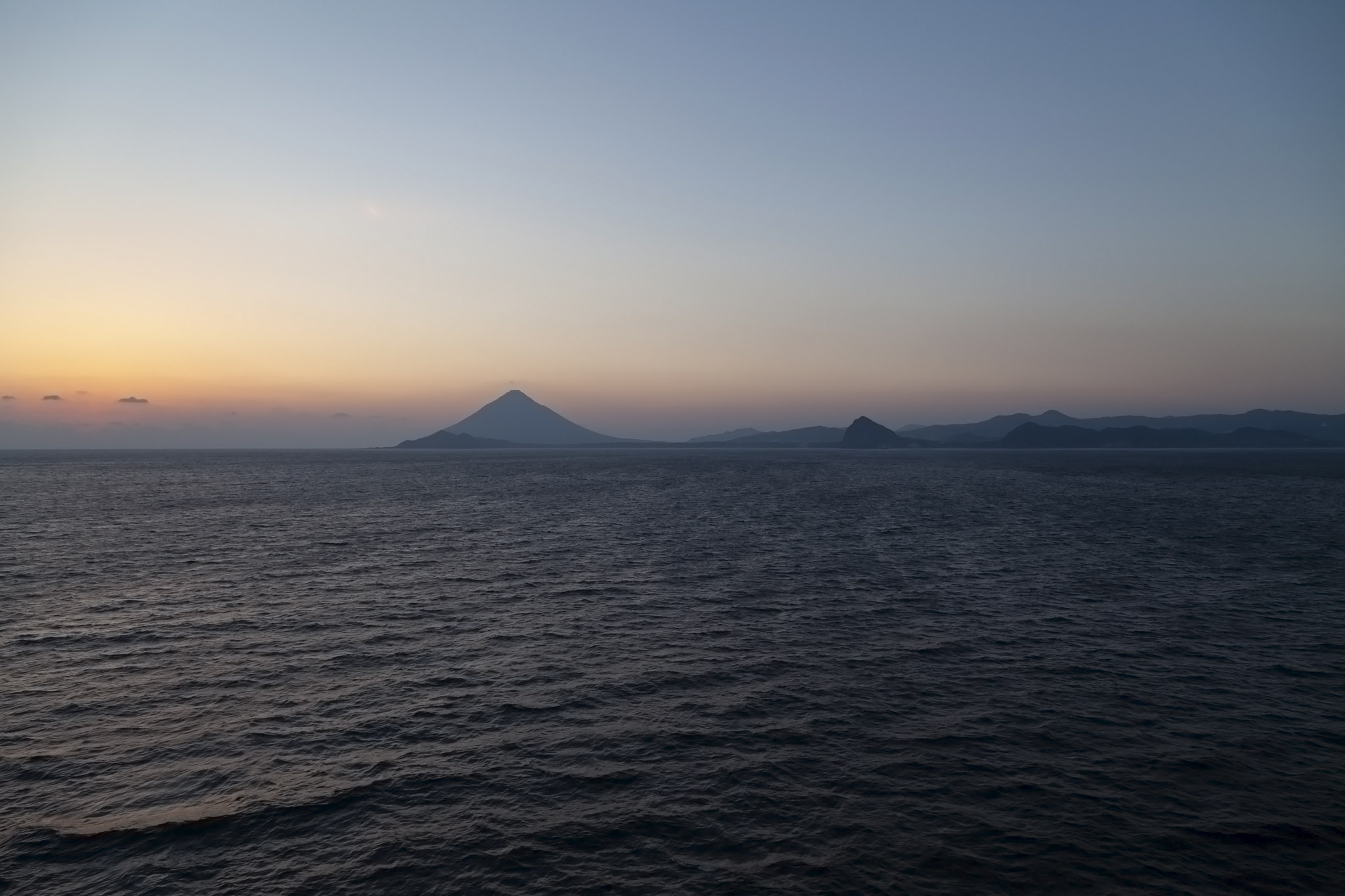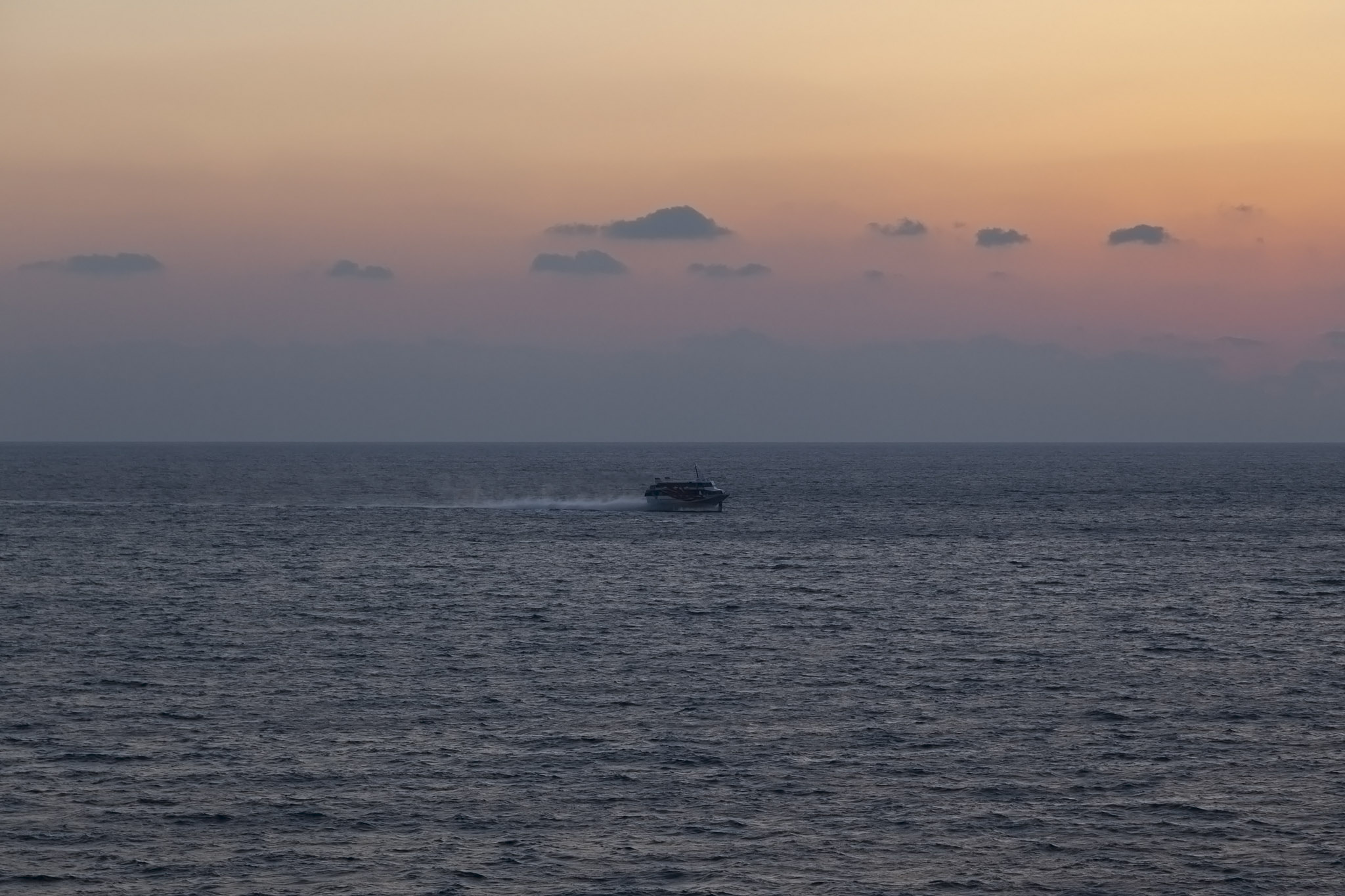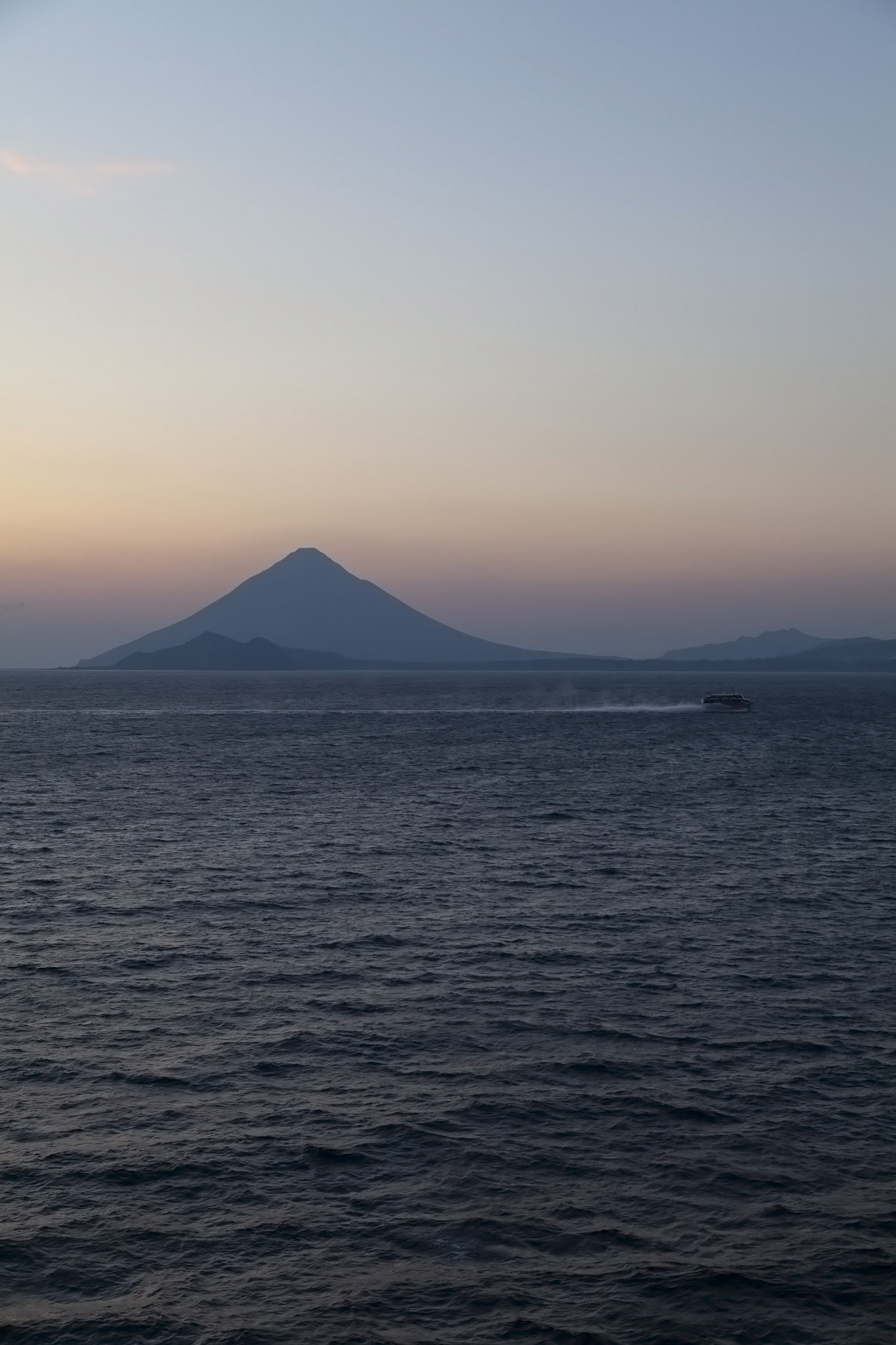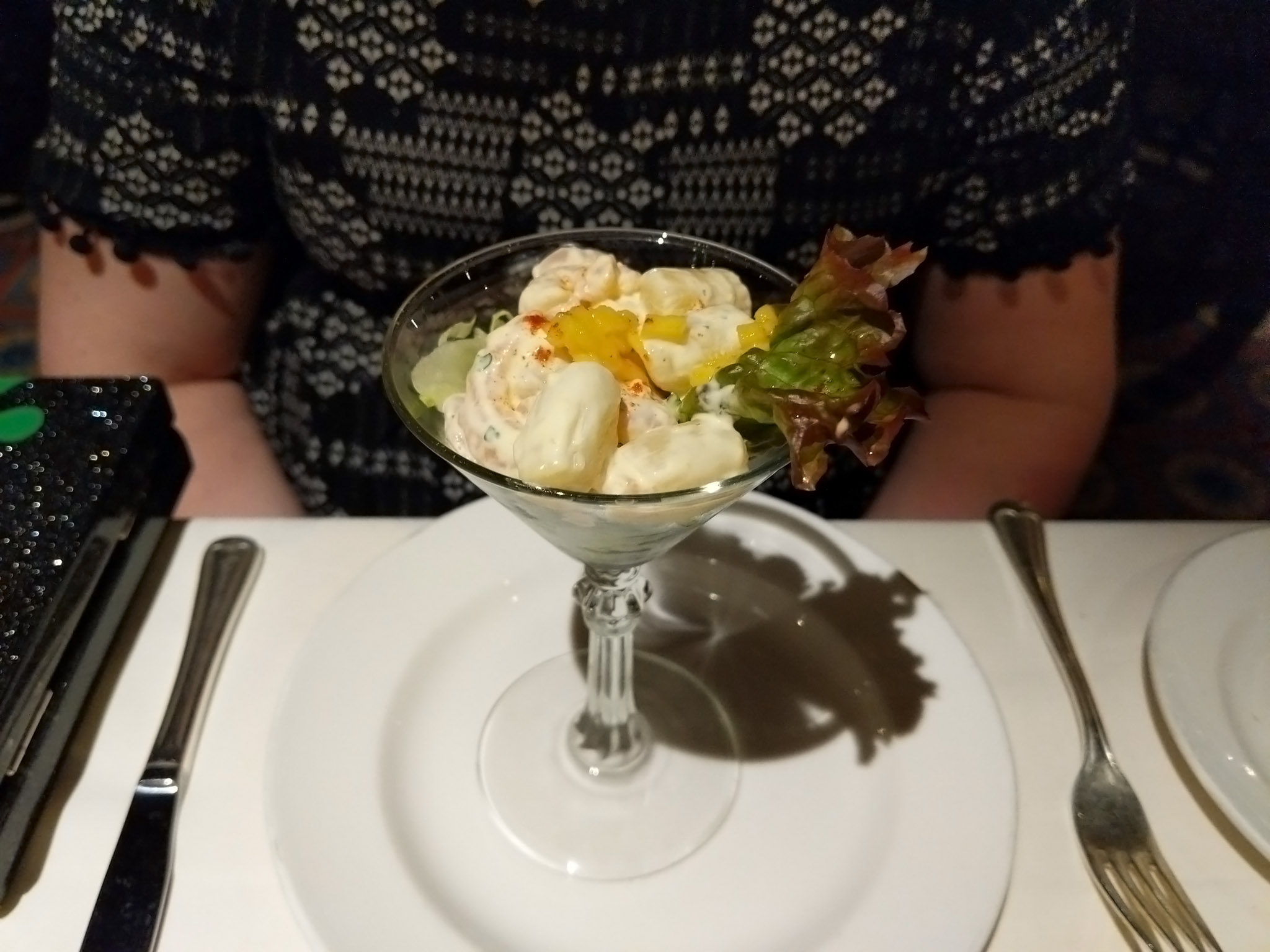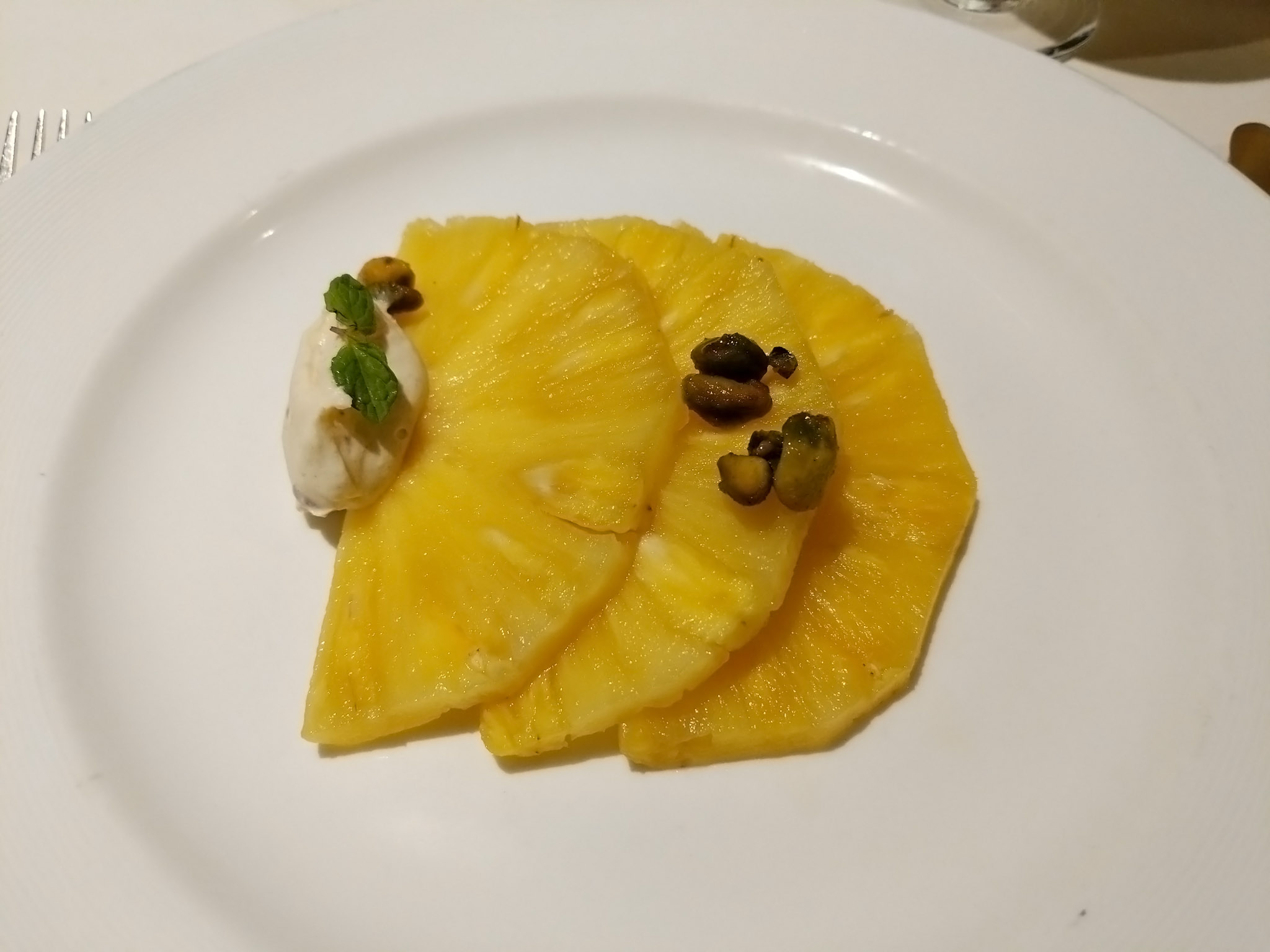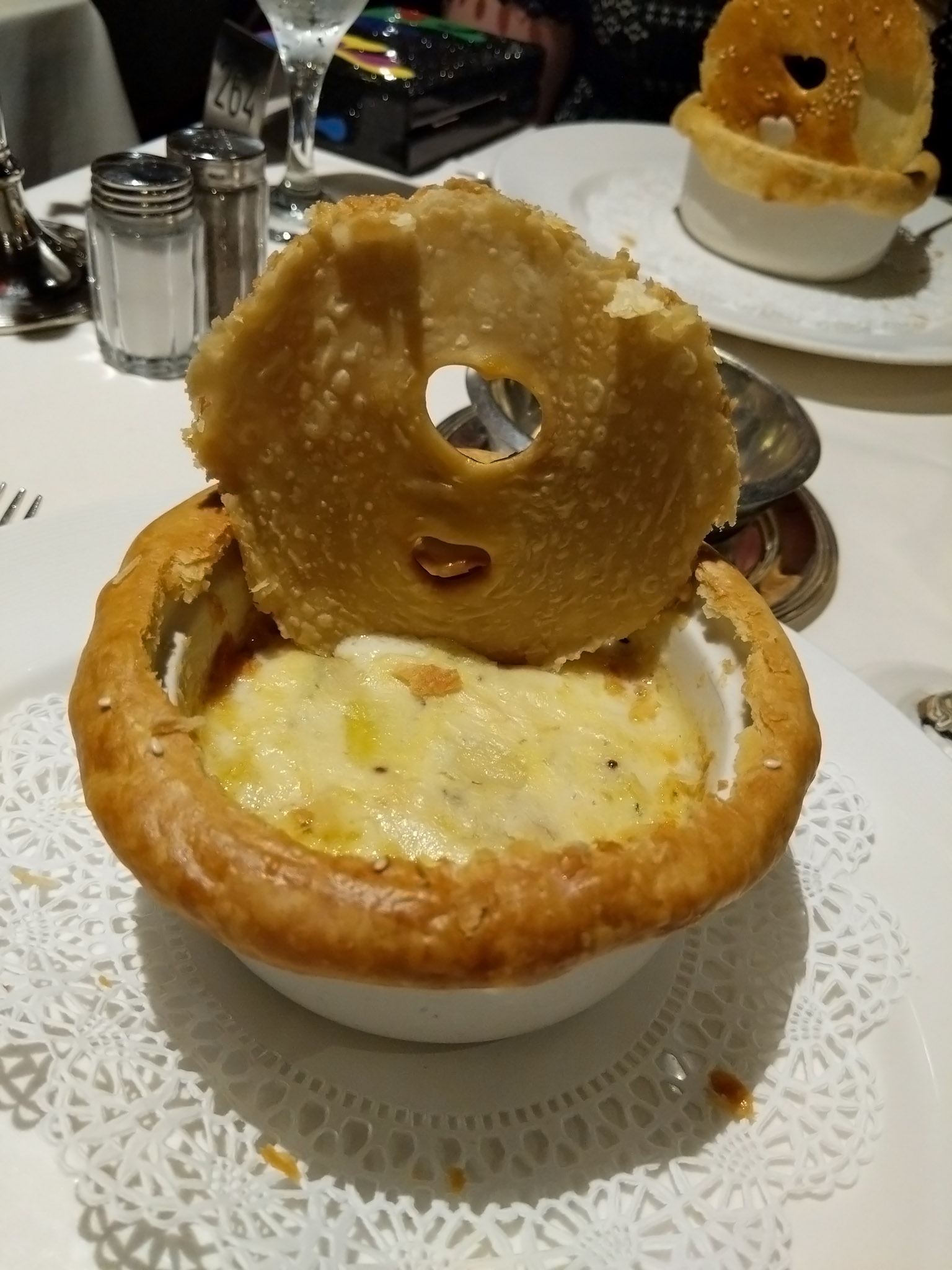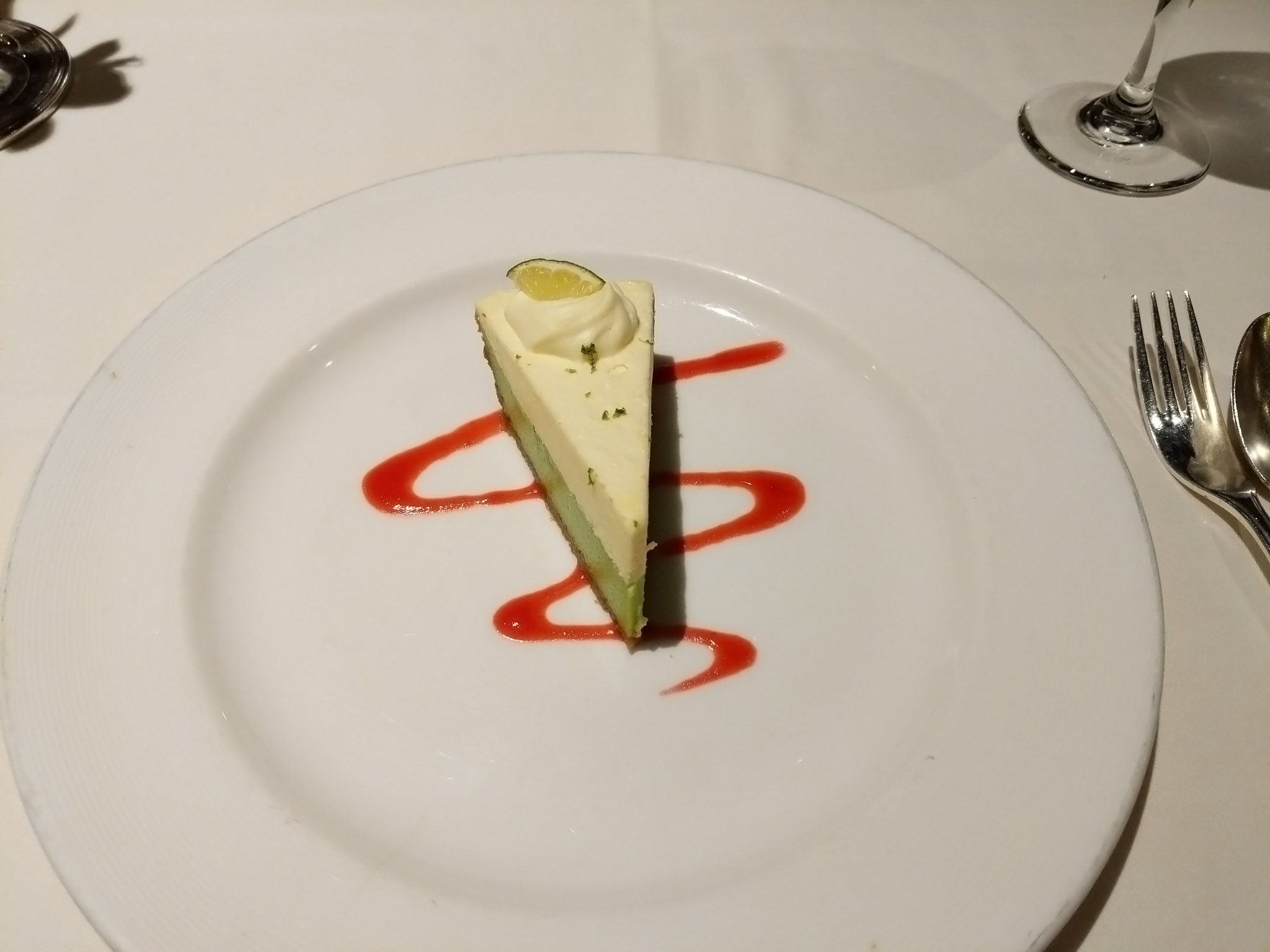Our full day excursion during our visit to Kagoshima, Japan was essentially split into two parts. The first part of the day had been spent taking the ferry to Sakurajima Volcano and the Arimura Lava Observatory before returning by the same mode of transport back onto the mainland. Here, we took a short drive – no more than about half a kilometre – northwards to the home and gardens of the Shimazu clan, Sengan-en. Close by where we parked up was a Shinto shrine.
Shoko Shuseikan Museum
Before we hit the main reason for our visit, the gardens, we took a look around the Shoko Shuseikan Museum. During the 19th century Japan was in a self-imposed seclusion from the outside world. Kagoshima was ruled by the Shimazu clan, the head of which realised that Japan was in serious danger of being completely left behind by foreign nations. Against the orders of the ruling classes a number of Shimazu clan leaders with some western leanings in education and science, including Shimazu Nariakira, set about a process that would eventually kickstart and copy the industrial revolution of Europe and America in Japan. Other notable firsts at this time include the first western-style shipyard and vessels to protect the city and region from expected invasion and the oldest surviving photograph in Japan is a portrait of Nariakira.
Photographs were not permitted inside the museum which included numerous industrial artefacts from the past century and a half, the naval history of the area, and Satsuma Kiriko crystal (more western-style manufacturing techniques were used to create this unique style of glassware). Naturally, this didn’t prevent some people on our trip taking loads of video while pretending they weren’t but that’s because people are scum (which you probably already knew) but as I’m not you’ll have to do with some shots of the exterior, the building housing the museum notable for being the oldest stone factory building in Japan.
Sengan-en Garden
Our look around the museum completed we then walked the short distance to the main attraction, the Sengan-en Garden. Our guide had explained to us that to the Japanese a formal garden incorporated not just what was within what we might consider the grounds of the garden but also all the views from it. This explained the choice of location of the Shimazu clan’s garden with greenery-covered cliffs behind and a wonderful view of Sakurajima volcano in front.
There were a few ways into the gardens with the Red Tin Gate traditionally being used only by the clan lord and heirs.
The house and gardens were built around the middle of the seventeenth century with various clan heads making changes and additions as the years went on including the introduction of bamboo from China in 1736 which later spread throughout the rest of Japan.
Chinese influences also came from the name of the gardens, derived from the birth of Taoism in Long Hu Shan, China, and the Senjingan, carvings in the surrounding cliffs that are unusual for Japanese gardens.
While our guide gave us some more of the history of the gardens, pointing out features like the carvings in the cliff along with general explanations of the Japanese philosophy of gardens in general, we were distracted by the appearance of a woman in a traditional kimono with full make-up, the centre of some photographic attention by people accompanying her as well as by several of us. Indeed, some of our group walked right over to take photos of her close up which she didn’t seem to mind but which felt a little presumptuous to me so I made do from a respectful distance. We were told it was likely she was being photographed for her wedding but we don’t know for certain.
Another distraction in the garden was the abundance of flying things. Specifically, dragonflies and raptors of some description. I’m not a birdwatcher so that’s about as close a description as I can get and the assumption is that their main diet was the dragonflies which were in huge numbers in the air (rather difficult to photograph, I did manage to find a dead one, though). I’d estimate we saw in excess of a hundred dragonflies zipping around the gardens so if you’re a fan of the insect then this is certainly a place to come and see them.
We were then given some free time to walk around the gardens on our own before we were due to meet up for lunch. The Sengan-en gardens cover 12 acres and include a hiking trail taking you up the cliffs if you want. We didn’t have enough time for that particular activity so limited ourselves to the main area, following paths that passed by and over streams and other water features, past interesting rocks and remnants of industrialised additions to the garden area, but mostly just between cool, shady trees glimpsing gorgeous views across Kinko Bay to Sakurajima.
Our walk also introduced us to some other fauna, these being butterflies, lizards, …
…and spiders. Lots and lots and lots of big, yellow spiders. A little bit of detective work identified these spiders in Sengan-en as Nephila clavata, a popular orb spider in the country because of its bright colours. The photos don’t do them justice because I was only prepared to get so close but some of them were about the size of the palm of my hand. And once we actually spotted one we realised they were everywhere. Between every bush, in every tree.
It was the ones in the trees that were most problematic for my wife (who lies definitely more towards the completely arachnophobic end of the Don’t Like to Abject Terror spectrum when it comes to arachnids (I’m more jumpy, wary, but ultimately cautiously fascinated by them)) because the fear that one might drop on her – especially after I spotted one moving about to build its web right above her head – was so much she walked a less interesting path than me to meet up as I clambered over rocks to walk through Kyokusui, a specially-constructed part of the garden designed to host a poetry competition.
Together again we carried on a mostly circular route that brought us to the Oniwa Shrine, apparently the luckiest shrine at Sengan-en, itself composed of thirteen smaller shrines that were brought together in one place in the late-1800s.
Not far from that shrine was another one, this being the Cat Shrine, one of only a few shrines in the whole of Japan dedicated especially to praying for the cute little buggers.
There is a restaurant in Sengan-en garden which was where we headed to next as it was about that time of the day that we were due to have lunch. Upon entry we were offered a choice of beverage: a cola drink or something weird. We chose the something weird. We’d spotted that it said Asahi on it and assumed this meant a nice, cold beer. Well, it was cold but nice and beery… not so much. Was it cold tea? Who knows? The food was a mix of soups, noodles, raw and cooked fish, potato things, herbs for adding flavour, numerous vegetables, and two lumps – one orange, one brown – of something. Everything generated discussions amongst our fellow tourists as to what we were eating with mixed sounds of approval and polite or not-so-polite rejections up and down the table but it was the orange and brown somethings that confused most people. On our table I was the first to try them and would describe them as what you might get if moderately sweet fudge made babies with a pencil eraser. I didn’t mind them and it’s just one of those things that if you’re travelling then you try the local food and drink because otherwise you might just as well have stayed home.
We had a little bit more time after lunch to explore the remainder of the gardens. Towards the garden exit there were a number of souvenir shops and an ice cream stall where we availed ourselves of some odd flavours, only one of which I can remember as that was sake.
Beyond there we came across several examples of the fruit grown locally. Of particular interest were the satsuma oranges, with Kagoshima being in the Satsuma province and this being where the popular fruit originated from.
The final point of interest in Sengan-en Garden prior to us leaving was the site of the Reverbatory Furnace. This was originally a 20-metre high furnace built through a combination of local knowledge and skills, western education and techniques, and diagrams in a Dutch book brought back to the region from overseas. The furnace was used to manufacture armaments to protect Kagoshima from seaborne attacks.
Sake And Shochu Distillery
That concluded our time in Sengan-en so we hopped back on the coach and only had to sit and wait for five minutes for two groups who were late getting back (sigh) before we headed off southwards for our final stop of the day, a sake and shochu distillery and shop which I believe was this one. The distillery was started in 1953 and uses traditional pot-potted and barrel-distilled techniques along with local water and produce for its many products. After a quick look at the pots and barrels we were led into the main shop were numerous free samples of shochu were on offer and that’s definitely an acquired taste based on our own experiences and the grimaces on many faces we looked at.
Shochu and sake and beers were able to be bought but we didn’t fancy any of them. What we did spot, however, was some local gin made with local satsumas. We had to pick that up.
“Ah, you must sign, yes?” said the man behind the counter, bobbing his head in a bow apologetically as I slid my card into the card reader.
I shrugged. “Yeah, that’s fine,” I said.
Suddenly he leaned back, shocked. “Oh, magic number, magic number!” he exclaimed loudly, causing a few heads nearby to turn in puzzlement.
I leant forward and entered my PIN. The look of surprise on his face at what I can only assume is a rarity when a tourist has a Chip and PIN card made my wife and I smile a lot on our way back to the ship.
Departing Kagoshima
For the second time in three days we left a Japanese port as the sun started to dip towards the horizon making for more glorious views. Unlike our departure from Yokohama before there were no crowds to wave us off this time as the location we were berthed at was far enough from the main part of the city to not attract anyone. Instead, as we’d been in one of the lounges having a late-afternoon tipple anyway, we headed out onto the promenade deck at first to look at the passing landscape.
From there we went back to our room in order to get showers out of the way and change for the evening into something a little smarter. The view from our room was lovely but it was, of course, considerably nicer out on the balcony. The peak you can see in the photos is Kaimondake Volcano and we thought it looked spectacularly pyramidal silhouetted against the setting sun.
The short video below (temporarily removed) contains some video from our morning’s visit to Sakurajima as well as footage from Sengan-en and some sunset cruising away from Kagoshima.
Dinner
To round off this lovely day spent in Kagoshima, Japan, a few photos from dinner that evening.
Looking ahead we would have a day at sea before arriving at the next port of Xiamen, China.
